THE MAGAZINE OF TRINITY UNIVERSITY SPRING 2018

“I was happy to create some cartoons for the Class of 1977 reunion and to be reunited with my former Trinitonian newspaper editors Betsy Pasley ’77 and Mark Hill ’77. They are a very creative team and treated me well back when they were Trinity seniors and I was merely a lowly freshman.” - John Reigner ’80

Trinity Online
Web Extras
Interact with videos, slideshows, and other content through the magazine’s web extras. A “gotu.us” URL at the end of a story signifies there’s more to experience online—type the URL as printed directly into your web browser.
Social Media
Follow Trinity on social media and stay updated with stories from students, faculty, staff, alumni, and friends. Show your Trinity spirit with #TigerPride!
facebook.com/TrinityUniversity
youtube.com/TrinityUniversity
twitter.com/Trinity_U
instagram.com/TrinityU
gotu.us/linkedin
TRINITY Spring 2018
Editor
Jeanna Goodrich Balreira ’08
Writers
Molly Mohr Bruni, Ashley Festa, Jeremy Gerlach, Susie P. Gonzalez, James Hill ’76, Justin Parker ’99, Sharon Jones Schweitzer ’75
Photographers
Zachary Brock ’18, Natalie Byrnes, Anh-Viet Dinh ’15, Shonda Manuel, Joshua Moczygemba ’05, Bennett Soriano ’19
Copy Editor
Ashley Festa
President
Danny J. Anderson
Board of Trustees
Erin Baker ’99
Sharon J. Bell
Ted W. Beneski
Walter F. Brown Jr.
Clifford M. Buchholz ’65
Miles C. Cortez ’64
Janet St. Clair Dicke ’68
Douglas D. Hawthorne ’69, ’72
Marshall Hess ‘88
Gen. James T. Hill (Ret.) ’68
Walter R. Huntley Jr. ’71, ’73
John R. (J.R.) Hurd
E. Carey Joullian IV ’82
The Rev. Dr. Richard R. Kannwischer ’95
Richard M. Kleberg III ’65
Katherine Wood Klinger ’72
John C. Korbell
Oliver T.W. Lee ’93
Steven P. Mach ’92
Robert S. McClane ’61
Melody Boone Meyer ’79
Marshall B. Miller Jr.
Michael F. Neidorff ’65
Thomas R. Semmes
L. Herbert Stumberg Jr. ’81
Jessica Thorne ’91
Trinity is published two times a year by the Office of Strategic Communications & Marketing and is sent to alumni, faculty, staff, graduate students, parents of undergraduates, and friends of the University.
Editorial Offices
Trinity University
Strategic Communications & Marketing
One Trinity Place, San Antonio, TX 78212-7200
Email: jgoodri1@trinity.edu
Phone: 210-999-8406
Fax: 210-999-8449
magazine.trinity.edu
Making the Cover

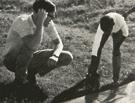
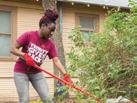
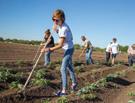
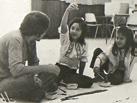
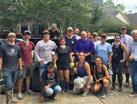
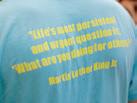


What do you do with 673 photographs pulled from archives, taken for stories, and submitted by Tiger alumni? We couldn’t think of a better way to use them, either! The Spirit of Trinity tiger mosiac is a collection of photos from 1919-2018, spanning 99 years of community service by our University. Make sure you are following Trinity on Facebook and Instagram, and stay tuned for a giveaway of the cover as a poster.

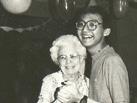
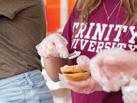


CONTENTS DEPARTMENTS 6 Letters to the Editor 8 Trinity Today 16 Tiger Pride 20 Trinity Press 22 In Memoriam 24 Features 56 Alumni Profiles 64 Class Notes 73 Alumni News 75 Chapter Activities 79 Commentary 26 Showing Our Stripes 36 The Spirit of Trinity 46 Shouldering the Load 50 Not a Drop to Drink
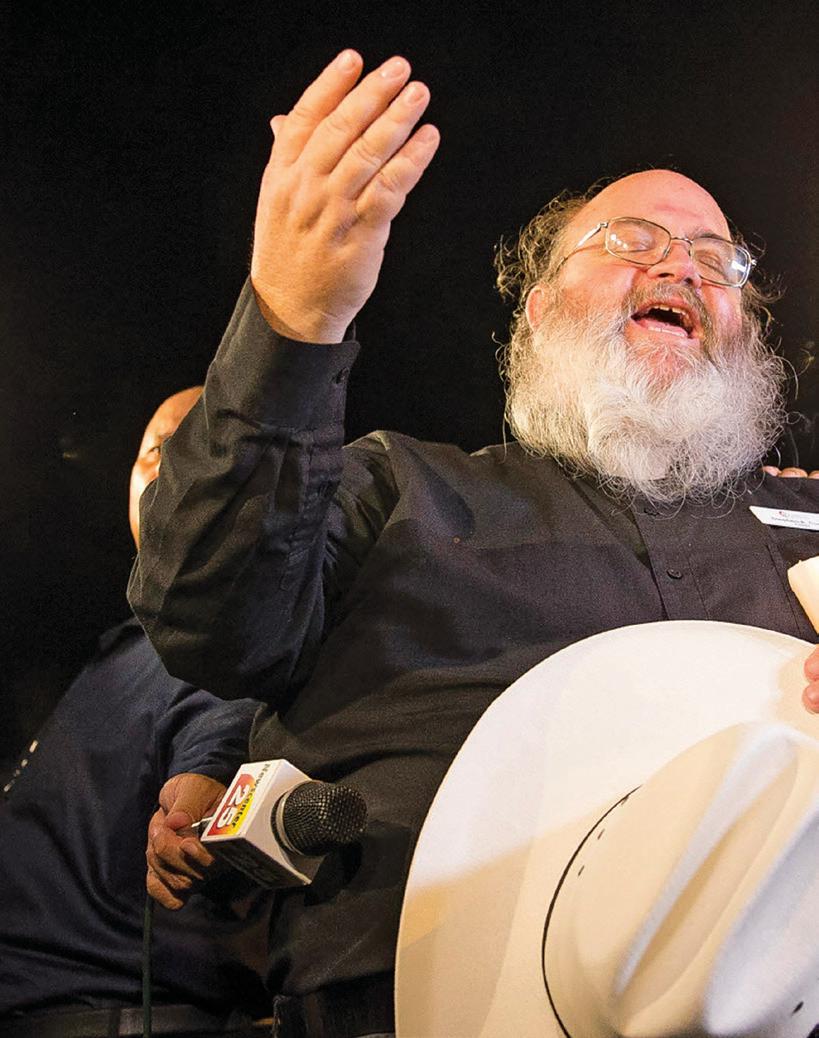
The Big Picture
Stephen Curry ’84, the pastor at La Vernia United Methodist Church, prays during a candlelight vigil for Sutherland Springs First Baptist Church on Sunday, Nov. 5, 2017. That morning, 26 people were killed and 20 were injured by a gunman during the church’s weekly service. The night of the shooting, Curry, whose church is a mere seven miles from Sutherland Springs, united with people from across the region to lead the vigil. “The idea that such a thing would happen in a sacred space, a place where families are supposed to be safe, has angered many people,” Curry wrote in an op-ed for The New York Times “Immediately after the shooting, churches [across the area] started receiving and making offers of help. They rushed meals to those grieving and to the emergency workers. They were called on to help fund funerals and host a blood drive. Christ commands us to love our neighbor as ourselves, and the churches are where the people come together to serve in ways bigger than each of us can serve individually.”
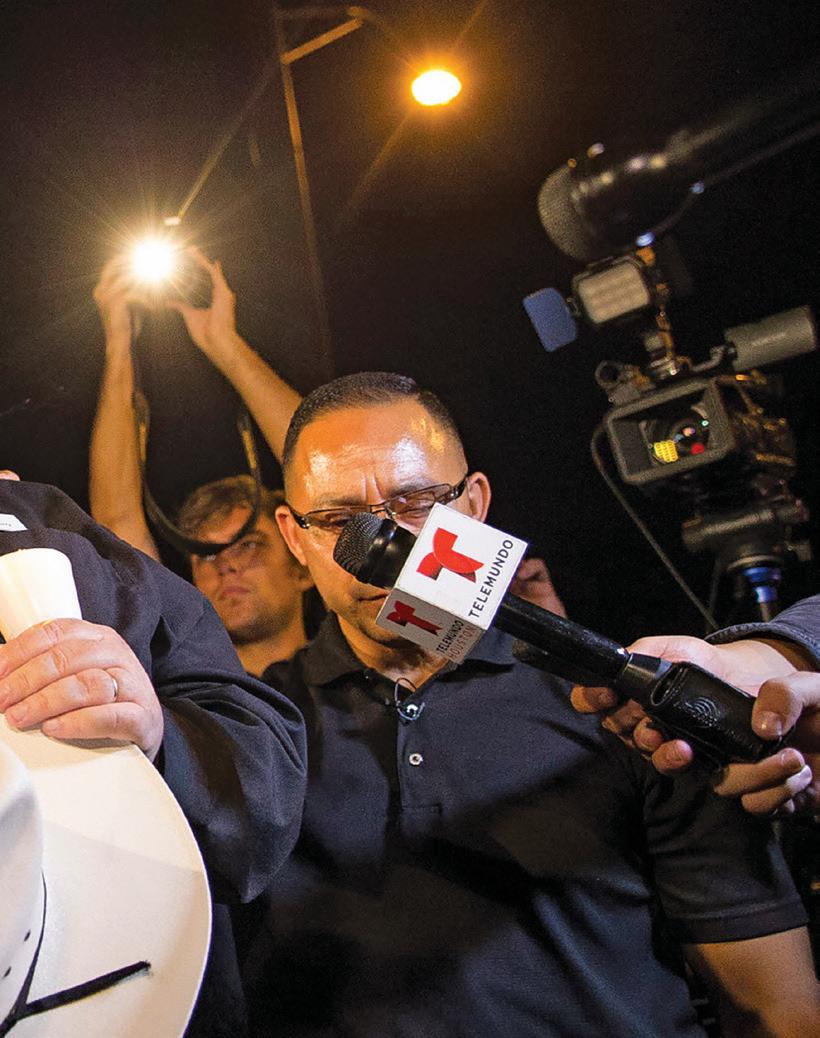 Photo by Mark Mulligan for the Houston Chronicle. Used with permission.
Photo by Mark Mulligan for the Houston Chronicle. Used with permission.
PRESIDENT’S MESSAGE

Trinity students have a long history of giving generously of their time through community service. Hallmarks of service for many begin with the Trinity University Volunteer Action Community (TUVAC), a student organization that can trace its start to the mid-1960s. Through this organization, approximately 1,600 students contribute more than 120,000 hours of community service each year, volunteering at local schools, nursing homes, animal shelters, food pantries, and more. This impressive outreach is consistently cited on the President’s Higher Education Community Service Honor Roll.
Through a variety of service initiatives, including experiential learning, Trinity supports and challenges students in their development as individuals and as responsible global citizens. With the three main components of education, volunteerism, and reflection, service programs at Trinity inspire and motivate students to have a positive impact on the community and the world around us.

In this issue of Trinity magazine, you will read inspiring stories of how this spirit has motivated members of the Trinity family to provide hope and healing.
What is it about Trinity that prompts us to rally together as a community? Is the desire to make a difference a quality that is stronger in Trinity students and alumni? There is much evidence to indicate so. As one example, I think of Katie Ogawa ’14, who as a student led the effort to create HOPE Hall, a living-learning community where students are committed to raising awareness of and ending homelessness. This program has had a lasting impact on the Trinity campus and in the San Antonio community, and the Hall celebrates five years this year (read more on page 8).
Trinity prepares its graduates to pursue lives of meaning and purpose. A Trinity education, characterized by meaningful relationships with excellent faculty and a challenging curriculum, provides a transformative experience. This experience not only helps students be more successful and graduate on time, it instills a quality of well-being that helps students discover purpose in their lives. Some college students may perform community service as a way to get a line on their résumé to help get a first job. But I see students at Trinity seeking lines of character that they will carry with them for the rest of their lives.
I frequently reflect on the fact that Trinity’s history is unique. I am not aware of other universities that have faced financial difficulties and decided to move. Trinity has had three homes over the course of its history. This journey from Tehuacana to Waxahachie to San Antonio reveals a unique trait in our institutional character: It’s in our DNA to reinvent the University to serve the community where we live. With each reinvention, a vision has held constant. Our forebear Presbyterians, who first imagined Trinity University, set their intention to establish “a University of the highest order.” The challenge of being uprooted and resettling and finding support along the way has instilled lessons of gratitude and defined ways to honor and give back. Our students are heirs to this legacy.
Danny J. Anderson President
Jeanna is a writer and designer for Trinity’s creative services and a proud English major, class of 2008. When she’s not playing with her adorable son, EJ, or trying new foods, Jeanna is probably singing with the ladies in the Beethoven Damenchor or pondering the relationship between mathematics and art. Follow Jeanna at @jeannabalreira.
words + photos
Though a Rice University graduate, Molly is a Tiger at heart, growing up on campus after being brought to Trinity’s football field at three days old. She writes, edits, and manages all things ‘content’ for Trinity’s creative services. Her weapons of choice are a red pen by day and a hot glue gun by night, and her sole claim to fame is singing backup to Barry Manilow in a community choir.
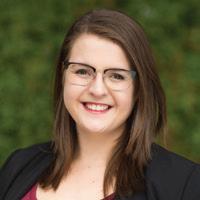
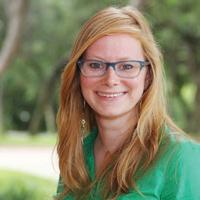
words
Jeremy is Trinity’s brand journalist. He joins the University after covering five years of mayhem in San Antonio as a newspaper reporter. A Carolina transplant, he shares local loves of basketball, barbecue, and telling tall— but true(ish)—tales. Jeremy didn’t attend Trinity, but he made it here as fast as he could.
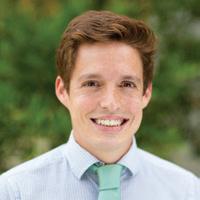
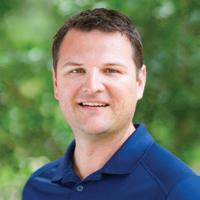
words
Susie started her career as a newspaper reporter but changed the “channel” to Trinity when she realized she is a lifelong learner who thrives in an academic setting. Susie loves to share stories about Trinity people and programs with local, regional, and national media outlets and appreciates picturesque sunsets while walking her dog. Follow Susie at @susiegonz.
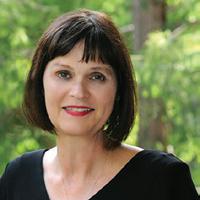
photos
As Trinity’s digital content producer, Anh-Viet has taken more than one million photographs. He also enjoys playing piano, exploring nature, and hopes to travel the world. He graduated from Trinity in 2015 as a biology major and feels blessed to have experienced music, art, and science during his time at Trinity.
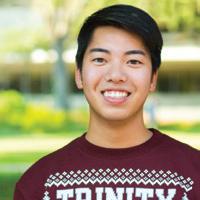
words + photos
Joshua is the sports marketing coordinator at Trinity, a post he’s held since 2013. Joshua helps run Tiger Network, maintains and updates trinitytigers.com, and captures action and still sports photography. He graduated from Trinity in 2005 as a business administration major with concentrations in marketing and communication.
TRINITY 5 magazine.trinity.edu CONTRIBUTORS
Jeanna Goodrich Balreira
Susie Gonzalez
Joshua Moczygemba
Anh-Viet Dinh
Molly Mohr Bruni
Jeremy Gerlach writer
I want to tell you how much I enjoyed the summer issue of Trinity, especially the article about O’Neil Ford. I was there during those early years. I still remember a talk that Ford gave as he stood under one of the slabs that was to be lifted for another building using that method, perhaps what was then called the music building. But the thing I remember was when he recalled the first time the Youtz-Slick construction technique was going to be used to raise a slab at Trinity. I remember him saying that he stood under the slab because if it fell, he might as well be under it because it would be the end of his career anyway! He mentioned that someone else stood under the slab with him but I don’t recall the name.
– Tom Wilbanks ’57
I received the summer edition of the magazine and wanted to write and tell you how much I admired it. Far from anything disposable, I have put this on my shelf. My son looked through it with interest. That’s a first. I found it to be a sophisticated, literate, beautifully considered, and interesting(!) publication. And representing the University so well, it is a valuable marketing tool. Congratulations. More to come, I hope.
– Ed Fry ’74
I wanted to send you a note letting you know how wonderful my spouse and I thought the most recent edition of the Trinity magazine was. It was not only beautiful, but informative and fun. It made our hearts happy to read through it and think fondly of our alma mater. Thank you and your team for all of your incredible work.
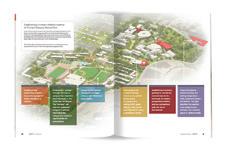 – Alex (and Elena) Serna-Wallender ’08
– Alex (and Elena) Serna-Wallender ’08
I just received my summer magazine. Congratulations on not only an informative issue, but a beautiful reminder of the Trinity campus I loved. I haven’t been on campus in many years, but this issue reignited my memories. I can smell the mountain laurel.
– Peg Barry ’69
Congrats on a good issue. Good, interesting content. Good, interesting art. All in all, a pleasure to read. But also difficult for, I suspect, many of us to read. I would think those who receive the magazine skew to the right on the age chart. With advancing years comes declining eyesight. Could you please consider bumping up all of the body font sizes by a point or two?
– Tom Johnson ’65
Tom, believe it or not, bumping up the point size by two points would cause us to lose almost eight pages of content!
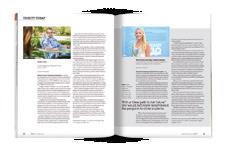
My congratulations to the writers and editorial and publishing staff for the fantastic edition of Trinity magazine for Summer 2017. Couldn’t put it down until I had read it all. Keep up the excellent work. I was especially pleased to see the article on experiential learning. I earned my B.A. from the Metropolitan State University of Denver in 1973. My choosing Trinity University to complete my graduate education was primarily because of an opportunity to continue on an experiential learning course of training and education. The graduate program in counseling psychology allowed me to do just that. I felt well prepared for my career electives to continue on toward

a doctoral degree or to enter the job market. In our country’s current economic situation, I believe it ought to be even more important to include experiential learning opportunities at both the undergraduate and graduate levels of education to ensure each Trinity graduate more of an opportunity to successfully compete in today’s job markets.
– Michael Van Winkle ’75
I was delighted to read about “The Slab” in the Déjà View section. However, no mention was made of the shack next to the slab, which had a piano in it. I spent many hours there practicing from 1954–58. It was less than ideal but always available. There was a lot of competition for the few practice rooms on the main campus. It also provided privacy for the many musical mistakes and sounds I made. Thanks for featuring this special part of my Trinity experience.
– Phyllis Baggish Lyte ’58
I just spent over an hour reading the latest issue of the Trinity magazine—what an incredible issue! I am class of 1954, so I go way back to when there were about six or seven buildings, some students were housed off-campus down the hill on Mulberry, and buildings such as the Semmes were under construction. I walked to and from class every day through the mess and had several classes in what was then the bookstore.
This issue had so much good history and new facts and so many fascinating remembrances and future plans about Trinity. I once again was so pleased with the paths my school has taken over the years. I find I sometimes have a bit of pure envy of the amazing, varied experiences students now have to not only get a good education in a chosen field, but also to leave Trinity with their whole being having been nurtured in the process.
It was heartwarming to see the old photo of Dad (President James Laurie) and O’Neil Ford; they had an amazing relationship and the results are still awesome.
– Sally Laurie Murphy ’54
TRINITY 6 Spring 2018 LETTERS TO THE EDITOR
I enjoyed reading the article “Forever Love in Parker Chapel” in the Summer 2017 Trinity magazine. As an historical footnote, a friend of mine is the daughter of the first couple married in the chapel at Trinity’s Waxahachie campus. Earl Thomas ’32 and Mildred Lewis ’34 were married in the upper room of the administration building on Thanksgiving day in 1936. According to a newspaper clipping, the room was ordinarily used by students for “morning religious meditations.” For the wedding, it was decorated with ferns, white chrysanthemums and white tapers. The “simple ring ceremony” was attended by “only relatives and close friends.” Mildred was “attired in a rust costume suit with brown accessories and carried an arm bouquet of yellow chrysanthemums.” They were married for 63 years. Mildred died in 1999 and Earl in 2000.
– Kay Jordan ’64
We are saddened to note that Kay, a Spirit of Trinity award recipient, passed away in December 2017.
The day before Hurricane Harvey made landfall, San Antonio was ready. Sandbags were propped against doors and windows, and bottled water was nowhere to be found on store shelves. We’d canceled our plans and our classes, waited hours in line for gasoline to fill up our tanks, and settled in for a long weekend ahead. Had Harvey hit San Antonio like it had been projected to, I’d like to think we would have been prepared.
But it didn’t. Instead, crashing into the Texas Gulf Coast as a Category 4 storm, Harvey wreaked havoc on Rockport, Fulton, and Port Aransas—coastal towns that many of us have come to know and love—and then plowed into Victoria. Weakening rapidly, Harvey crawled across our great state, dropping record-setting rainfall from Bastrop to Houston to Beaumont and beyond.
Harvey was a disaster unlike many of us had ever seen. In my hometown of La Grange, friends and relatives lost land, livestock, and homes to a raging river and flash flooding. Alumni and families in the Houston area were forced to evacuate; those who could not do so in time were forced to watch their homes and businesses destroyed. Many lost livelihoods; some lost lives. All of our communities would be feeling the effects of Harvey for years to come.
And then Irma came. And then the earthquake in Mexico City, and Jose on the East Coast, and Maria in Puerto Rico. Raging wildfires ripped through Montana and California while the Southeast suffered numerous record-high floods.
And those were only the natural disasters.
By the end of 2017, two of the five deadliest mass shootings in U.S. history had occurred in the span of just 35 days—those in Las Vegas and in Sutherland Springs. Yet again, this hit especially close to home, as Tigers have ties to the Sutherland Springs community, only 45 minutes southeast of the city.
For months and months, it seemed that one could not flip on the news without immediately being heart-brokenly, gut-wrenchingly sad.

Yet out of this sadness, as our Tigers so often find, came the spirit of hope. Alumni, students, faculty, and staff volunteered time, donated supplies, cleaned homes and businesses, and cleared cities of debris. Hand in hand, the Trinity community spoke loud and clear: We are Tigers for Tigers, and we’re here to help anyone in need.
Trinity magazine wanted to put its finger on the Spirit of Trinity. While we’ve made an attempt to illustrate it, citing stories from alumni who have stepped up in times of trial (read more on page 26), I’m sure we’ve merely scratched the surface. We extend a heartfelt “Thank You” to our entire Trinity community for coming together, for supporting one another, and for continuing to remind the world that even in darkness, we can bring light.
In other news, you may be missing two staple sections in this issue: “Where are They Now?” and “Déjà View.” After a long and faithful stint as a volunteer writer for Trinity, Doug Brackenridge has retired from the magazine. I fought back tears the day he came in my office to tell me this, but he assured me he’s still here when we need him; you may still see some contributions from Doug every now and then, especially as we gear up for our 150th anniversary issue (read more on page 14).
Ann Hutton McLemore ‘74 had fun coloring the Trinity University Field Guide, produced for the Summer 2017 issue by Peter Lizalzi ’08 and Blue Star Press. Thanks for showing us your artistic skills, Ann!

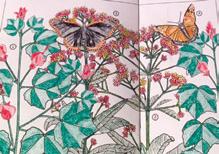
And though we can never replace Doug, we are excited to introduce two new writers on the magazine staff. Jeremy Gerlach comes to us from the San Antonio Express-News where he reported on mischief and mayhem, and Molly Mohr Bruni lends her expertise in writing and editing (she’s a wizard with a red pen). Please join me in welcoming them to our team!
Cheers,
Jeanna Goodrich Balreira ’08
TRINITY 7 magazine.trinity.edu EDITOR’S NOTE
Living for HOPE Outreach-oriented residence hall celebrates five years
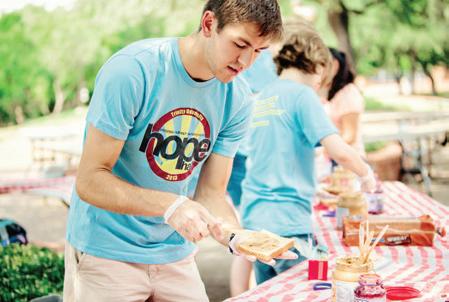 by Susie P. Gonzalez
by Susie P. Gonzalez
Four first-year students taking part in the 2011 Alternative Spring Break program had a dream. They wanted to expand the desire of Trinity students to help others for one week into a year-round campus experience by forming a living-learning residence hall dedicated to the theme of ending homelessness in San Antonio. Led by Katie Ogawa ’14 with brainstorming by Shelby Seier ’14, Paige Patrick ’14, and Leah Weselman ’14, the result was HOPE Hall, which stands for Homelessness Outreach Pursuing Education.
HOPE Hall opened in 2012 with 34 students living in Murchison Residence Hall and now has 70 students from all class years. Through student leaders of Residential Life, residents of HOPE Hall have taken part in meetings, programs, and community outreach to help people experiencing homelessness. In some years, the theme has been woven into first-year experience courses, and in all years, service learning has been at the core of the program. Since 2012, HOPE Hall residents have completed an estimated 18,000 hours of community service in the greater San Antonio community.
In recognition of the students’ work for positive change in the community, HOPE Hall received a gold distinction National Association of Student Personnel Administrators (NASPA) Award in 2014, the same year the Hall was nominated for the Volunteer of the Year award by the United Way of San Antonio and Bexar County.
What’s ahead for HOPE Hall? Residential Life leaders expect the unique hall to continue to evolve in response to the ever-changing needs and interests of Trinity students and the wider San Antonio community.
Top Tigers Trinity is No. 1 for the 26th year
Third-party endorsements continue to position Trinity as an elite institution. The University was ranked “No. 1 in the West” by U.S. News & World Report’s “America’s Best Colleges 2018”—making it 26 years in a row for the distinction among colleges that offer a full range of undergraduate programs and select masters programs in the western part of the United States. The college guide also placed Trinity at No. 1 in the “Great Schools, Great Prices” category and gave the engineering science program the No. 29 spot. Kiplinger also named Trinity to the “300 Best College Values for 2018” by ranking it at No. 26 among private universities and No. 81 among the full complement of 300 schools.
Partners in Crime Prevention TUPD signs agreement with Panamanian police
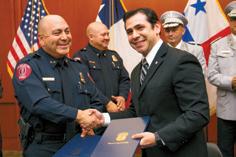
Trinity University Police Chief Paul Chapa led an effort for multiple law enforcement agencies to sign agreements with the Panama National Police Force. The Trinity University Police Department signed the pact in August 2017, along with the San Antonio Police Department, Bexar County Sheriff’s Office, and the Judson Independent School District Police Department, in support of training in firearms forensics and national and state weapons policies and procedures.
Officials at the ceremony in the Fiesta Room said partnerships are key to successful law enforcement. The effort also was supported by the Hispanic American Police Command Officers Association, of which Chapa is a former president.
TRINITY 8 Spring 2018 TRINITY TODAY
Trinity Appoints New Executive Leadership
Jim Bradley and Tess Coody-Anders join the University
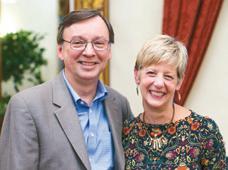
In fall 2017, President Anderson appointed James (Jim) N. Bradley as Trinity’s chief information officer and Tess Coody-Anders ’93 as the University’s vice president for Strategic Communications and Marketing.
Bradley leads the division of Information Technology Services. He has more than 30 years of experience as a strategic technology leader in higher education and the corporate world. Most recently, Bradley served as a solutions delivery leader with H-E-B.
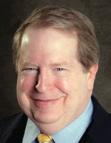
Coody-Anders, founder and former CEO of Wellvana, oversees the Strategic Communications and Marketing division. She has more than 20 years of experience developing successful, integrated marketing communications strategies and campaigns.
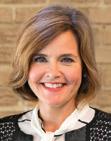
A Fresh Chapter
Chris Nolan to carry on Diane Graves’ legacy as University librarian
Chris Nolan, a stalwart at Trinity’s Coates Library since 1987, succeeded Diane Graves as University librarian in November 2017. Graves, now an emerita professor, joined Trinity in 2001. During the past 16 years, she helped the library successfully navigate fundamental challenges as readers have shifted to digital media, while also championing the Open Access movement, which promotes universal access to scholarly research.
Under Nolan’s watch, the library will continue to grow as a hub for smart, accessible information across all platforms, including
digital media. “We’re still focused on acquisition; we’re always looking for the best material we can get,” Nolan says. “Wider, faster access—that’s where we are headed.”
The Talk of the Town Pecha Kucha presenters tell tales in unique fashion
Trinity played host to San Antonio’s 28th Pecha Kucha in Laurie Auditorium on Dec. 5. President Danny Anderson, who opened as the first presenter of the night, joined six other guests including former congressman Charles A. Gonzalez, journalist Mary Lance, couturier Leighton W., Magik Theatre founder Richard Rosen ’69, automotive magnate April Ancira ’02, and community artist Margarita Cabrera. Anderson’s presentation detailed Trinity’s trek to San Antonio in the mid-20th century, along with his personal path to his current position as president.

“It was an energizing challenge, condensing my journey and Trinity’s journey side-by-side in this succinct format,” Anderson says. “Both tales, Trinity’s and mine, have their twists and turns. And yet our destination is shared in the end.”
24 Hour Challenge Shatters University Records
Nov. 8, 2017, becomes largest single day of giving in Challenge history
by Molly Mohr Bruni
On Nov. 8, Tigers around the world made a record-breaking 1,743 gifts to Trinity University, totaling $354,684. Both the number of donations and amount raised were the highest in the University’s 24 Hour Challenge history, exceeding past records of 1,304 donations (2016) and nearly $160,000 raised (2015).
Trinity encouraged Tigers to give where it mattered to them; donors gave the most to student scholarships, followed by athletics, the Trinity Fund, and academics. Matching gifts helped increase the amount of money raised for the University. The ultimate matching gift headlined the Challenge, with a group of anonymous donors pledging to give $85,000 to student scholarships if 1,500 gifts were made. Throughout the day, other matching challenges benefited areas such as the Trinity football team and the Michael Kearl Scholarship.
Parents, students, and alumni each had their own matching challenges, too. Perhaps the most entertaining challenge was a lip-sync show promised by Trinity Vice Presidents Michael Bacon ’89 and Tess Coody-Anders ’93 if 333 Trinity alumni gave by 3:33 p.m., the time of Trinity’s weekly Nacho Hour. Alumni successfully met that goal, and Bacon and Coody-Anders delivered an unforgettable performance of “4 Minutes” by Madonna and Justin Timberlake.
“I want to share my gratitude, and honestly, the gratitude of all of our students who receive financial aid and scholarships, to those who supported Trinity,” Bacon said. “The Challenge was a fun and easy way to make your gift and help others in their Trinity journey.”
TRINITY 9 magazine.trinity.edu
Nolan & Graves
469 $213.10
Marathon Meals Runners help fill shelves of San Antonio Food Bank
For 10 years, Dean of Students David Tuttle has invited Trinity students, faculty, and staff to join him in training for and running in the San Antonio Rock ’n’ Roll Marathon, either for the full 26.2-mile course or the 13.1-mile half marathon. For nine years, he has designated the Kayla Mire Food Drive as the official philanthropy of the dean’s half marathon, which is the distance most Trinity runners choose. Runners and other campus donors were asked to contribute 13 cans of food, $13, or whatever amount they wished.
The food drive is named in honor of Kayla Mire ’10, who died in a one-car accident shortly after graduating. She was known for her compassion for the homeless and those less fortunate.
Boost for First-Gen Students McNair Scholars Program funds renewed


On the heels of celebrating 10 years at Trinity, the McNair Scholars Program received word of funding approval from the U.S. Department of Education for another five years. The program benefits first-generation, low-income, and underserved students who are high achievers interested in scholarly research or activity after earning a bachelor’s degree. The program is authorized to support 26 students a year for the next five years. Kelly Lyons, program director and biology professor, says future goals include improving academic readiness, developing interest in and appreciation for the process of inquiry, and mastering research skills. She will focus on intensive tutoring, ways to improve test-taking skills, and enhanced social and cultural activities.
Students Support S.A. Symphony
Music major Ana White, president of the Mu Phi Epsilon music fraternity, rallied about 80 students to attend a January performance of the San Antonio Symphony after plans were announced to curtail the orchestra’s season because of a budget shortfall. Shortly after, the Symphony revealed its plan to continue with an abbreviated 2017-18 season.
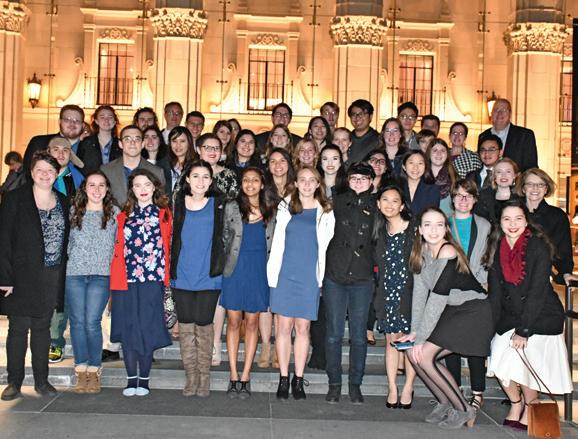
TRINITY 10 Spring 2018 TRINITY TODAY
For the 2017 race, Tigers donated In 9 years, collections have totaled more than 78,000 pounds of food, which translates to nearly 60,000 meals pounds of food in cash, checks, and TigerBucks
Let It Snow!
Trinity’s campus was blanketed with that cold, white stuff on a winter evening in December 2017. Tigers built snowmen, made snow angels, and even threw snowballs at one another while wearing shorts. The last major snowfall in San Antonio happened in 1985—see photos on the back cover.
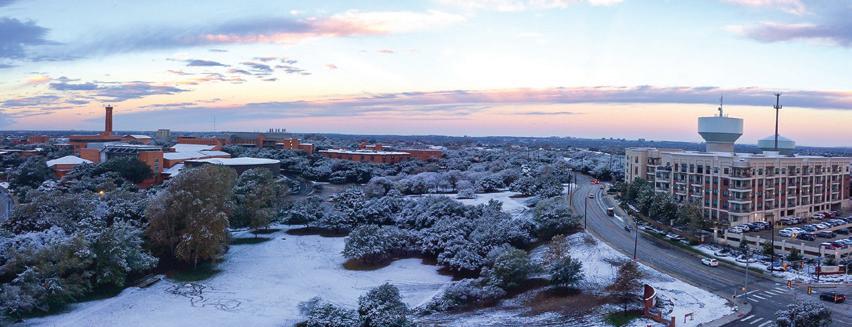


TRINITY 11 magazine.trinity.edu
Pledging to Serve
Trinity’s Greek community continues strong service tradition
by Jeremy Gerlach
For Trinity Greek Council Service Chair Victoria Tolar ’18, the only thing more rewarding than community service is having her fellow sisters from Chi Beta Epsilon right by her side.
“Trinity has a bunch of other opportunities for community service, but I think there’s something special about doing it with people who you admire and who you joined an organization with,” Tolar says. “Going out to do service events with those people just makes it really special.”
Tolar, a history major from Hurst, Texas, says Trinity’s 13 sororities and fraternities are each tied to a different charitable cause, with all of the organizations working with the rest of the University to have a positive impact on the community.
ed Warrior Foundation, RAICES, the ASPCA, and the San Antonio Parks and Recreation Department.
Jeremy Allen, assistant director for fraternity and sorority life at Trinity, has overseen the Greek community as it strengthened this service-oriented mindset over the past four years. Allen notes that service is one of four “pillars” of Greek life at Trinity, along with leadership, camaraderie, and scholarship.
“Service has been important to us for a long time,” Allen says. “It’s a great opportunity for our organizations because we represent about 25 percent of campus, and that’s a lot of manpower. At the same time, it allows students themselves to grow and develop and find their passions.”
In Fall 2017...
13
fraternities & sororities logged volunteer hours
2,685
According to Tolar, these 13 Greek organizations logged 2,685 total volunteer hours in fall 2017 and typically log more than 2,500 hours each semester. These hours go toward a diverse group of causes: Haven for Hope, Habitat for Humanity, the Rape Crisis Center of San Antonio, the Ronald McDonald House, the San Antonio AIDS Foundation, SRG Force Sports, Children’s Association for Maximum Potential (CAMP), Respite Care of San Antonio, San Antonio Pets Alive, the Wound-
While each sorority and fraternity have individual causes they support, the entire Greek community pools together for big initiatives, Allen says. In March 2017, more than 70 students helped sort hundreds of pounds of food at the San Antonio Food Bank. The Phi Delta Kappa and Zeta Chi Rubber Ducky Race in October 2017 benefitted victims of the deadly Mexico earthquake in September. Additionally, proceeds from the Chi Beta Epsilon and Bengal Lancers Annual Chili Cook-off in November 2017 went toward the Rape Crisis Center in San Antonio.
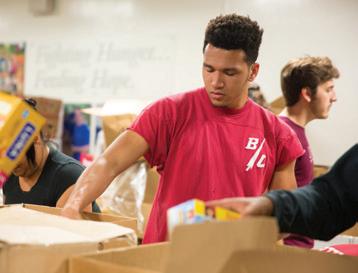
Allen adds, “When our organizations see the impact that they’re making and can feel the difference that all of their work has on actual people and within the community, I think it kind of ramps up the energy and gets that excitement going for the students.”
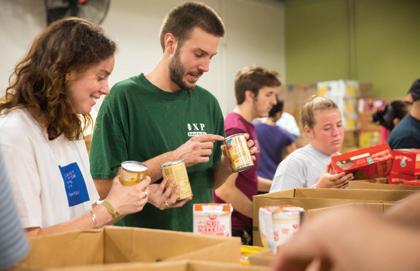
TRINITY 12 Spring 2018 TRINITY TODAY
above Members of Greek Life volunteered at the San Antonio Food Bank in March 2017.
“Service allows students themselves to grow and develop and find their passions.”
Academic Administrator Appointed Biology professor named associate vice president

David Ribble ’82, a biology professor for more than two decades at Trinity, has been named associate vice president for Academic Affairs: Budget and Research. He will oversee academic budgets, guide faculty development, supervise sponsored research and undergraduate research, and coordinate a number of lectures held annually on campus.
Ribble came back to Trinity in 1992 and chaired the biology department from 2004 to 2015. He secured more than $9 million in external grants, revised the biology curriculum to focus on learning outcomes for students, and was known as the “faculty shepherd” during the planning for the Center for the Sciences and Innovation. He was appointed a Murchison Term Professor from 2014-17 and earned the faculty Distinguished Service Award in 2016. In addition, Ribble was the
2008 recipient of the Z.T. Scott Fellowship and has been active nationally as a PULSE (Partnerships for Undergraduate Life Science Education) Fellow and Councilor for the Council on Undergraduate Research.
Everyone Belongs Trinity hires director of diversity and inclusion

Trinity has named its first director of diversity and inclusion in the Student Life division. Allison “Alli” Roman, a social worker who most recently served as assistant director for the Gayle R. Davis Center for Women and Gender Equity at Grand Valley State University in Allendale, Mich., is known for her passion for storytelling. The position was reconfigured from a vacant coordinator post and will evolve into an independent department with a staff. Roman, a first-generation college student who identifies as a black Latina, says she wants to create spaces
A Gift for “Man’s Evolving Images”
Celeste Sicner-Hurd (right) and her family visited Coates Library in December 2017 to make a gift of dedication to Trinity in honor of her brother, James Sicner. Sicner was the artist who created “Man’s Evolving Images: Printing and Writing,” the library’s infamous staircase mural and the largest montage mural in the world.
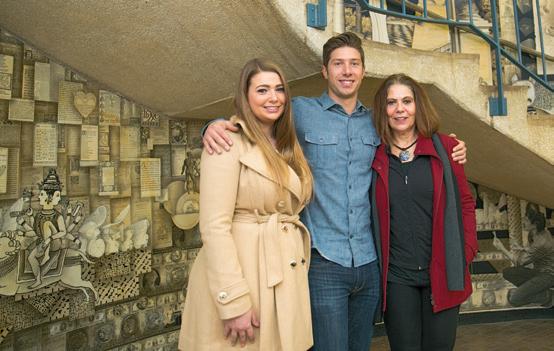
where students, faculty, and staff feel a sense of belonging. “There is space for everyone,” she says.
Admissions and Financial Services
Joined
Combining offices allows for robust Enrollment Management structure
Merging together elements from Academic Affairs (Admissions) and from Finance and Administration (Student Financial Services), Trinity has announced a new Enrollment Management structure. The alignment of Admissions and Student Financial Services within Enrollment Management brings focused attention to recruitment, retention, and progression toward timely graduation, as well as optimization of student funding support and efficient use of financial resources. Student Financial Services consists of two offices—financial aid and student accounts— and bringing them together into a single unit allows the University to effectively coordinate policies and practices and provide better insight into the student experience beyond the first year.
TRINITY 13 magazine.trinity.edu
From 1869 to 2019: A Celebration in the Making
Year-long commemoration of University’s founding, success will span 2019
by Sharon Jones Schweitzer ’75
Trinity is already making plans to celebrate the University’s 150th anniversary. Originally founded in 1869 in Tehuacana, Texas, Trinity’s storied journey has survived three moves and numerous financial crises. The celebration will span the 2019 year and include new and traditional University events.

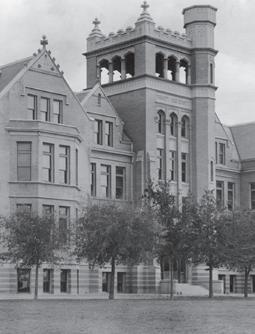

“We can all take great pride in the educational excellence that is associated with the Trinity of today,” says Trinity President Danny Anderson. “However, there is tremendous value in connecting with the University’s history and heritage that have made it possible for us to reach this significant point in Trinity’s journey.”
A steering committee co-chaired by education professor Angela Breidenstein ’91, ’92, education professor, and Jacob Tingle ’95, director for experiential learning, has begun planning for the event.
“The University’s accomplishments and those of generations of our graduates are worth noting in an authentic and celebratory way,” says co-chair Breidenstein.
“Our goal is to see as many people as possible engaged in the planning, preparation, and celebration in a way that strengthens the Trinity community,” Daschbach says.
Trinity’s sesquicentennial celebration will include many opportunities to take pride in Trinity’s history and traditions, celebrate the present, and build excitement around the journey into the University’s future.
Tigers, we need your help!
As part of the University’s 150th anniversary celebration, Trinity’s Special Collections and University Archives is launching a drive to collect, preserve, and display alumni photos and memories to document “Trinity as told by Trinity.”
“The history of Trinity University that is captured in the University Archives is frequently one-dimensional, documenting only the official history,” says Special Collections Librarian Colleen Hoelscher. “In honor of the upcoming 150th anniversary of the school’s founding, we strive to involve our alumni in documenting Trinity as they experienced it...providing the University Archives with perspectives on campus history that are not necessarily documented in the official records that we have.”
Special Collections and University Archives is planning the drive with assistance and advice from Trinity’s Board of Visitors, and in partnership with Trinity magazine and Trinity University Press. Dig through your attic for some of your favorite photos or relics from your time at Trinity!
To submit memories, visit gotu.us/150memories. Read more about the submission process on page 21.
TRINITY 14 Spring 2018 TRINITY TODAY
Trinity University’s quest to create a National Historic District on its campus reached a major milestone with approval by the Texas Historic Commission (THC). The THC’s Board of Review voted unanimously on Jan. 20 to approve Trinity’s nomination, which received praise for the quality and significance of its proposal. The nomination now goes to the National Parks Service for final endorsement.
“We are excited by the opportunities to recognize and celebrate our significant and coherent collection of historic mid-century, modern buildings and the architect who designed them,” says Trinity President Danny Anderson. “Designation on the National Register of Historic Places positions the Trinity campus to be a treasure for future generations.”
Most of Trinity’s campus buildings were designed by renowned San Antonio architect O’Neil Ford between the 1950s and the late 1970s. Built on an abandoned rock quarry, the site’s unique topography allowed Ford to create the feel of a “low-lying Italian village” composed of modernist red brick buildings connected by walkways and lush native landscaping.

the landmark works of architecture in the U.S. of the mid-20th century,” Speck says.

Creating a National Historic District on the campus will provide design guidelines that will allow future generations to appreciate O’Neil Ford’s architecture. “The stature of its architect, the consistently high quality of design work over decades, and the intact nature of much of the work now are all extraordinary distinguishing features that combine to make Trinity University a premier architectural ensemble that will now be preserved in the foreseeable future,” Speck says.
The THC Board meeting was also attended by Linda Ford, one of O’Neil Ford’s daughters. She said she was “thrilled beyond words” with Trinity’s nomination to the National Register of Historic Places. Her sister, Wandita Ford, offered this statement a few days later: “Our father loved every minute of working on the Trinity campus and was so proud of his work there. Thanks to all of you who have worked so hard to keep his memory and beautiful work alive and safe.”
O’Neil Ford was the founding partner of Ford, Powell & Carson Architects & Planners Inc. John Mize, the company’s president, says Ford would have been honored that the two passions of his career, modern design and preservation, are now tied together through this designation. “Our design philosophy, which he started on this campus, informs our day-to-day, and we are so proud that it will now be preserved for future generations,” Mize says.
Trinity has the largest concentration of O’Neil Ford buildings anywhere in the world. The University’s Campus Master Plan Committee proposed establishing a National Historic District as a way to honor Ford’s architectural legacy and to maintain the flexibility needed for a 21st century higher education.
The committee worked in partnership with the architectural group Page. Larry Speck, senior principal at Page, is a specialist on the architectural design of O’Neil Ford. “The Trinity campus has long deserved more national attention as one of
Ford had an early and lasting impact on the design of Trinity’s Skyline campus, located just north of downtown San Antonio. The result is a campus setting that is “unmatched in character” among Texas universities and is one of America’s first modern campuses. “It has been an honor to become the steward of the University’s many important legacies,” Anderson says. “I have fallen in love with the campus, like generations of students, and it is exciting to take the recognition of our campus and Ford’s contribution to a higher level with the historic district designation.”
TRINITY 15 magazine.trinity.edu
Texas Historic Commission Gives Nod to Trinity’s Historic District State-level approval marks milestone in journey to campus designation on National Register of Historic Places by Sharon Jones Schweitzer ‘75
“The campus has long deserved more national attention as one of the landmark works of architecture in the U.S. of the mid-20th century.”
O’Neil Ford’s practical approach to design resulted in a collection of buildings that have aged gracefully, including the Ruth Taylor theater complex.
Cross Country
The Tiger women’s team placed 16th at the NCAA Division III Cross Country Championships in Elsah, Ill., for the third-best finish in school history. Junior Molly McCullough crossed the finish line in 38th place and became the third All-American in Trinity’s cross country program.
Earlier, Trinity’s women’s squad won the NCAA South/Southeast Region Championship at Newport News, Va. McCullough finished third with a school-record time of 21:26.6 in the 6K race. The Tiger men placed fifth at regionals.
Both the Tiger men and women captured the Southern Collegiate Athletic Conference (SCAC) Championships in Seguin, Texas. Trinity’s men won the trophy for the second

time in three years. The Tiger women held the top position for the first time since winning back-to-back titles in 2012 and 2013.
Sophomore Laura Taylor won the women’s race and became the first Trinity student-athlete to garner SCAC Women’s Cross Country Runner of the Year honors since 2013. Harry Bellow finished sixth in the men’s event and was named SCAC Men’s Newcomer of the Year. Jordan Juran placed ninth in the women’s race and was named
the SCAC Women’s Newcomer of the Year.
Fourth-year Head Coach Emily Daum ’09 was rewarded for her efforts by being elected coach of the year by two organizations. The former All-American was tabbed as the Division III Women’s South/Southeast Region Coach of the Year by the United States Track & Field and Cross Country Coaches Association. Daum was also selected as the SCAC Men’s and Women’s Cross Country Coach of the Year.
Football
Led by fourth-year Head Coach Jerheme
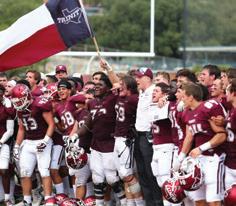
Urban ’03, the Tigers completed the season with a 6-4 overall record. Trinity’s first campaign in the Southern Athletic Association (SAA) resulted in a 5-3 mark and a fourthplace finish.
Senior lineman Alejandro Anzaldua and junior offensive lineman Joel Holmes were elected to the respective D3football.com Third Teams of Defense and Offense. Four players made the All-SAA First Team.
Men’s Golf
The highlight of the Tigers’ fall season occurred in Killeen, Texas, when Trinity won the team and individual titles at the University of Mary Hardin-Baylor (TX) Fall Invitational. After trailing by two strokes after day one of the event, Trinity won by nine strokes over Texas Lutheran University. First-year golfer Dawson Dally captured his first collegiate victory, which marked Trinity’s first individual winner since 2013. The Tigers are led by fourth-year Head Coach Sean Etheredge.
Women’s Golf
Trinity won its Alamo City Classic for the second straight year. The Tigers outdistanced second-place Southwestern (TX) University by 19 strokes at San Antonio’s Quarry Golf Club. Senior Taylor Moser won the individual title at the Alamo City Classic, claiming her first collegiate championship. Moser led the field with five birdies, rising from fourth place after the opening round. The women’s team is led by Head Coach Carla Spenkoch in her 20th year at the helm.


TRINITY 16 Spring 2018
Moser
Dally
TIGER PRIDE
Men’s Soccer
The Tigers, led by 27th-year Head Coach Paul McGinlay, completed the season with a 21-2-0 record. Trinity made its 21st NCAA Division III Tournament appearance after winning the SCAC Championship for the 20th time. The Tigers advanced to the NCAA second round in the event hosted on the Trinity campus. Trinity received a final ranking of 17th in the nation.
Junior Austin Michaelis and senior Guy Harris were elected to the United Soccer Coaches NCAA Division III All-America Team. Michaelis was selected as an All-American for the second consecutive season, earning a spot in the Second Team. Harris was named a Third Team All-American.
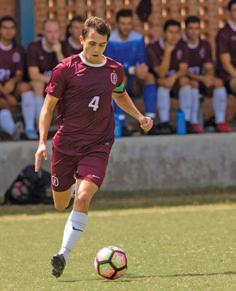
Harris and senior Cooper Fyfe were tabbed for the United Soccer Coaches Scholar All-America First Team.
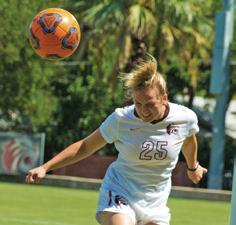
Senior Brent Mandelkorn was selected for the College Sports Information Directors of America (CoSIDA) Academic All-America First Team.
Christian Sakshaug and Harris were chosen as the respective SCAC Offensive and Co-Defensive Players of the Year. Ten Tiger players earned All-SCAC honors.
Women’s Soccer
Second-year Head Coach Dylan Harrison ’02 led the Tigers to a 19-2-0 record and a No. 16 final national ranking. Trinity qualified for its 23rd NCAA Division III tournament and advanced to the NCAA second round in Abilene, Texas.
Seniors Julia Kelly and Julia Camp were elected to the United Soccer Coaches NCAA Division III All-America Team. Kelly earned a position on the All-America Second Team, while Camp was a Third Team All-American.
Senior Hannah Booher was selected for the College Sports Information Directors of America (CoSIDA) Academic All-America Second Team. Booher was a Third Team Academic All-American after the 2016 season.
Camp was named to the United Soccer Coaches Scholar All-America Second Team, while Booher and Kelly earned slots on the Third Team.
Harrison was elected the SCAC Women’s Soccer Coach of the Year, junior Chelsea Cole was tabbed the conference Offensive Player of the Year, Kelly was named the Defensive Player of the Year, and Lilah Bevins was designated the Newcomer of the Year. Eleven Trinity players made the All-SCAC Team, including a conference-record nine players on the First Team.
The Tigers’ 22nd SCAC Championship tied the Trinity men’s tennis squad for the most team titles in conference history. Trinity women’s soccer finished its SCAC schedule with a 12-0-0 mark and extended its NCAA Division III record for 110 consecutive conference victories.
Volleyball
The 2017 campaign was a banner season for Head Coach Julie Jenkins, who completed 33 years at the Tigers’ helm. In the course of the season, Jenkins claimed her 300th SCAC victory; she became the first coach— in any sport in the SCAC—to achieve the milestone. Later, Jenkins earned her 900th career victory, becoming just one of seven coaches—in any NCAA division—to reach the plateau. Jenkins is currently first among active NCAA Division III volleyball coaches in wins.
Trinity completed the season with a 27-8 record and a No. 11 final ranking in the American Volleyball Coaches Association (AVCA) NCAA Division III poll. The Tigers advanced to their 23rd NCAA Division III Tournament and came up short in a hard-fought firstround matchup in Georgetown, Texas.
Senior Kirby Smith was elected to the AVCA All-America Team for the second consecutive year. Smith was tabbed as a Second Team All-American and was a First Team selection in 2016.
Trinity was edged by top-ranked Colorado College in the SCAC final in Kerrville, Texas. First-year student-athlete Avery Tuggle was elected the SCAC Co-Freshman of the Year. Tuggle became the third Trinity newcomer to win the award. Smith, Madeline McKay, and junior Sarah Mullens were selected for the All-SCAC First Team.
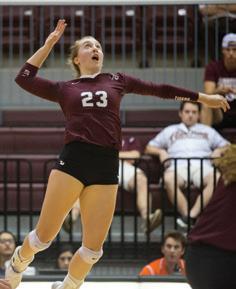
TRINITY 17 magazine.trinity.edu
Smith
Harris
Kelly
The William H. Bell Athletic Center, once referred to as the “jewel of Trinity athletics,” is gleaming brighter thanks to the completion of a $15.3 million renovation project.
The new additions include the 8,123-square-foot fitness center built near the main entrance. The two-level, glass-enclosed structure is open to all Trinity students, faculty, and staff. The cardio fitness area upstairs features treadmills, elliptical machines, stair climbers, and upright bikes. The plaza level is reserved for weight machines and racks. There is also a multi-purpose room for wellness classes.
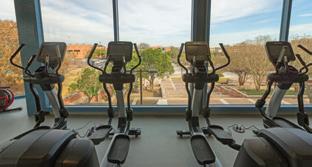
Sams Gymnasium was renamed the Ron and Genie Calgaard Gymnasium in honor of Trinity’s 16th president and his wife. The renovated facility boasts state-of-theart video boards and scoreboards, a lighted courtside table for game administration, and coaches’ offices. Spectators can watch the events from a total of 1,100 “Trinity maroon” seats.
The Patrick Stumberg Sports Performance Center is a new 5,661-square-foot strength and conditioning facility used primarily by student-athletes. Advanced weight machines, racks, and other devices ensure a hard

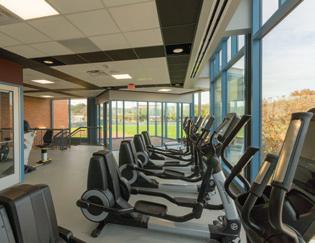

workout by all who enter the facility. Open workout hours are available at specific times of the day.
An enlarged sports medicine area benefits Tiger student-athletes. Extensive renovations to locker rooms match the caliber of NCAA Division I and pro teams’ facilities; each Tiger team now has a year-round locker room.
The Bell Center lobby has also received a facelift. Designed by Advent, an experience design firm based in Nashville, Tenn., the lobby is a nod to both the history and the future of Tiger athletics. The striking tiger head from the Trinity spirit logo welcomes athletes at the entrance, and new signage for the gymnasium and the Herndon Room give the lobby a sporty feel. In the Stumberg Sports Performance Center, signs have been added that recognize each of our Tiger teams.
The Bell Athletic Center continues to offer quality experiences in its other facilities. Hixon Natatorium is Trinity’s competition indoor swimming pool, and the Webster Sports Forum is a large gym used for practices, intramurals, and rec sports. The Stieren Dance Studio is a popular venue for a variety of classes.
TRINITY 18 Spring 2018
Bell of the Ball
William H. Bell Athletic Center renovations completed by James Hill ’76
TIGER PRIDE
New Names, Favorite Places
Familiar Trinity sport venues renamed and dedicated
An intramural field, competition gym, and sports performance center all have new signs hanging in the expansive athletics venues.
Jim Potter Intramural Field
The Jim Potter Intramural Field was renamed in August in honor of the legendary former Director of Intramurals Jim Potter ’63, ’67. Potter served in his post for 33 years from 1967-2000. The sign on the outdoor facility now reads “Jim Potter Intramural Field” on a Daktronics scoreboard underwritten by Malitz Construction where John Malitz ’75 is the company president. The dedication ceremony and reception were filled with a variety of Tigers who played a part in Potter’s life.

Ron and Genie Calgaard Gymnasium
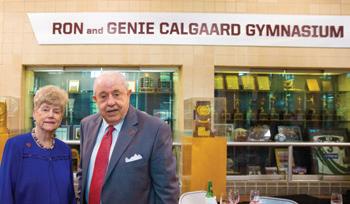
Sams Gymnasium was rebranded the Ron and Genie Calgaard Gymnasium. The home of Tiger volleyball and basketball is named for Trinity’s 16th president and his wife. Calgaard helmed the University from 1979-99 and is still a staunch supporter of Tiger athletics. A reception in the Bell Athletic Center lobby was held in the Calgaards’ honor, where participants highlighted many of the new features of the renovated gym.
Patrick Stumberg Sports Performance Center

The Patrick Stumberg Sports Performance Center is a new strength and conditioning facility. The center is named in memory of Patrick Stumberg, who was the brother of Trinity Trustee Vice Chair and Chair-Elect Herb Stumberg ’81, and his sister, Diana Stumberg ’85. The funding for the world-class performance center was provided by Herb, Diana, and their mother, Mary Pat Stumberg. Priority for use is given to Tiger student-athletes, but faculty, staff, and students who desire a serious workout are granted access at specific times.
live.trinity.edu
Tiger Network is Trinity’s live streaming network, covering athletics and special events for a worldwide audience.
Tiger Network showcases #TigerPride in full HD with realtime replays, color commentary by professionals and student-athletes, and on-demand options.
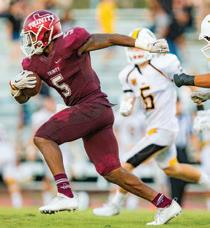
Watch events ON DEMAND


On-demand videos include:

• Tiger Enrichment Series webinars
• Concerts and performances
• Archived speakers and lectures
• Commencement exercises
• And more!
TRINITY 19 magazine.trinity.edu
Hometown Texas
Peter Brown and Joe Holley
Peter Brown and Joe Holley are interested in place and what makes people who they are. Introducing quirky characters and tenacious spirits, Holley’s stories seek out the personality of the small town while Brown’s photographs capture the essence of a changing landscape. Hometown Texas aims not to be nostalgic or sentimental but rather to show readers an unknown Texas—an exploration across miles and cultures deep in the heart of the Lone Star State.
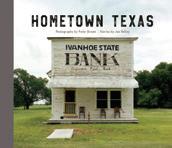
Maverick: The American
Name That Became a Legend
Lewis F. Fisher
Maverick follows the history of the word from the “Maverick gene” all the way to Hollywood and uncovers the mysteries that envelop one of our country’s iconic words. The book is a fascinating portrayal of how we form, use, and change our language in the course of everyday life, as well as the Maverick family’s ongoing relationship with its own contributions—all seen through the lens of a story featuring cowboys, longhorns, rustlers, promoters, movie stars, athletes, novelists, lawyers, and politicians who co-opted the name as their own.
The Spirit of Tequila
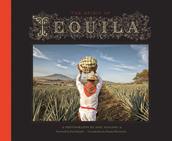
Joel Salcido
The Spirit of Tequila celebrates the tradition and culture of Mexico’s iconic drink. Salcido traveled across the state of Jalisco capturing images of distilleries and artisanal tequileras, including blue agave fields at sunset, the agave’s pineapple-like centers (piñas), elegantly shadowed barrel rooms (añejos), and the agave farmers themselves. Nearly 90 photographs reveal not only the tequila-making process—a craft that is rooted deep in the history of Mexico—but also the region’s culture and traditions.
Powering a City: How Energy and Big Dreams

Transformed San Antonio
Catherine Nixon Cooke
foreword by Bill Greehey
 introduction by Char Miller
introduction by Char Miller
At the center of San Antonio’s growth from a small pioneering town to a major western metropolis sits CPS Energy, the largest municipally owned energy utility in the U.S. and an innovator in harnessing, conserving, and capitalizing on natural energy resources. As CPS Energy celebrates 75 years of city ownership, Powering a City tells the story of the region’s industrial, scientific, and technological innovation due in no small part to the company’s extraordinary impact on San Antonio.
TRINITY 20 Spring 2018
TRINITY PRESS
150 memories... and counting

Remember when your best friend proposed to his fiancée at the reflection pool? When you ran up Cardiac Hill to Miller Fountain for Bid Day? When you had to wear a beanie as a first-year? Or when you spent so much time studying in the library that your friends set up a tent?
To celebrate the University’s 150th anniversary, Trinity’s Special Collections and University Archives, in partnership with TU Press and Strategic Communications and Marketing, is launching a drive to collect, preserve, and display alumni photos and memories—to document “Trinity as told by Trinity.”
These memories may also be used in a commemorative book published by Trinity University Press, in the Spring 2019 Trinity magazine, and in other story collections.
afterword by Jane Lewis
Mary Bonner is the definitive account of the life of an iconic Texas artist known for her delicate etchings and prints of the places and people that make South Texas unique. Bonner’s legacy, both as an accomplished artist and as a steadfast advocate for the arts, lives on especially in San Antonio. Mary Bonner is co-published with the National Trust for Historic Preservation and Villa Finale and accompanies a retrospective of Bonner’s work at the McNay Art Museum in San Antonio.
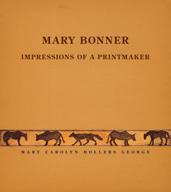
Outside Todo el Día!: Nature in English y Español and Vamos, Body!: Head to Toe in English y Español

 Madeleine Budnick
Madeleine Budnick
Published in partnership with the San Antonio Public Library Foundation and the San Antonio Museum of Art, ArteKids board books show children the world of art through imaginative paintings, sculpture, photographs, and drawings from the SAMA collection with text in English and Spanish. Two new books in the series bring nature and the body to the bestselling series. Outside Todo el Día!
Nature in English y Español introduces children to the wonders of nature while Vamos, Body! Head to Toe in English y Español connects young minds to body concepts with art in a unique, fun, and colorful way. The board book series invites children to explore their world through language and imagery that ignites their imagination.
To submit memories, visit gotu.us/150memories
Or send by mail to University Archives, One Trinity Place, San Antonio, TX 78212-7200
PHOTOS
Share photos of your favorite times at Trinity. Be ready to identify key people or places in the photos as well as the years they were taken.
ARTIFACTS AND OBJECTS
Do you have a physical token from your time at Trinity— maybe a jersey, a trophy, or that one essay you made an ‘A’ on that you’re still holding on to? Snap a photo of it on a solid-colored background; using your camera phone is fine, as long as you send photos in high resolution.
OTHER MEMORIES
Have a story or other memory to share? We would love to hear it! Submit your stories using the website link.
Submissions will be accepted until June 1, 2018, for Trinity University Press and until Dec. 1, 2018, for the Spring 2019 Trinity magazine.
Questions? Email Jeanna Balreira at jgoodri1@trinity.edu or call 210-999-8441.
TRINITY 21 magazine.trinity.edu
Mary Bonner: Impressions of a Printmaker
Mary Carolyn Hollers George introduction by Lyle Williams
DARWIN PEEK
Darwin E. Peek, former professor of mathematics, died Aug. 11, 2017. He was 76.

Peek served on the Trinity faculty for 33 years, teaching arithmetic and mathematics from 1966 until his retirement in 1999. He also taught in the Pre-Freshman Engineering Program (PREP) at the University of Texas at San Antonio during the summers of 1985-2003.
An author and inventor, he published several mathematical articles in refereed journals. He also held a patent for an icosahedron puzzle device that is similar to the Rubik’s cube.
Peek earned his bachelor’s degree in mathematics from the University of Texas at Arlington, his master’s degree in mathematics from the University of North Texas, and his doctorate in mathematics from the University of Texas at Austin. A lifelong Texan and raconteur, he parlayed his “knack for spinning yarns” into an autobiography titled Darwin’s Evolution: A Peek
Peek is survived by his twin daughters: Peggy Ann Peek of Rockville, Md., and Penny Ann Peek-Davis of Melissa, Texas; son, David Eugene Peek of Rowlett, Texas; stepdaughter, Susan Kempf; and numerous grandchildren.
In sharing the news of his death with friends and colleagues, his children said, “We wanted to share this with you, his friends from throughout his lifetime— exactly 28,000 days. We don’t know how he planned to live exactly 4,000 weeks or 1,000 lunar cycles, beginning and ending both on a prime number day, but God knew his special affinity with numbers.”
J. RICHARD JONES
J. Richard Jones, professor emeritus and the former George R. Brown Distinguished Professor of Business Administration, died May 17, 2017. He was 76.

Jones joined the faculty in 1981, teaching marketing, business research, and marketing management courses. He served as chair of the department of business administration from 1985 to 1991. Prior to Trinity, Jones was a Distinguished Professor of Transportation at Memphis State University where his principal teaching and research focus was transportation management, logistics systems, and policy alternatives. He also taught at the University of Georgia and the University of Houston. Jones retired from Trinity in 2007.
Jones served as a transportation economist and special assistant to the assistant secretary at the United States Department of Transportation, where he designed and conducted research projects on the nation’s transportation system. In addition, he consulted and provided executive development to a number of companies and organizations, including Consad Research Corporation and the Small Business Administration. Active professionally, he served on editorial boards and the boards of a number of organizations.
DARRYL WALDRON
Darryl Waldron, professor of business administration, died Dec. 19, 2017.
Teaching business policy and international management, Waldron joined the Trinity faculty in 1980 after five years at the University of Memphis. He earned a doctorate in business administration in 1975 from the University of Mississippi. Prior to entering academia, Waldron spent 13 years in industry, including 10 years with Ford Motor Company.
Waldron was an active scholar, focusing on the international arena and conducting research pertaining to emerging markets and relationship-based lending. He was a mentor to other faculty in using research to inform one’s teaching and vice versa.
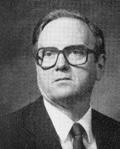
A dedicated colleague known for his laser-like focus, wit, and shrewdness, Waldron was an active member of the Trinity community. Among other contributions, Waldron created the Small Business Person of the Year Award, served as the University’s NCAA faculty representative, and was involved in the prestigious NCAA Postgraduate Scholarship process for deserving student-athletes.
A loving and devoted family man, Waldron is survived by his wife, Ayon Wen-Waldron; sons Ethan and Ayrton; daughter, Ashley; and sister, Dawn Allan.
RANDE SPECTOR
Rande Spector, academic assistant in the department of economics, Trinity alumna, Trinity parent, and jazz enthusiast, died Aug. 27, 2017. She was 61.
Spector supported professors in both research and teaching. She also oversaw the administrative aspects of the economics department’s Nobel Economist Lecture Series. Spector graduated from Trinity in 1978 with majors in religion and philosophy. She was an active member of the Trinity Women’s Club and a supporter of KRTU.
Spector is survived by her four children: Julia Spector ’04, Samuel Spector ’07, Miriam Spector, and David Spector, as well as four grandchildren.
TRINITY 22 Spring 2018 IN MEMORIAM
RICK ROBERTS
Rick Roberts, former assistant vice president for University Advancement, died on Jan. 29, 2018, after a long and courageous battle with cancer. He was 57.
Roberts was a long-time major gifts officer at Trinity. He joined the University in 1992 and quickly rose to leadership positions within the major gifts office and the division of Advancement. At one point during his Trinity tenure, he served as interim vice president for Advancement. He excelled at developing relationships with alumni, and his entrepreneurial spirit helped to provide leadership through Trinity’s $200 million capital campaign.
He was a frequent participant in noon ball and had a penchant for writing poetry. He often shared his prose at employee gatherings and other special events on campus. He considered himself a servant leader who understood the value of a liberal arts education.
In 2012, Roberts was named vice president for Development and Alumni Relations at Texas Lutheran University. He previously served as a development officer at New Mexico State University and a financial adviser at Dean Witter. He earned a bachelor’s degree in finance and a master’s degree in higher education administration from New Mexico State University.

Roberts is survived by his wife of 38 years, Dacia; daughter, Elizabeth; and son, E.J. ’08.
CAYLEY MANDADI and ROBERT FOYE
In October, the Trinity community was rocked by the death of sophomore Cayley Mandadi. Then, in January, sophomore Robert Foye died suddenly in his off-campus apartment. The loss of students or young alumni at any time is unnatural and jarring to family, friends, and the campus community. This is especially true for these unrelated tragedies that happened within such a short amount of time.
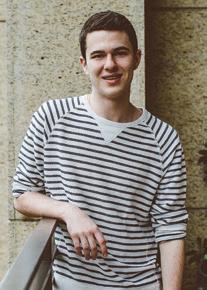

Cayley and Robert made great impacts on their fellow students. Cayley was deeply loved by her friends across campus. They want people to know that she was kind, intelligent, and loved life. She touched many people. Her friends, particularly in her sorority, Chi Beta Epsilon, have been incredible guardians of her memory and reputation. More than one described her as “one of a kind.” She was considering a PR career as a communication major. Cayley was also on the Trinity cheerleading squad.
Robert was a young man guided by his passions for travel and basketball. At age 19 he had lived most of his life overseas. His family says he had friends in 46 countries, a fraction of the countries he had visited. We learned from his family that he was excited about the spring term that was ahead of him. His friends described him as fun, carefree, and loyal. They loved him, and to honor his memory, his family has established a scholarship in his name.
I knew these students, only a little, and they had several qualities in common. They were playful, mischievous, and each had a sparkle in their eyes. I was pulling for each of them for various reasons. They were bright, fun, caring, and sweet. And they loved Trinity University. They were beloved by family and friends. As the campus mourns their loss, we send continued prayers and condolences to their families and friends. While these deaths briefly draw us together, anguish is not a community builder. Each loss cuts at the heart and soul of our University. We find comfort in mourning these losses together. Watching our students rally around family and one another reinforces the goodness and kindness in them and underscores the deep connections our students have with one another. It is heartbreaking and touching all at once.
TRINITY 23 magazine.trinity.edu
– David Tuttle, Dean of Students
Mandadi Foye
In October, Phi Delta Kappa and Zeta Chi hosted a rubber duck race, with all proceeds donated to earthquake relief in Mexico. The sororities raised $330 for the effort. There are currently more than two dozen students enrolled at Trinity who call Mexico home, and many of them have friends and family who were affected by the September earthquakes in Oaxaca and Mexico City.
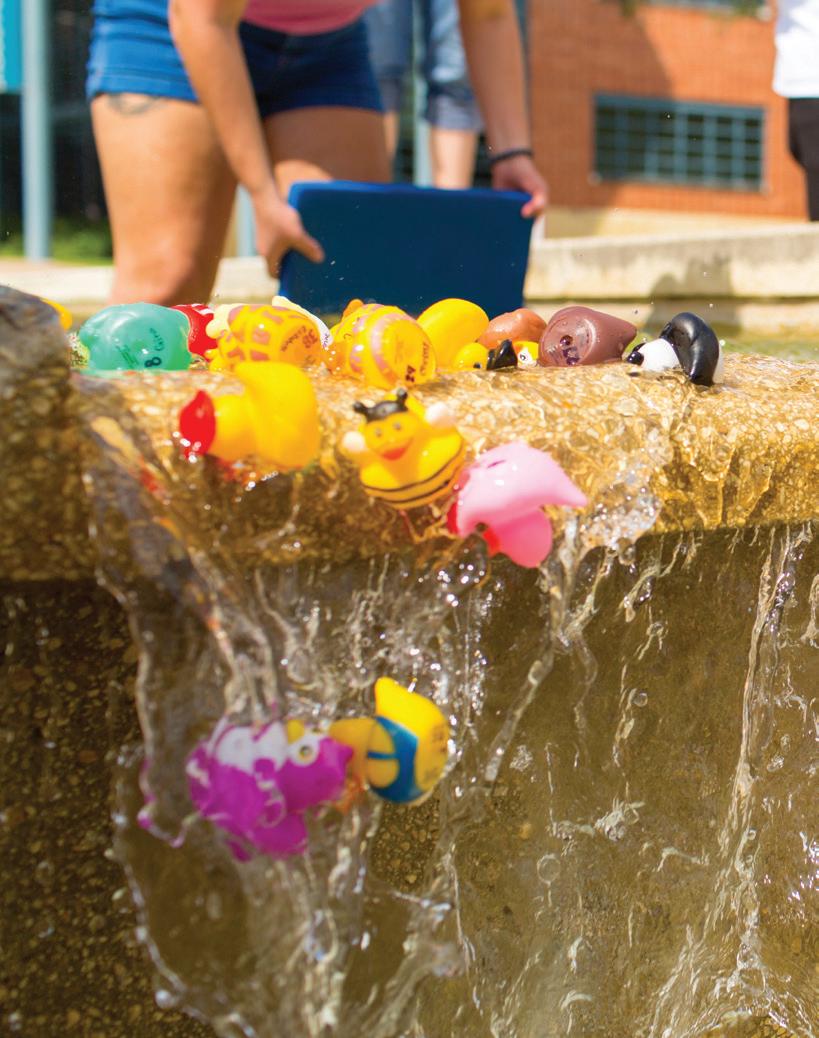
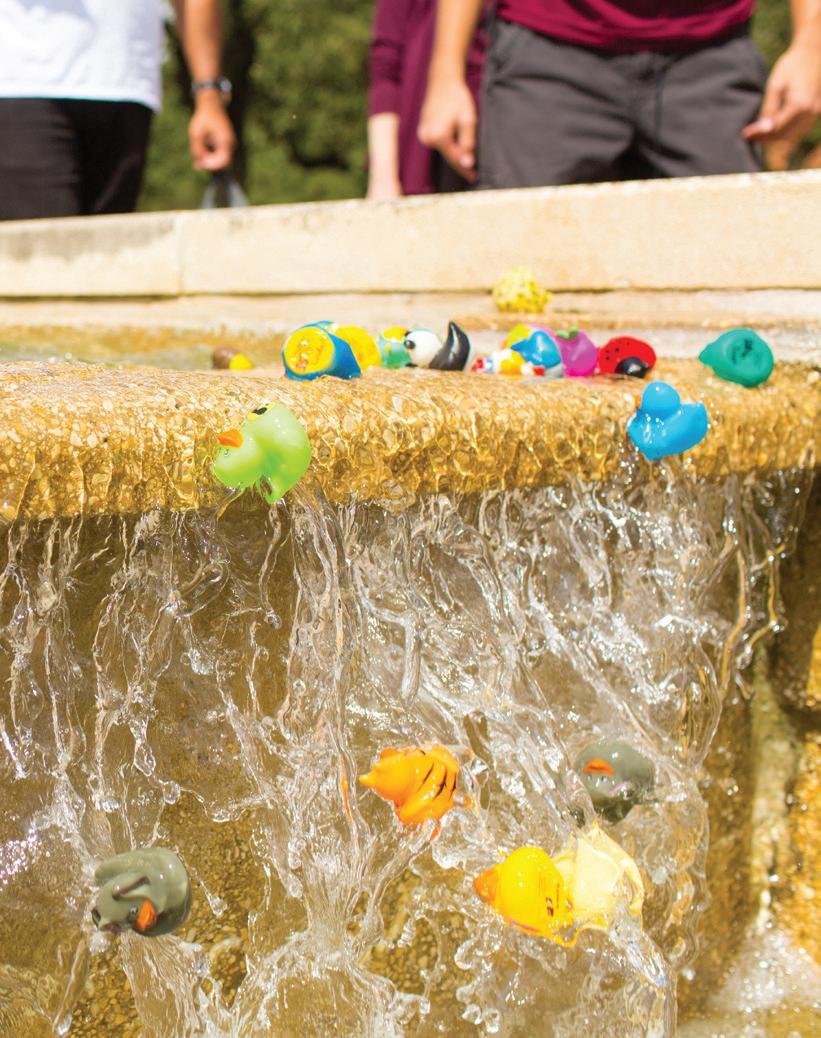
26 Showing Our Stripes 36 The Spirit of Trinity 46 Shouldering the Load 50 Not a Drop to Drink

TRINITY 26 Spring 2018
SHOWING OUR
With more than 13,000 Tigers living in Houston, the Trinity network collectively felt the heartbreaking impact of Hurricane Harvey in August 2017. Alumni near and far banded together in the aftermath to help one another begin the road to recovery.
 words by Molly Mohr Bruni
words by Molly Mohr Bruni
photos submitted by Trinity students and alumni
TRINITY 27 magazine.trinity.edu
You guys have to get out of there. It’s not safe to be in there,” Rose Huber Keshavarzi ’01 pleaded with her parents over the phone as flood water from Hurricane Harvey began gushing into her childhood home. It was 3 a.m. in Houston on Aug. 29, 2017, and the city had just released the Addicks and Barker Reservoirs. The Huber’s home—the heart of their family, packed with memories of countless birthday parties and holiday gatherings—was filling with water quickly as her parents peered over the railing of the second floor.

But Keshavarzi was in Miami, only able to monitor the situation from afar. She logged onto Facebook and began hurriedly asking friends in Houston whether they had boats, whether they could just check on her parents. With the power out, her parents had been turning off their cell phones intermittently to save battery, so Keshavarzi heard from them sparingly.
A week later, Keshavarzi was facing another hurricane head-on: Irma, a Category 5 storm making a beeline for Miami. With her planned flight to Houston cancelled because of the impending hurricane, Keshavarzi scrambled to book another ticket. Her motivation was now twofold: helping her parents in Houston and evacuating Florida.
Keshavarzi spent the next three days in a frustrating, continual pattern of booking, canceling, and re-booking. With Miami International Airport ceasing operations, she finally secured the last flight out of Fort Lauderdale before it shut down, too.
“It was mayhem trying to get out of town,” she says. “People were going crazy. I mean, completely crazy. There were machine guns and dogs at the airport. People were getting arrested after being combative about their cancelled flights.”
Touching down in Houston, Keshavarzi didn’t know what would be in store. After the familiar drive to her parents’ house, piles of debris swallowing the sides of the roads, she raced in, eager to see her parents. Her heart dropped as she watched them slowly amble around the house, aimlessly wandering from room to room in shock.
They looked out of place in a house that didn’t match Keshavarzi’s memories of her childhood home. Muddy footprints splattered across the marble floor, puddles swirling in a blended pattern with gray and white tones. Molding beige curtains, soggy with grime, slumped against ornate columns. Reflections from the crystal chandeliers scattered across rotting, dingy walls streaked with coffee-colored water, a reminder of where floodwater had risen six feet and remained for 10 days. The top half of the affluent West Houston house told the story of decades of joyous, vibrant life the Hubers had built inside; the bottom conveyed the tale of a family who had been gutted and now had to do the same to their home.
Where would they even begin?
TRINITY 28 Spring 2018
With six feet of water in the childhood home of Rose Huber Keshavarzi ‘01, volunteers used kayaks to remove valuables.

TRINITY 29 magazine.trinity.edu
In stepped Aubrey Chambers ’06, armed with SPURS beer— named for its blue and yellow packaging, the sorority’s colors— and hands-on experience with mucking other homes. They didn’t know each other, but both being SPURS, the women were linked by an unwavering bond. Together, SPURS sisters rallied around Keshavarzi, doing everything from chopping into walls to carrying out ruined furniture. They also found her a car and a carseat, and they took her son to the zoo to avoid mold exposure.
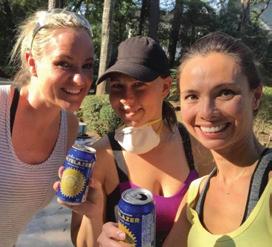
“It was a roller coaster,” Keshavarzi says, “and the Trinity group was there with open arms.”
And while Keshavarzi relied heavily on her SPURS sisters for aid, no one knew the older man who showed up two days later with his own supplies and his own lunch, ready to work.
Like Keshavarzi, Warren Wright ’75 watched helplessly from afar as Hurricane Harvey struck Houston. Having resided there for 30 years, he now lives the retired life in Colorado Springs, Colo. He watched in awe, “painfully aware of how widespread the devastation was,” and felt a longing to help the city he knew by heart.
“I’m retired, and I have a truck. It’s that simple,” Wright says. “They needed people that could swing a hammer or haul furniture, so I just felt like I had the right resources to go down there and volunteer.” Wright made a call to Kathleen Knolle ’75, a Trinity friend, to secure a place to stay. Other than that, he drove down to Houston without a plan, sure that he’d be able to find someone who needed help when he arrived.
Wright loaded his truck to the brim with extra gas, 20 gallons of drinking water, construction tools, and a blue duffel bag of snacks in the passenger seat. Taking a deep breath, he set off on the 14-hour drive back to his hometown.
For his first few days in Houston, Wright tagged along with Knolle and her husband during volunteering trips with their local church, mucking houses for various parishioners. One evening, after Wright had stripped off his clothing and left it in the proper bucket outside—they never wore their work clothes indoors because of the mold exposure—he received a notification that Dave Mansen ’76 had tagged him in a Facebook post. The same Aubrey Chambers had posted in the “Trinity University Alumni – Houston Chapter” Facebook group that Rose Huber Keshavarzi desperately needed volunteers to help with recovery efforts for her parents’ home. Feeling a personal connection to Trinity alumni, Wright changed course and dedicated the rest of his time in Houston to the Huber house.

While Wright, Chambers, and old and new Trinity friends rallied around her, Keshavarzi talked for hours on the phone with her husband, a surgeon who stayed behind in Miami to help with emergencies at the hospital. The day she landed in Houston, a mandatory evacuation of her home in Florida had been ordered. Since then, Hurricane Irma had hit Miami—and Keshavarzi’s house—hard. Dealing with two different homes damaged by two different hurricanes, Keshavarzi looked forward to her family vacation in Mexico, planned well before either disaster had made its appearance.
After seven days, Wright felt his body beginning to tire. He headed back to Colorado Springs, while Keshavarzi hopped on a plane to indulge in the much-needed trip. But an earthquake struck central Mexico, the location of her family’s vacation, the day after they arrived.
Keshavarzi laughs sadly, “They say it comes in threes.”

TRINITY 30 Spring 2018
left SPURS sisters Keshavarzi (center), Aubrey Chambers ‘06 (left), and Nicole Odusch Oakes ‘01 drank SPURS beer, named for its blue and yellow packaging, while mucking Keshavarzi’s childhood home. center, right SPURS sisters tore down walls, pulled up carpets, and removed furniture and fixtures from the Huber home.
Marty Thompson ’95, ’96 plopped down on his couch, exhausted after a long day at the George R. Brown Convention Center in Houston. He fiddled through his pockets, his fingers stumbling on an unfamiliar length of rope, slightly textured with a cool metal ring. He pulled it out slowly—a blue dog leash.

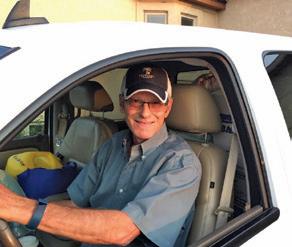
It didn’t make sense for a dog leash to be in the home of someone with a self-admitted “slightly irrational fear of dogs.” Yet, a smile began to creep across his face. Thompson stood up, clutching the leash in his hand, and hung it on a hook by his front door, the cord lazily dangling against the white wall. He would keep it.
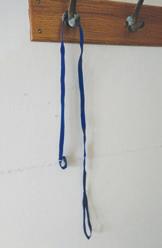
Thompson describes the chaos in the shelter when he arrived, a “constant stream of people” wanting to volunteer mixed in with the “thousands of people that had been scooped up and deposited there because the place that they lived in was underwater.” Not sure where to go, he spotted a friend from high school working at the Red Cross volunteer check-in desk. Reading the fatigue in his friend’s eyes and voice, Thompson offered to take over his shift. The position seemed natural for Thompson, a teacher for more than 20 years.
“I have a loud voice, being a teacher and someone who’s used to giving instructions and telling people what to do,” he
“It is a reminder to me of a day that everything was really simple,” Thompson says. “I had a safe place to be. I had food. All of my needs were met... Everything else that was going on in the world kind of stopped and didn’t matter. It was like we were in a suspended reality.”
Thompson had volunteered at the shelter set up at the Convention Center after hearing about its opening on the news. Just a short bike ride away, Thompson pedaled to the shelter as soon as the roads cleared. “I think I was like just about everyone else in Houston, just trying to find a way to do something because we’d all been sitting there watching it for several days,” he says, describing the helplessness he felt observing the hurricane barrage his city on television news reports and outside his window.
says. “I’m used to just taking control of the situation. Oftentimes it involves a hundred eighth graders; now it happened to be a sea of adults.”
Thompson spent the morning signing in volunteers and organizing groups of them to deploy to different areas of the shelter. In the afternoon, he slipped away from the desk, stumbling upon the dorm specifically set up for evacuees with pets. Hundreds of cots were evenly spaced out across the hall, each with a kennel placed within arm’s reach of the bed.
Despite not being a “dog person,” Thompson walked dogs the rest of the afternoon for people who were elderly or immobile. Strangers turned into friendly faces connected by shared adversity.
TRINITY 31 magazine.trinity.edu
left, center Warren Wright ‘75 loaded up his truck with supplies and drove to Houston from Colorado Springs to volunteer after Hurricane Harvey. right Marty Thompson ‘95, ‘96 hung a dog leash on a hook in his home to remind him of the time he spent volunteering at the George R. Brown Convention Center shelter.
“The silver lining of the whole hurricane experience for so many Houstonians was that it was such a large city, and it just started to feel like it was a small town.”

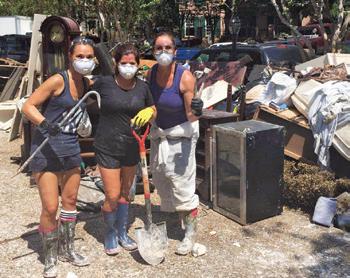

TRINITY 32 Spring 2018
top The home of Melissa Juliano Griffith ‘01 flooded with five feet of water after Hurricane Harvey. left Aubrey Chambers ‘06 witnessed destruction across the city while while volunteering. right SPURS sisters coming together again, Nicole Odusch Oakes ‘01, Griffith, and Jill Amaon Royle ‘01 rallied to muck Griffith’s home.
“Even though we live in a fairly toxic, polarizing political world, Houston didn’t have Republicans or Democrats,” Thompson says. “The silver lining of the whole hurricane experience for so many Houstonians was that it is such a large city, and it just started to feel like it was a small town. I think there was a moment where every single person was trying to figure out, if they weren’t someone needing help, ‘What can I do with the talent that I have? What can I do with the time that I have, to lend a hand to somebody else?’”
issues that would flare up every few hours. One problem he dealt with, he laughs, was fending off celebrities who wanted to visit the evacuees. But Beyoncé made it through, and Newport has the picture to prove it. However, he’s frowning in it to communicate his displeasure about the disruption it caused to the people he felt an instinct to protect.
“I quickly gained that sense of wanting to shield them and allow them to process and find how they were going to transition to the next phase of their recovery as peacefully and privately as possible,” he says.
The Monday after Hurricane Harvey receded from Houston, Chris Newport ’08 showed up at the same Convention Center eager to lend that hand. Because of his previous positions in the city of Houston, including chief of staff for Mayor Annise Parker from 2014-16, Newport was “lucky to know what was happening, where it was happening, and the people that were involved.”
When asked why he wanted to volunteer, Newport says, “I think anybody that was in Houston at the time knows the answer to that question. You want to respond to it because it’s a way to gain control, particularly when you’re dealing with an event that’s caused by Mother Nature where you don’t have very much control.”
Newport quickly got the chance to take control of the situation in a much larger way than he expected. Appointed shelter director by Houston Mayor Sylvester Turner, he was launched from days of sourcing warehouses and moving trucks to running the entire Convention Center shelter.
Crises filled the first few hours of his new post. U.S. Sen. Ted Cruz and his wife had just arrived, hoping to make a donation, while the Convention Center’s inaccessible loading dock was temporarily paralyzing the donation process. Outside, a helicopter was stranded in the air, needing to land to fill up with supplies for other affected areas.
Despite the crazy start, Newport says most of his days passed in a more calm manner, troubleshooting
At the end of a long day of dodging A-listers, Newport would plop down on his couch with his wife, Allison Newport ’07, ’09. In the 20 minutes he’d manage to stay awake, she would give him the latest updates on recovery efforts around Houston from social media. That day’s report: A group of Trinity Zeta Chi sisters were collecting money for clothing and other basic supplies for Laura Whiles ’99, whose home took on four feet of water during the hurricane. Martín Schwed ’12 was gathering a group of Houston chapter alumni to help him receive and organize donations at BBVA Compass Stadium. And a squad of SPURS sisters, who had already helped muck the Hubers’ house, were now about to tackle the home of Melissa Juliano Griffith ’01.
Griffith pulled up to an odd and unfamiliar rental house. The old, quaint house with flaking white brick exterior and partially hidden by pine trees was much different than Griffith’s normal home in Houston—but then again, this wasn’t her normal life, either. Displaced after the released Addicks and Barker Reservoirs filled her home with five feet of sewage water, Griffith had searched desperately for a temporary house. Turned away from hotels because of her family’s two dogs, Griffith clamored alongside thousands of evacuees to find nearby rental homes, now a scarcity in Houston because of the high demand. Griffith stepped down the curving, pebbled path to her new house, with no possessions other than a duffel bag
TRINITY 33 magazine.trinity.edu
“You want to respond to it because it’s a way to gain control, particularly when you’re dealing with an event that’s caused by Mother Nature where you don’t have very much control.”

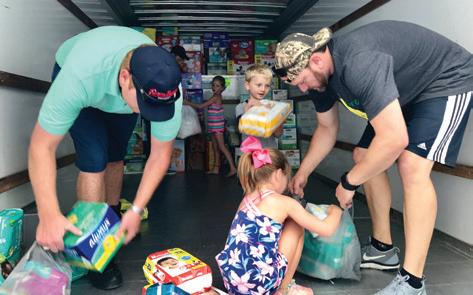




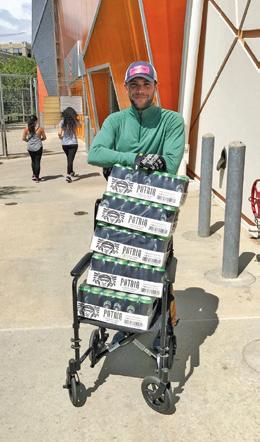
TRINITY 34 Spring 2018
1 5 2 6 3 7 4
1 Emme Bettes ’19 organized a donation drive for the National Guard, first responders, and volunteers who jumped into action in the Rockport-Fulton area after Hurricane Harvey. 2 Jenna Shultz ’21 partnered with TUVAC to raise money in the wake of Hurricane Maria, donating more than $4,200 to Army Reserve soldiers helping with recovery efforts in Puerto Rico. 3 Iota Chi Rho lined up Trinity musicians for “Rock for Relief,” a benefit concert to support Harvey victims. Fraternity alumni matched donations totaling $800 to Harvey HELP, a relief fund to support students.
filled with clothes and the few valuables she could grab in the wake of the flood.
It was Sept. 3, and after evacuating to her family’s lake house for a week, Griffith had just arrived back in Houston. It was her birthday, and she wanted to spend it with her family and friends in her hometown, even if not in her home. Three of her SPURS sisters, along with her husband and son, were waiting for her at this new rental house. While she drove back, Griffith thought about the help she may or may not get when she returned to Houston. It had been more than a week since Hurricane Harvey hit, and her neighborhood had been one of the last to dry up. “It was hard waiting and hoping that the volunteers would still be there,” she says.
So Clark showed up for Griffith on her birthday, arms weighed down by bags of clothes and boxes of kitchen supplies, all bought with money collected from Griffith’s SPURS pledge class. Alexia Epting Davie ’02 and Lyndsey DiBello Knight ’01 met them, and from there, the SPURS sisters began the process of making “a brand new and completely empty house...more of a home,” Griffith says.
But first, a celebration. Candles topped a triple-layer chocolate birthday cake, their glow softly illuminating the loopy, hot pink-frosted handwriting on top. A vase of blooming yellow roses, the SPURS sorority’s flower, sat on the countertop. The women alternated sipping champagne while stocking the refrigerator and taking bites of cake while blowing up air mattresses. They propped up a
But a team of Tigers appeared, responding to Griffith’s Facebook plea. SPURS sisters helped with grueling mucking work, while Rose Huber Keshavarzi, who had just started remediating her parents’ home, walked Griffith through the recovery process. Trinity friends who had disappeared for a decade came out of the woodwork to lend a hand, such as Scott Mury ’00, who arrived sporting a Trinity shirt, and Dave Caldwell ’00, who brought the lunch of Tigers—Whataburger.
That team of alumni, according to Tami Ellis Clark ’03, is part of the “unspoken benefits of attending a small school. Trinity is small, but it’s powerful because the connections you make are so long-lasting.”
Clark says the power of these connections naturally brings Tigers together in times of need. “Even if it’s been a while since you’ve seen each other or talked, if there’s someone who’s enduring such unspeakable devastation, it’s just this natural response to rally together and show up. You just have to show up.”
five-foot-tall teddy bear named “Harvey” in Griffith’s son’s new bedroom, empty but soon to be filled with toys and craft supplies mailed by Tigers as far away as London.
While the women put away dishes and silverware in the kitchen, they took turns flipping through the pages of photos from Trinity days, the albums some of the few personal possessions Griffith grabbed from her home before evacuating. As they giggled over memories from dress-up parties and bid days, Griffith felt herself grinning. The road to come would be tough, but for tonight, she would enjoy herself as her friends and family ushered in a new year—and a new chapter—of her life.
“It was such a stressful and scary time not knowing,” Griffith says. “Every day something was changing... And it was so comforting and reassuring to know that I had all this help pouring in. People were not afraid to come forward offering anything they could that they thought might help, and I feel like that really epitomizes the resiliency and determination of the
community.”
TRINITY 35 magazine.trinity.edu
Tiger
“If there’s someone who’s enduring such unspeakable devastation, it’s just this natural response to rally together and show up.”
4 Tiger Men’s Tennis piled into a van headed to Aransas Pass to muck homes and unpack truckloads of supplies for the residents affected by Hurricane Harvey. “As hard as that day was from a labor standpoint, we got to go home,” says head coach Russell McMindes ’02. “Those residents were living in it.” 5 Tiger Women’s Golf raised more than $5,600 for victims of Hurricane Harvey through its fundraising drive called “Holeing Out for Harvey,” which asked for pledges toward each of the birdies Tigers made at their fall 2017 tournaments. 6 Martín Schwed ’12 organized donations at both the George R. Brown Convention Center and the BBVA Compass Stadium in Houston after Harvey. 7 Justin Clark ’00 (far right) helps with the donation drive #HarveyBabies, filling a 20-foot-long moving van to the brim with donated baby supplies. The drive was started by Tami Ellis Clark ’03, with the help of SPURS sisters Genessa Curran Swint ’02, Ashley Newton Farha ’03, and Amanda Farrell Maul ’03.
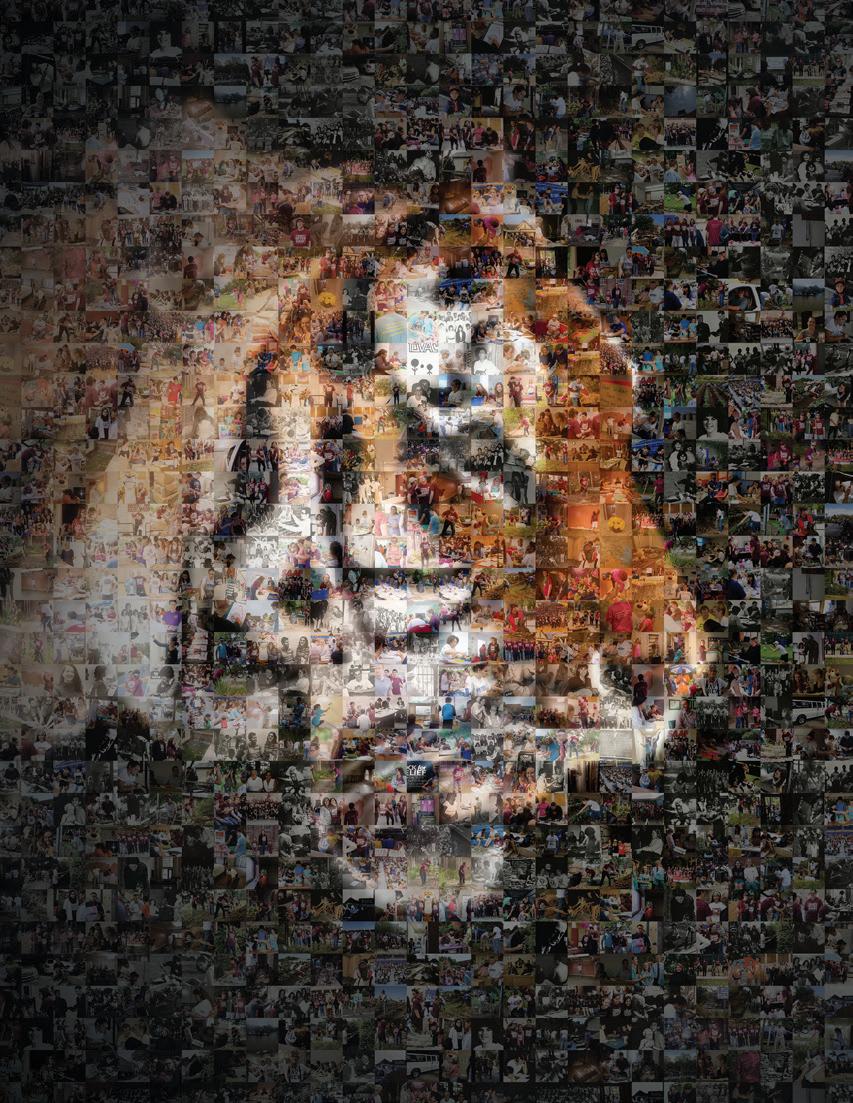
TRINITY 36 Spring 2018
Our lasting legacy is fueled by dedication, compassion, and hope.

words by Jeanna Goodrich Balreira
’08
with contributions from Molly Mohr Bruni, Jeremy Gerlach, and Susie Gonzalez special thanks to University Archives, the Trinitonian, and the Mirage
TRINITY 37 magazine.trinity.edu
before Hurricane Harvey struck the Texas Gulf Coast, Jon Foster ’86 was facilitating an all-hands call. It was late in the day, but the work in front of him showed no sign of letting up: He and a team of other medical professionals had to help procure 16 helicopters, five airplanes, six buses, three duck boats, 400 cots, 13 electrical generators the size of semi-trailer trucks, four diesel fuel tankers, three food trucks, 35,000 ready-to-eat meals, 118,000 bottles of water, 600 gallons of bulk water, 1,000 bags of ice, 3,000 rolls of paper towels, 1,000 sandbags… Oh, and a seven-day full supply of linens, medications, and other medical supplies for the 18 HCA hospitals in the affected areas.
All in a 24-hour day’s work?
Foster, whose normal role with Hospital Corporation of America (HCA) is president for the American Healthcare Group, had been called on to immediately switch gears. He was now second-in-command at the HCA Command Center, a part of Enterprise Emergency Operations in Nashville, Tenn. With the 24/7 job, Foster helped manage a rapid-response team of about 160 staff members who assessed ongoing needs and deployed support to areas impacted by the storm.
“A focus on safety is what drove all the decisions we made before, during, and after the storm,” Foster says, recalling the service HCA provided to roughly 10,000 employees and 10,000 patients, family members, guests, and even pets in Harvey’s wake. “In healthcare, we have the benefit of seeing every day the impact that we have on our communities.”
While Foster is only one of dozens of Trinity alumni who came to the aid of others during Hurricane Harvey (read more on page 26), we can’t help but recognize this common sentiment rings true: Trinity students, alumni, faculty, and staff tend toward an innate desire to have an impact on our communities. Foster himself chose Trinity because of its “exceptional reputation for developing healthcare leaders”—leaders who, regardless of title or role, have the “privilege of witnessing community impact” each and every day.
But what exactly is this innate desire? What is it about the Trinity experience that flips a switch in us, invites us to pause and reflect, and challenges us to act? And how do we bottle this spark, this fire, this spirit, to ensure it will be instilled in generations of Trinity students to come?
TRINITY 38 Spring 2018
Two months
after Harvey, Jessica Van Zijll ’15 found herself back on Trinity’s campus, spearheading a volunteer effort just as she’d done so many times several years before. Van Zijll, an international business major, began volunteering with TUVAC as a sophomore in 2012 and one semester later became the leader of a group of Trinitonians who tutored refugee and ESL students at Jackson Middle School. Fast forward to 2017, and Van Zijll felt a familiar sense of community in the Fiesta Room on that October afternoon, overseeing a blood drive to help victims of Hurricanes Harvey and Irma. Van Zijll has elevated her love for service into a fulltime job with the South Texas Blood and Tissue Center (STBTC), where she helps find blood donors to fill blood drives for the Center.
Van Zijll says she knew Trinity students would do what they always do—show up and support the cause. What she didn’t expect was equally encouraging: So many Trinity students, faculty, and staff showed up for the drive that STBTC struggled to find the resources to process them all.
Ryan Reusch ’18, the executive coordinator for TUVAC this school year and a neuroscience major, was just as heartened. With initial slots for 40 Trinity students, 53 showed up, and 13 of them waited in line for more than
an hour to give blood. “To hear that the donations would end up going to 153 patients who needed blood…” Reusch says, trailing off with a thoughtful pause, “well, I was really, really impressed with how Trinity supported the project so thoroughly.”
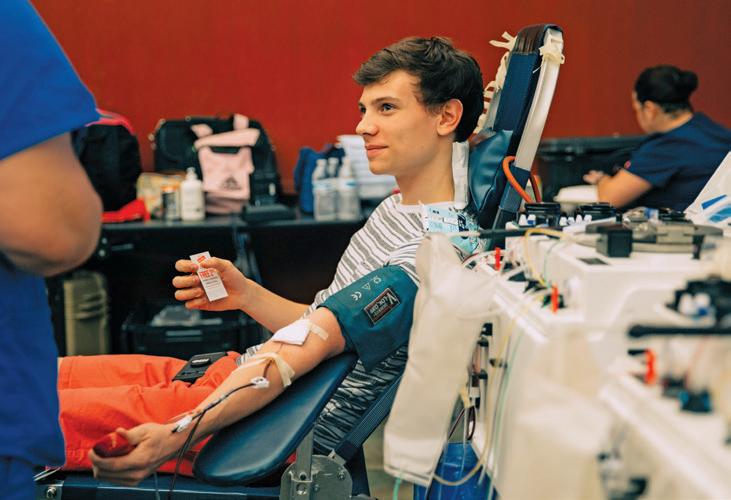
“I didn’t realize how much Trinity was willing to get involved,” says Noureen Morani ’18, TUVAC’s marketing and recruitment coordinator and a business analytics major. “In times of crisis, the students really did come together. It wasn’t about a Trinity bubble or a San Antonio bubble. It was just, however we can help, we want to. Even if it’s not a global reach, it’s really great to take part in the small, everyday impacts that TUVAC and Trinity students have.”
It should have come as no surprise, then, that on the afternoon of the blood drive, the Spirit of Trinity resounded. “It reminded me of how great my time was on campus [with TUVAC],” Van Zijll says, recalling her work with the Jackson Middle School students. “I was amazed every single day at how hopeful and energetic and full of spirit the kids were, even though they had gone through things that I could never imagine. Seeing their energy encouraged me to keep pursuing to give back, to see how I could help our local community and San Antonio.”
TRINITY 39 magazine.trinity.edu
More than 50 Trinity students and staff gave blood at an October 2017 drive, organized by TUVAC and the Student Government Association on behalf of the South Texas Blood and Tissue Center to support hurricane victims.
Trinity University is not just a group of buildings with classrooms, laboratories, students, and teachers. Trinity is a spirit, a power establishing certain attitudes towards each other, a definite philosophy of life, and a motive for service. It is intangible, but very real. If the older students have the Trinity spirit, new ones will catch it and they in turn will pass it on to others. The Trinity spirit is the most vital and powerful factor in the institution.
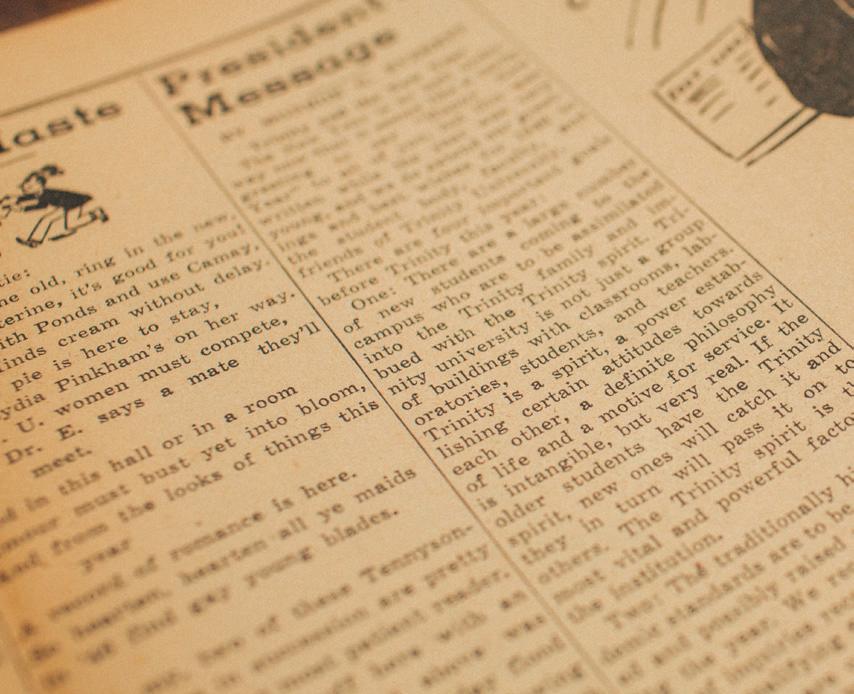
TRINITY 40 Spring 2018
While evident
in the events of the summer and fall of 2017, the Spirit of Trinity isn’t new. It was mentioned as early as the 1919 course of study bulletin, where Trinity had vowed to be a “training camp” for volunteerism in ministry and foreign service. (Trinity would later go on to have a graduate serve in Crossroads Africa, the forerunner to the U.S. Peace Corps, and has since had more than 175 Peace Corps volunteers… but that’s a different story, one you can read more about in the Summer 2016 issue of Trinity magazine.) In 1923, Trinity participated in the Student Volunteer Convention in Indianapolis, where three Trinitonians contributed to conversations about Christian students and world problems. The 1920s and ’30s saw an increase in Life Work Recruits, an organization composed of students who planned to give full-time service to Christian endeavors. From World War I through the Great Depression, the Trinity spirit made an impact.
If Monroe G. Everett, president of the University from 1942-50, had his way, the Spirit of Trinity also would never grow old. Everett, a Presbyterian minister with significant denominational recognition,1 oversaw Trinity’s move from Waxahachie to San Antonio. Facing the daunting task of relocating the campus as well as integrating with the University of San Antonio, Everett facilitated community service activities, both on and off campus, so students and faculty could bond. With the U.S. in the midst of World War II, campus-wide clean-up days were flanked by calls to donate blood, write letters, and serve as volunteers in local U.S.O. canteens.2
Everett saw something in these service activities, something strong enough to put words to, to share with the Trinity community. In 1946, he wrote to the Trinitonian outlining his goals for the institution.3 Goal number one? Instilling the Spirit of Trinity.
“There are a large number of new students coming to the campus who are to be assimilated into the Trinity family and imbued with the Trinity spirit,” Everett wrote. “Trinity University is not just a group of buildings with classrooms, laboratories, students, and teachers. Trinity is a spirit, a power establishing certain attitudes towards each other, a definite philosophy of life, and a motive for service. It is intangible, but very real. If the older students have the Trinity spirit, new ones will catch it and they in turn will pass it on to others. The Trinity spirit is the most vital and powerful factor in the institution.”
By the end of the year, the Trinity spirit had sparked the creation of the Delta Pi chapter of Alpha Phi Omega (APO), the service fraternity whose mission was to “perform services for the university, community, nation, and the fraternity.”4 Over the next two decades, other Greek
organizations began to place increased emphasis on the service aspects of their missions. The SPURS sponsored campus collections for the World University Service organization and worked once a month for the Volunteer Service Bureau, and Delta Kappa Phi provided assistance at Brooke Army Medical Center and collected teaching aids for the Mission Road School. These were among several other fraternity and sorority service projects.
But it was the Chi Delta Tau fraternity that inspired Trinity’s most concrete dedication to community service to date. In 1964, the fraternity organized a study hall program for African-American students at the Sutton Housing Project on San Antonio’s East Side. The student association was so impressed by the project’s results, they initiated a campus-wide Community Service Program a year later. Led by Bruce Kuenzli ’67 and David Earle ’69, the Program was designed to “give Trinity students the opportunity to participate in community affairs.” Four San Antonio organizations benefited from the Program that year: the House of Neighborly Services, where students could participate in everything from creative dramatics to auto mechanics to charm classes; the Brooke Army Medical Center at Ft. Sam Houston, where students helped provide relief from the monotony of a hospital for long-term patients;5 the Ella Austin Orphanage, where students tutored 20 elementary school children; and the Children’s Service Bureau, where students took small children on trips, picnics, and to the park.6
The Community Service Program was an instant success. By 1967, more than 200 students were actively involved in ten different service projects in San Antonio. “The university student of today is caught in an electronic age where the world has become a village,” Earle told the Trinitonian in September 1967 (the irony is not lost on us). “The war in Vietnam, the riots in Detroit, and the poverty in the Rio Grande Valley are very much a part of our lives as students and very much a part of the lives of the people of San Antonio… The Community Service Program brings the student an awareness of the human predicament and the needs of other people and himself.”7
The Program expanded into this world-village by adopting two national activities in 1972, “Project Find” and the Chicano Identity Program.8 At home in San Antonio, Program community service chair Louise Locker ’71 became known as “Elf Louise” after beginning a volunteer program to purchase toys for needy children from their wish lists to Santa (read more about Locker on page 56). Additionally, a vanguard of Trinitonians enlisted in Crossroads Africa and the Peace Corps; by 2001, Trinity had produced more volunteers for the organization than any other college or university in
TRINITY 41 magazine.trinity.edu
South Texas.9 Don Williams ’69, a member of the Community Service Program in the late ’60s, told the Mirage that “the group has helped the spirit of the community.”10
This spirit continued to flourish through the 1970s, marked by the transformation of the Community Service Program into the Trinity University Voluntary Action Coordinating (TUVAC) Board under the leadership of Rex Smith ’74 and Anne Shuttee ’76. Though it has been through a few name changes— to the Trinity University Volunteer Action Center in the late ’70s, to the Trinity University Volunteer Action Committee in the ’90s, and finally to the Trinity University Volunteer Action Community in 2005—TUVAC’s mission has remained true to its roots: to connect volunteers to community service programs, to bridge the social gap between Trinity University and the greater San Antonio community, and to raise awareness of issues pertaining to social responsibility so that Trinity students may become better informed citizens of their university, community, and world.
For more than four decades, TUVAC has continued to facilitate service opportunities both on and off campus. Having undergone an organizational shift in the late ’80s, spurred by then-director Klee Michaelis ’87, TUVAC also aimed to create “a better feeling of fraternity with the volunteers.”11 A way to bond with other Trinity students and with the San Antonio community, service projects expanded to include group work utilizing any talents and any abilities.
While TUVAC continues to be one of the main sources for community service involvement on campus, students, faculty, staff, and alumni have invoked the Spirit of Trinity in additional ways. In 1989, the University held its inaugural Volunteer Awareness Week, an opportunity to “get students to help out the community in ways TUVAC can’t always do,” Jeff Mandell ’97 told the 1997 Mirage
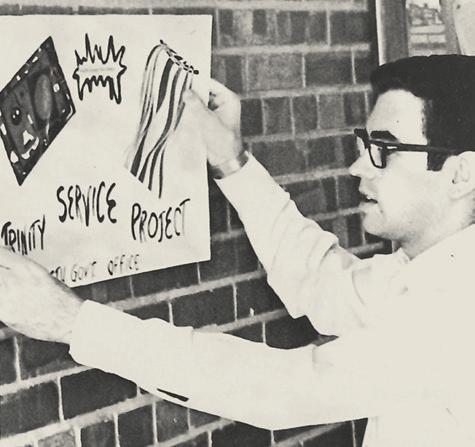
In 1992, Elizabeth Schexnailder ’94 launched Trinity’s chapter of Alternative Spring Break. Billed as “The Toughest Spring Break You’ll Ever Love,” the first Alternative Spring Break program featured four excursions designed to provide volunteer aid to economically depressed communities in Mexico, Colorado, Louisiana, and Utah.12 Now called “Tiger Breaks,” the alternative break trips continue to be a Trinity tradition, with recent trips to Dominica and New Orleans.
Service was added as an optional component to New Student Orientation in 2001 with the first year of the Plunge, a five-day pre-orientation mission event designed to introduce Trinity students to San Antonio through community service. In faith and fellowship, Plunge participants actively engage in volunteerism as well as mentorship and leadership roles. Past projects have included building wheelchair ramps for housing accessibility as well as serving meals and engaging in conversation at the Catholic Worker House. “It has been a really good experience. It’s important for students to get into the community,” Clare Parry ’03 told the Trinitonian in August 2001 of the first

TRINITY 42 Spring 2018
above Bruce Kuenzli ’67 advertises the Trinity Service Project on campus. (Mirage, 1967) right A Community Service Program volunteer mentors a young girl at the Ella Austin Orphanage. (Mirage, 1968)
Plunge project,13 assisting at the House of Neighborly Service. “It’s a world that’s very different from Trinity but very close by.”
Now, in addition to taking the Plunge, all students are encouraged to participate in community service through a class-wide New Student Orientation (NSO) service project. Beginning in 2014 with a partnership with the San Antonio Food Bank, Trinity students have turned out in record numbers to bag after-school care packages for hungry children, pair bone marrow donors with patient matches, and renovate homes and nonprofits off campus.
If participating in that first service project sparks the Spirit of Trinity, students may sign up to live in HOPE Hall, a living-learning residence hall community formed in 2012 by Katie Ogawa ’14. Looking for a way to extend service beyond APO and TUVAC, Ogawa told the 2012 Mirage that she was encouraged to “focus the Hall on something its residents were passionate about, and what I’m passionate about is homelessness.” HOPE stands for Homelessness Outreach Pursuing Education, and it continues to do just that: In 2017-18, the Hall housed 70 students from all class years, up from 34 at its conception. Residents have logged an average of 3,500 service hours per year.
And while most students will maintain they weren’t in it for the recognition, Trinity has honored students and alumni for dedication to community service. Perhaps the most notable, the Spirit of Trinity award is given to loyal alumni who embody what it means to be a Trinitonian and who have given exceptional service to the community through volunteer and professional organizations. First given in 2002 to John H. Moore III ’60, former chair of Trinity’s Department of Education and longtime community supporter, the award has also been bestowed upon Jim Potter ’63, ’67 and Glenna McCord ’47, among others. Additionally, the Trinity University Alumni Association honors one to four graduating seniors each year with the Heart of Trinity awards for service to the University and service to the community.
The University itself has also been honored, earning eight consecutive years of placement on the President’s Higher Education Community Service Honor Roll, which recognizes institutions that support exemplary service programs and raise the visibility of effective practices in campus-community partnerships.
“Whether through co-curricular experiences, curricular experiences, or any other number of opportunities, community service becomes a way of life,” says Scott Brown, TUVAC adviser and assistant director of experiential learning (read more about Brown on page 46). “Getting involved in the community is the seed; we plant it here, and then it blossoms when students leave Trinity.”
to watch them blossom,” says Sheryl Tynes, vice president for Student Life. Tynes, a sociology professor who started at Trinity in 1988, says she’s had “a very long time to see how students have come to Trinity with the sparks of a fire in their bellies and leave with it still ignited.”
120,000 hours
Students, faculty, staff, and alumni spend more than each year giving back to the community.
The Community Service Program became a student organization in 1967 and exists today as TUVAC, the Trinity University Volunteer Action Community. years
Trinity’s first official service-learning course was sponsored by the chemistry department and the local chapter of the American Electroplaters Society. Among the first courses in a community services group, it was four semesters long and offered over two years.
51 12+

programs, organizations, and other ways Tigers can give back to the community, including:
Service-learning through academic courses
Community-based federal work-study
Trinity Cares alumni service projects
Welcome Week service excursions
Team Up Scholars program
United Way Days of Caring
Alpha Phi Omega Volunteer fairs
Tiger Breaks
The Plunge
HOPE Hall
TUVAC
TRINITY 43 magazine.trinity.edu
" /t’s
fun
1955
Tynes harkens back to mentors as early as Earl Lewis, the founding father of Trinity’s urban studies program in 1968, up to Christine Drennon, the urban studies professor who assigns her introductory-level students to take bus lines around the city in order to experience it from a different viewpoint. “Our students go out into the community. We encourage that; we’ve always encouraged that. We’ve always been an institution engaged with the urban core [of San Antonio] and cared about urban diversity,” Tynes says, “and I’ve always been proud that TUVAC is our largest student organization and that they log thousands of hours in the community each year.”
“People want to feel like they’re making a difference, like they’re taking care of themselves and the planet,” Tynes says. “Our students seem especially hardwired that way… or if they’re not, their game is upped by their peers and what they see around them. How can you not have a fire lit under you by those who are saying, ‘I need to do something big’?”
Reflection is an essential component in service learning, Nickle says; Scott Brown and Tynes agree. Champions of service learning cite the importance of reflection in fully digesting an experience or undertaking, and they see it as a bridge connecting service to learning. Nickle adds that reflection also significantly enhances ties to faith for those who seek it. “There’s something kind of recalibrating about engaging in service, both reflectively and across time, that invites us into the presence of God in powerful ways,” he says. “Something you will almost universally hear on reflection is that students will say, ‘I got so much more than I gave. In this experience of giving back, I’ve been given, and given, and given…’”
Tynes cites Trinity’s summer bridge program and the Plunge as two of those “somethings big.” Designed to welcome new students from underrepresented populations, the summer bridge introduces resources that are available to make a difference in the transition to being a student at Trinity. Along with the Plunge, these programs orient new students through service. “With these kinds of programs,” Tynes says, “we affirm that we value a deep connection with these communities, not a superficial one.”
The Rev. Stephen Nickle, Trinity University chaplain and leader of the Plunge, sees this deep connection having a profound impact on a student’s college experience. “Trinity students come to this campus and encounter something bigger than what they’ve known before,” he says. “There’s not one Trinity experience, there are hundreds of different ones. I’ve heard people tell stories of the place, the experience, the relationships, this teacher, that chaplain—even in the tiny ways, these had a life-shifting impact.”
Each unique college experience, Nickle says, is a time for students to reflect on what they’ve been called to do. Nickle references the “terrific Frederick Buechner quote”: The place God calls you to is the place where your deep gladness and the world’s deep hunger meet. “People want to have a sense of purpose and mission, and yet when they come to college, they don’t yet know what that looks like. I barely know what that looks like at age 57!” Nickle says with a laugh. “So part of what we’re cultivating is an awareness of that process. Being in the context of service initiatives invites you to realize, ‘I’ve got something to give, even just for this day or this meal; I’m doing something that’s impacting the community, the world, God’s creation.’”
Giving. It’s at the heart of the Spirit of Trinity, and at the heart of our Presbyterian roots. The Rev. Raymond Judd ’56, Presbyterian minister and University chaplain from 196799, says our roots create an atmosphere of giving, of doing, of helping, of providing for someone. Judd and his wife, Mary Jane ’57, are quick to cite examples where giving back transcends time, money, and service. The Trinity University Women’s Club, of which Mary Jane is an active member, has given scholarships and engaged in community service for more than 75 years; the Raymond Judd Student Emergency Fund was created to assist Trinity students who encounter an unforeseen financial emergency or catastrophic event. With more than 280 scholarships and more than 580 individual endowment funds, the University has made it a priority to ensure all Trinity students’ needs are met—especially when they need it the most.
“The giving spirit is among us,” Judd says, “and that is a very positive thing to emphasize right now” in a period where we could just dwell on tragedies. Judd says “the sky’s the limit” in terms of where people can serve and help; the role of a college education is to ensure “that view gets bigger and bigger, because the possibilities are endless where we can plug in.”
He points out that “Parker Chapel is right there in the middle of campus, and it’s a reminder of our roots. Our roots go deep, and within those roots—if the roots have been doing what they’re supposed to do—a call to service.”
Judd says this call to service has been instilled from the beginning in Presbyterian education. Many Presbyterian colleges were established with the liberal arts at their core, their founders striving to think past narrow views. When asked if going to college raises one’s perception of the world, Judd responds: “If it doesn’t, you’re in the wrong college.”
TRINITY 44 Spring 2018
“With these kinds of programs, we affirm that we value a deep connection with these communities.”
Years ago,
Raymond Judd saw a quote by journalist Sydney J. Harris on a billboard while driving down the highway: The whole purpose of education is to turn mirrors into windows.
The reverend thinks about this sentiment still to this day. “I love that because I think about when we were students, how much we were thinking about ourselves and what we were going to do, and what we were going to major in, and what we were going to study. It was a mirrored world that we were in,” Judd says. “But the purpose of our college education was to open us to the world and to the service of the world. That is what’s been in the very backbone of Trinity all these years.”
Judd calls out names of people who, spanning ten decades, give concrete examples of a somewhat abstract concept. Trinity people are making a huge difference in the world, and Judd recalls stories that have made an impact on him: Everett King, class of 1920, who saw his friend Carlton Winn, class of 1922, in need of financial assistance and came to his aid; Winn,
who in turn left Trinity the money for a new residence hall in King’s honor and paid individual students’ tuition bills; Stephen Curry ’84, a pastor who has turned tragedy into helping people in the wake of the mass shooting in Sutherland Springs, Texas; Daniel Lubetzky ’90, founder of KIND, who did so in the ethos of health and wellness; Ron Nirenberg ’99, mayor of San Antonio and a personal friend of the Judds, who became mayor “not for the money but because he has a burning desire to help the city.”
“It’s part of the Spirit of Trinity, the spirit of being a Tiger, that we’re out there to help,” Judd says with a smile.
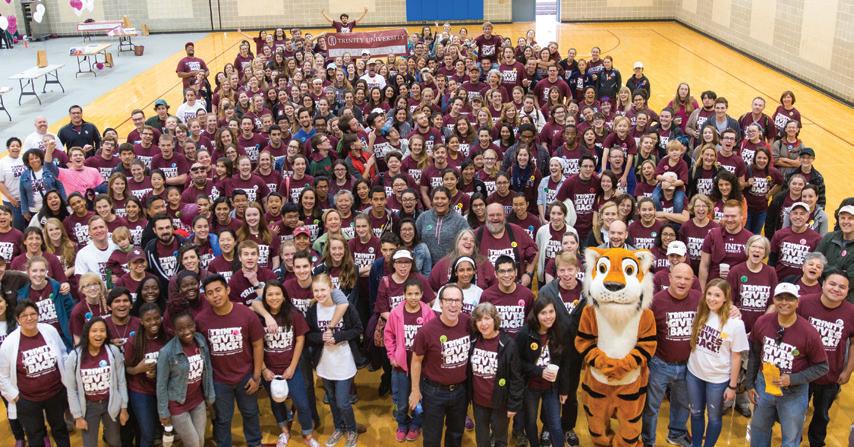
Mary Jane adds, “I’ve always felt that if you have an opportunity to learn, you can’t help but see the needs in the world if your eyes and your heart are open...”
“...And that’s why I feel so strongly that the whole purpose of education is to turn mirrors into windows,” Judd adds. “I love that my mind dwells upon that. That is the Spirit of Trinity. And that spirit is alive and well.”
References
1 R. Brackenridge, A Tale of Three Cities, p. 149
2 R. Brackenridge, A Tale of Three Cities, p. 152
3 Trinitonian, Jan 11. 1946
4 Mirage, 1946
5 Trinitonian, Sept. 30, 1966
6 Trinitonian, Nov. 11, 1966
7 Trinitonian, Sept. 15, 1967
8 Trinitonian, Sept. 15, 1972
9 R. Brackenridge, A Tale of Three Cities, p. 249
10 Mirage, 1968
11 Mirage, 1986
12 Trinitonian, Nov. 22, 1991
13 Trinitonian, Aug. 25, 2001
TRINITY 45 magazine.trinity.edu
During the “Trinity Gives Back” day of service for President Anderson’s inauguration in February 2016, Tigers gave more than 2,000 hours of service to the San Antonio community.
For more than 40 years, the Trinity University Volunteer Action Community (TUVAC) has served as Trinity’s volunteerism and community service muscle, providing helping hands and material support to humanitarian causes throughout campus, San Antonio, and beyond.
Readers will see this acronym splashed across several other pages because TUVAC is one of the most visible ways the Trinity community extends its legacy of hope outside our skyline campus and into the world.

The 2017 academic year was a challenging one for TUVAC, says Scott Brown, TUVAC adviser and assistant director of experiential learning. With an ever-mounting list of natural and man-made disasters in Texas, Nevada, Louisiana, Florida, and Puerto Rico, the organization had to ask itself a tough question: Just how much can TUVAC take on at once?
The answer, Brown says, lies with TUVAC’s six student leaders—three volunteer coordinators, one logistics manager, a marketing manager, and an executive coordinator—along with the hundreds of students who volunteer their time, sweat, and cheer.
We sat down with Brown to find out more about what TUVAC looks for in its student interns and volunteers, and how TUVAC shapes Trinity’s spirit of resiliency and hope when times get tough in the outside world.
Can you describe the general spirit of TUVAC? How does it fit in with the spirit at Trinity?

Scott Brown: Regardless of their roles, our student leaders are all committed to community service and social responsibility. The fact that TUVAC has been around for 40-plus years certainly gives us a historical context for our legacy and a strong foundation to grow the program in response to our community partners’ needs and student interest. I inform every TUVAC leader that our organization is sponsored by the University, that we’re an organization that’s
been around for decades, and that we’re now affiliated with the Center for Experiential Learning and Career Success. So, it’s more than just a student involvement position during the academic year. Our TUVAC students develop as leaders, gain practical skills, reflect on their experience, and motivate their peers to get involved in the San Antonio community through community service and other experiential learning projects.
What sort of students are you looking for? Who really shines with TUVAC?
SB: First and foremost, it’s passion: a general concern and interest in immersing oneself into the San Antonio community. As far as job-related tasks, we can teach and advise students in that regard, but it comes back to having a passion and seeing oneself as a responsible person in the community for students to be successful as a TUVAC leader. Our students are guided by two of Trinity’s core values— impact and community—and they want to instill those values and passion for civic engagement in others. The fact that we’re a University-sponsored organization also helps drive our mission in getting students connected to San Antonio. To that end, one of TUVAC’s goals is increasing students’ self-efficacy and awareness of what it means to be an active member in the community.
What has inspired you the most about being involved with TUVAC?
SB: I’m fortunate to advise TUVAC as one of my responsibilities in the Center for Experiential Learning and Career Success, in addition to coordinating service-learning and undergraduate research programs. What inspires me the most, really, is the students I interact with on a daily basis. There isn’t a day that goes by when I don’t enjoy coming to campus because I know in the office next to me are TUVAC student leaders reaching out to community partners, setting up volunteer
TRINITY 46 Spring 2018
What inspires me the most, really, is the students I interact with on a daily basis.
Shouldering the Load
TUVAC, Trinity’s volunteering arm, extends a helping hand to off-campus communities in need
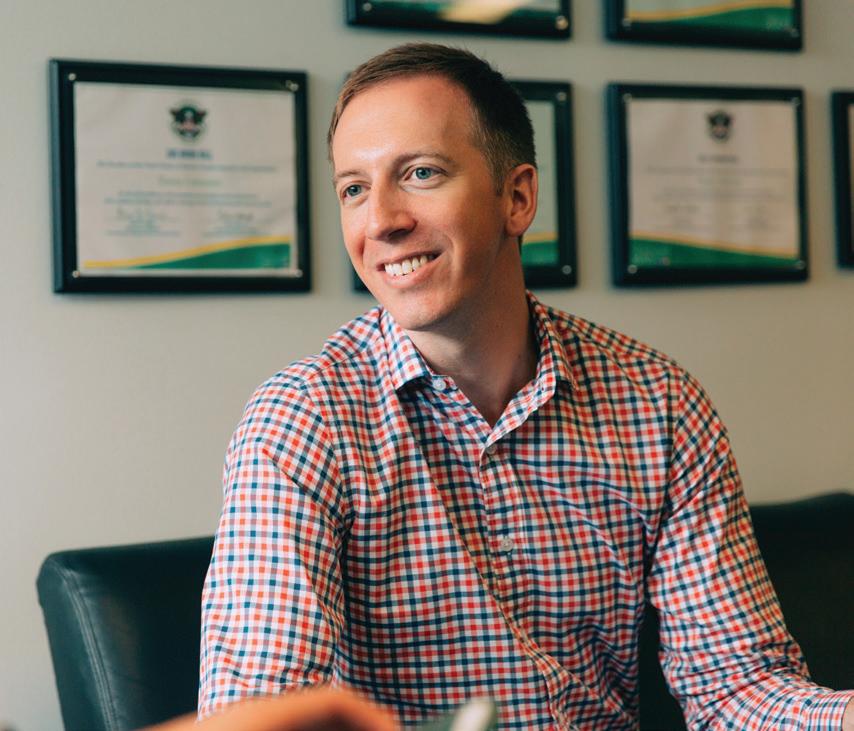 words by Jeremy Gerlach
photos by Anh-Viet Dinh ’15 and Jeanna Goodrich Balreira ’08
words by Jeremy Gerlach
photos by Anh-Viet Dinh ’15 and Jeanna Goodrich Balreira ’08

TUVAC members and other Tigers serve in a variety of ways throughout the year. From service-oriented projects at New
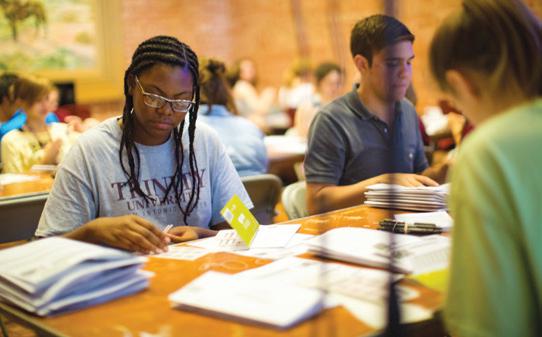

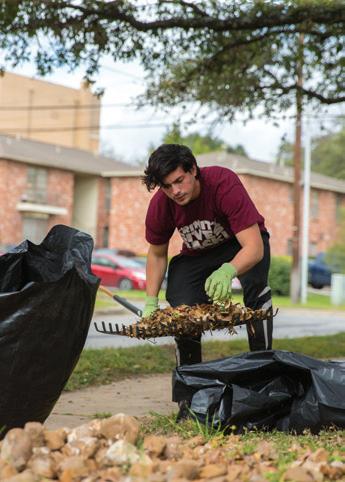


48
Student Orientation (top, bottom) to helping during the “Trinity Gives Back” day of service (left, right), the Trinity community is, according to Brown, “imbued with a culture of service.”
previous page Scott Brown speaks with Jeremy Gerlach at the blood drive that TUVAC held to support victims of the 2017 hurricanes.
opportunities, and promoting those opportunities to students every week. I’ve also learned over the past few months, especially with the natural disasters. There was a lot of interest not just with TUVAC students, but with students across the campus who wanted to do something and help in any way they could. Whenever we were approached by students and staff, our students never said, “No, we can’t do that.” We certainly talked about our capacity to take on these additional responsibilities and to make sure that we not only provide opportunities in San Antonio, but also in Puerto Rico and the hurricane there, or along the Gulf Coast and Texas (with Hurricane Harvey). The TUVAC students that I’ve interacted with like to gather information, think strategically about what resources they have available, and make calculated decisions. The students inspire me because the response is typically, ‘How can we help assist you?’ when requests come in from outside of our organization seeking resources or marketing help.
What, if anything, has surprised you about TUVAC’s response to the challenges and disasters faced by our city, state, and nation over the past year?
SB: I don’t know if I’ve been surprised because I knew coming into this position at Trinity that students like to push and extend themselves. In my experience, the TUVAC students are not only committed to enhancing their personal leadership capacity, but they’re also committed to improving the organization’s outreach. And so I anticipated them stepping up to the challenge. I know that we will talk toward the end of the semester about what will happen if these events occur again in the future, and how we can be more effective in our response, and how we can provide more opportunities for students who want to get involved. How can we be a better resource for a student who comes to us with an idea with what to do in response to a hurricane or other natural disaster? That’s part of the spirit of TUVAC—the desire to improve individually and as a student organization. I don’t think anybody could have predicted devastating hurricanes, earthquakes, and mass shootings all in the fall semester. Therefore, TUVAC never considered what our role would be helping mobilize students to assist in those relief efforts given our focus on providing volunteer opportunities on a more local level in San Antonio. I think our students did the best they could with the time and resources they had, their rigorous course load, and other engagements on campus. But I do know our TUVAC leaders will reflect on this experience, knowing these events could happen again in the future. So, how can we be better positioned to meet the needs of members in our community?
Were there any touching moments where you were able to really see that sort of ‘can-do’ attitude on display?
SB: Right after Hurricane Harvey—that was the first hurricane to come through—we had a student in Rockport, Texas, whose family was affected by the storm. She held a student worker position on campus in Alumni Relations and Development. I know the staff in
that office helped the student, and TUVAC was able to work with leaders of SGA (the Student Government Association) and mobilize students for a food and clothing drive, donation drive, and providing direct service at the San Antonio Food Bank. The student was able to take some of the supplies in her vehicle and hand-deliver them to some of the first responders and to her family who needed them. Her story about how she was affected by the storm, how she wanted to make a difference in her hometown, and how the Trinity community stepped up, is one that certainly sticks out to me.
What does the future have in store for TUVAC?
SB: We’ll probably look at this semester as a case study, if you will, and raise the questions: What is TUVAC’s role in relief efforts, like the ones we’ve witnessed this past semester? How are other groups on campus contributing to relief efforts? We know those efforts are taking place, too, so what is TUVAC’s role in addressing that, and what is TUVAC’s role in working collaboratively with other organizations on campus to leverage or enhance our impact in what we’re doing? I do think TUVAC and other organizations will need to think about their collective efforts surrounding disaster relief efforts and whether the solution is building a coalition or at least having a plan in place for the next time something like this happens. There is a multi-pronged approach to service on campus, which can at times make it complicated to track and demonstrate the collective impact, but TUVAC leaders are putting mechanisms in place like (volunteer management platform) GivePulse to make it easier to gather that information and to illustrate what it is that we’re doing and contributing to the surrounding community. I do know that TUVAC will continue to provide as many opportunities as possible in the San Antonio community, whether that’s through environmental causes, youth and education outreach, or health and wellness opportunities.
Do you feel the Trinity community has an innate sense of duty in responding to these crises?
SB: I do. The Trinity community extends beyond campus boundaries and even outside of San Antonio. We have alumni all over, many who were affected by the hurricane devastation. Many students have family and friends in areas greatly affected by some of these crises. So I think students felt an innate sense of duty to respond to these crises in particular. Aside from natural disasters and other events, Trinity fosters a spirit of civic engagement by offering a variety of ways for students to get involved through community service. TUVAC, of course, is a great way for students to volunteer in San Antonio, and there are other programs, such as Tiger Breaks (alternative break program), Greek Life, service-learning courses, and course-embedded projects to name a few. The variety in these programs accommodates students interested in one-time events, recurring events, or those looking to apply what they’re learning in the classroom to real-world settings. All of this contributes to a culture of service at the University.
TRINITY 49 magazine.trinity.edu
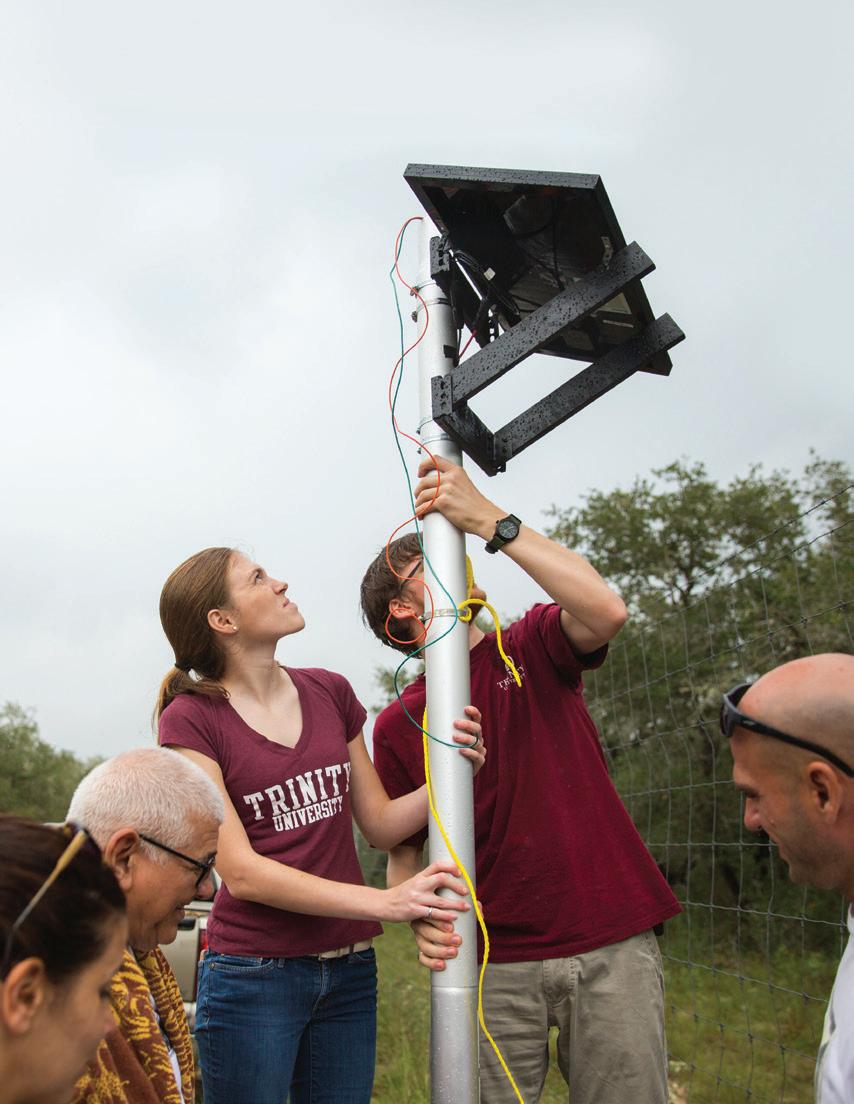
 words by Jeremy Gerlach photos by Anh-Viet Dinh ’15
words by Jeremy Gerlach photos by Anh-Viet Dinh ’15
In spring 2016, education professor Angela Breidenstein ’91, ’92 made a simple request to a group of Trinity engineering science majors.
Brooks County, Texas, is home to a deadly stretch of borderland that has claimed the lives of more than 600 migrants over the past decade due to dehydration, heat, and harsh conditions. Breidenstein had learned of a small nonprofit in the area, the South Texas Human Rights Center (STHRC), that was trying to keep these people alive by creating water stations. Now, she wanted a team of Trinity engineers to find a way to make these stations better.
The response: 13 students took on the cause for their senior engineering science project, one of the largest groups in Trinity engineering history.
“People were attracted to the humanitarian focus,” Breidenstein says. “This is about compassion. We’re all going somewhere, we’re all coming from somewhere. And there are moments when you need help—maybe it’s a fundamental human need, like water.”
Water might be a fundamental need, but finding it in a place like Brooks County is anything but a given. The area seems benign at first—straddled by massive, sprawling ranches where low-hanging trees sway over a thick, greenbrown underbrush, and fluttering orange butterflies float through the air.
To a migrant, perhaps one fleeing civil strife, violence, or destitution, reaching America means walking hundreds of miles through areas like this. But as thirst sets in, this seemingly rustic paradise turns into hell on earth. The Texas sun beats down relentlessly, the peaceful wind kicks up choking dust, and the thick, labyrinth-like South Texas brush creates more of an obstacle than most
TRINITY 51 magazine.trinity.edu
One simple question from a Trinity professor has transformed into a life-saving, humanitarian engineering project along a deadly stretch of South Texas borderlands
Watch a video of the engineering team installing water barrels with STHRC at gotu.us/NotADrop
man-made barriers could ever do. That same brush also harbors venomous snakes while hundreds of vultures circle ominously overhead.
Against these odds, the Trinity team started making their stand in fall 2016. Partnering with STHRC director Eddie Canales—hailed by Breidenstein as a “one-man show” who had designed, built, and installed about a hundred water stations across 1,200 miles of ranchland before partnering with Trinity—the group began looking for ways to improve on Canales’ original design.
Canales’ early water stations consisted of 55-gallon barrels, each containing several jugs of water inside, all strapped to makeshift flagpoles to attract the attention of passersby. Signage on the station encouraged people in need to take bottled water right out of the barrel to survive long enough to make it to a nearby town.
“Our initial effort was meant to keep people from dying,” Canales says. “But we had a very rudimentary set of water stations. No electronics, no solar power, no wireless (capability).”
This meant, Breidenstein says, there was no way for Canales to know when the stations had run out of water— or worse.
“Some of the stations had been vandalized,” Breidenstein says. “Others had disappeared.”
So, engineering team members James Regan ’17, Kathryn Schoer ’17, and the rest of the Tigers got to work. By spring 2017, they had designed a prototype station with a sturdy, high-density polyethylene base to hold the large water barrel. On a waterproofed side compartment, a compact set of wires connects a battery to more wires running up through a hollow, 20-foot pole connected to the base; on the pole, a 30-watt solar panel, LED lighting, and a flag.
The day of the trip was overcast, as swirling winds and rain clouds grumbled overhead. The group stocked up two truck beds of full gallon jugs of water to refill some existing water stations, packed into the trucks led by Canales, and set out to find a suitable location on the ranch for the new prototype.
Canales has worked tirelessly to negotiate with local ranch owners for access to their properties, often pitching them the idea that it’s better to live with migrants passing through the land and leaving alive than continually finding dead bodies in every backyard. As the group pulled through the gate at Copa North, this collaboration was on full display. Ranch hands waved Canales, Schoer, and Regan along a dusty path—Copa North is vast enough to warrant its own street signs—without hesitation. Some smiled at the group, others turned away wearily. The Trinity team also passed a group of green-uniformed border patrol officers on a training exercise, the officers even pausing to offer Canales help with directions.
As the group passed existing water stations, the importance of the Trinity team’s upgrades became clear. While some installations had been stolen or vandalized, others had been battered by the elements. At one station, a flagpole tilted to the south, its tattered white flag listless, almost as if hung in surrender. “You can see, these things have to be tough,” Canales says.
For Regan, these are the type of high stakes he came to Trinity to encounter.
“With Trinity students, whether they’re studying a STEM subject or one of the humanities, there’s something they know a lot about,” Regan says. “On projects like this … you can say, ‘I’m helping, and I’m helping with
“Even if this only saves one life,
In short, this system is meant to hold water, attract attention both night and day, and let aid workers know when the station needs to be refilled, has been tipped over, or is damaged—all for about $2,000 worth of materials.
“It’s not a perfect design,” says Regan, who also created an online tool that can help aid providers interface with the station remotely. “But it’s going to help people who are in an unfortunate situation.”
By October 2017, the prototype was ready for real-world use. Regan, Schoer, and Canales, along with representatives from other humanitarian organizations, headed down to the Copa North Ranch in Falfurrias, Texas, for the Trinity project’s first installation in the field.
the things I learned at Trinity.’ This was one of the first issues I’ve ever seen where I realized, I could actually help with this; I know enough to do that.”
Farther down the path, the group traveled on a road running alongside a thin-wire, 12-foot-high deer fence. The group marveled at the sheer number of twisted wires where migrants had presumably scaled the obstacle; for more than a half-mile of fence, there wasn’t a single segment where the wire hadn’t been bent.
At last, the group spotted a suitable location for the prototype—a small clearing along the barrier near a large gap in the nearby brush. Determining the area to be heavily traveled, the group started assembling the station.
TRINITY 52 Spring 2018
Until this point, the project had been hypothetical. Schoer and Regan had prepared the prototype as well as possible, meticulously designing, ordering material, and prepping for the installation. But as any engineer will tell you, moving plans from paper to the field can open up a world of problems.
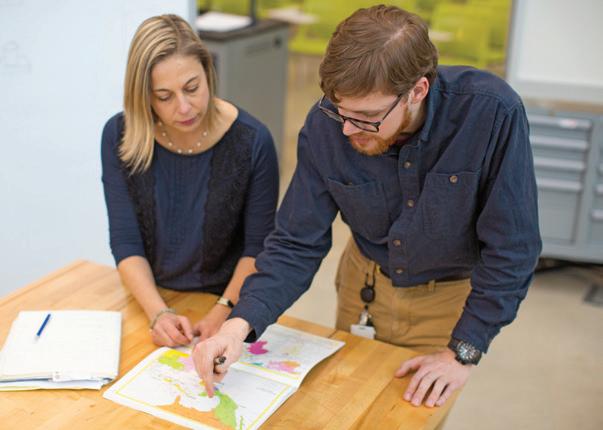
“I really could have used more wire,” Schoer says, weaving electronics into place. As Regan fiddled with a battery, he used a knife and tape to gently connect other exposed metal filaments.
To complicate matters, the group soon heard a rumbling on the horizon. The same rain clouds that brought a relieving shade earlier now posed a threat to the exposed
handiwork. “Having difficulties with the prototype is good luck,” he says. “I’d be more worried if we didn’t have anything go wrong at first—that would be bad luck.”
Schoer and Regan credit their poise under pressure to Trinity’s experiential take on learning. “Trinity’s engineering science program is very unique compared to programs at other universities,” Schoer says. “We have a design sequence where every semester we are in groups doing design work, lab reports, and presentations. We have to be able to take our ideas and express them on a technical level.”
But expressing these ideas on a simplified level is important, too, since Schoer and Regan can’t install every
you can’t put a price on that.”
electronics. Schoer and Regan raced against the oncoming precipitation—in an almost Hollywood-level, cut-theblue-wire scenario—before finally connecting, arranging, and sealing the device. Future models, Schoer hopes, will have a pre-packaged, modular set of electronics that will make for an easier installation in the field.
“That’s the great thing about engineering—there’s no final solution to a problem,” Schoer says. “My hope is that if future generations can start improving this project, they can make it more compact or more energy efficient. They can take what we have learned and improve upon it.”

Despite their difficulties with the rain and the wiring, Regan offered a good-natured assessment of the group’s
water station in the future. They’ll need to pass that responsibility on to volunteers, perhaps ones with less technical knowledge.
“Even if you have the ideas in your head, you still have to be able to clearly explain those,” said Schoer, effortlessly describing how each bit of electronics worked while racing against the clock. “Trinity prepares you for that during all four years.”
As the group threaded the wiring through the flagpole and pushed the entire apparatus into the air, the station cut a striking sight. As the team raised the flag, the banner unfurled slowly, nicked by a steady stream of rain droplets but pushed ever outward by a growing breeze.
TRINITY 53 magazine.trinity.edu
Breidenstein and Regan collaborate on ideas for the South Texas water project.

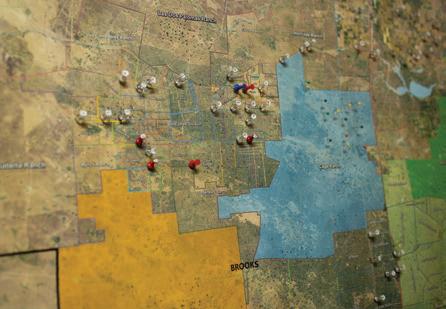
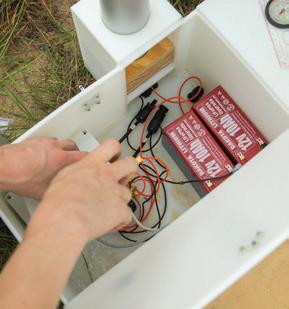
TRINITY 54 Spring 2018
And as the wind picked up and the flag billowed, Canales, Regan, and Schoer let out a collective cheer.
“Many STEM disciplines, you think, ‘Okay, I have to go through five years of research, then a prototype testing, then another five years of revisions, and the society can’t even use your work until 15 years down the road,” Schoer says. “But this project was really the complete opposite. With humanitarian work, you can take your work, be ingenious with it, and create a project that can be used right away.”
Driving away, Schoer, Regan, and Canales looked back at the water station prototype, wondering aloud how long it would take for a passerby to stumble upon the barrel—how long it would take to save a life. “Even if this only saves one life,” Canales says, “you can’t put a price on that.”
While Schoer and Regan have moved on from the barrel initiative, Trinity’s Department of Engineering Science puts out an annual call for senior engineering project suggestions to the entire University community. Additionally, a new generation of Trinity engineering science students will take on the barrel project at the end of the 2018 academic year. Beyond making additional upgrades to the water stations, Breidenstein wants future students to take a larger lesson away from the partnership with the STHRC.
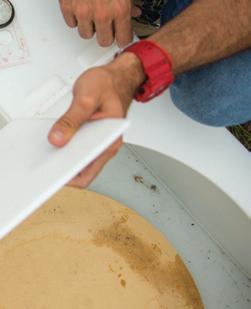
“One of my hopes for this project is that Trinity students meet someone like Eddie Canales and think, ‘I can do something in the world,’” Breidenstein says. “It’s one thing to say, ‘If you want to see change in the world, go do it.’ But you need to see people who are actually doing that, so on a practical level I think seeing agency and passion come together to tackle a humanitarian problem is inspiring.”
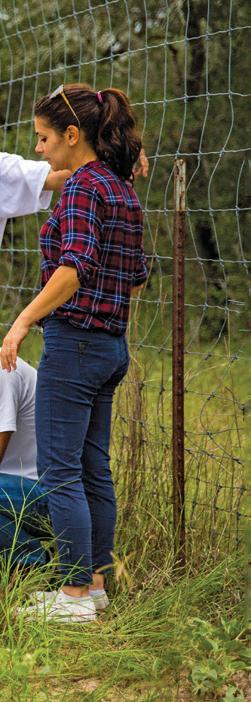
Upgrades to the barrel project could become even more far-reaching than the crisis at the U.S. border, Breidenstein says, as the International Red Cross has expressed interest in creating pilot programs using the Trinity design. The organization has approved plans for 10 of these smart water systems to be deployed along the U.S.-Mexico border in 2018. This evolving prototype, Breidenstein says, could have applications in natural parks, during weather disasters, or anywhere else lost people need water. The barrels may one day even be repurposed to hold medicine, food, or other supplies.
“That’s why I think this project appeals to people—because the sum of the South Texas Human Rights Center and Eddie Canales and our engineering department, our engineering students who put that together, is greater than those parts,” Breidenstein says. “This just shows that working together for real causes can bring people together in really enriching ways.”
top and page 50 Regan, Schoer, and Canales, along with other team members from the STHRC, install a water barrel system on the Copa North ranch in Falfurrias, Texas. left The STHRC pins locations of existing and future water barrel systems. right The team works to install batteries and other electronic equipment before a storm rolls in.
TRINITY 55 magazine.trinity.edu
Louise Locker ’71 Hope is Her Middle Name
by Susie P. Gonzalez
She didn’t have a plan. Or a business model. Or any idea how big her dream would get. But one December day in 1969, Louise Locker ’71 knew what she had to do. The Trinity junior went to a San Antonio post office and asked for children’s letters to Santa with their Christmas wish lists. She wanted to spread the magic of gift-giving, and nothing was going to get in her way.
She had no money and not much help. Most of the toys she gave away that first Christmas came from her home or from contributions she persuaded diners at Earl Abel’s, then located down the street from Trinity, to donate. A classmate offered his truck for the delivery. A salesman at a Christmas tree lot turned over what he described as

TRINITY 56 Spring 2018
his “most beautiful tree” for a child who innocently asked for one in a Santa letter because the family was too poor to buy it. One person at a time, starting with her mother, Locker has won over friends and strangers to her vision of making Christmas joy live in the hearts of children by showing up unexpectedly at their doors to surprise them with a toy.
These children believed, and they made Locker believe. She has faced various health challenges, including cancer and other personal setbacks, but her spirits remain undaunted and she remains involved. Most important, she truly believes one person can make a difference.
“When we have hope, our dreams can come true,” Locker says.
Nearly 50 years later, Locker estimates the Elf Louise Christmas Project has given toys to more than one million children who otherwise might not have gotten anything on Christmas morning.
‘God, please send me a football.’” There is another from a 12-year-old who asked for the spirit of Christmas after his father lost his job and the home was dreary. Still another wrote that if Santa had anything left over, to please bring it to her family.
Locker says the Elf Louise Christmas Project “changes your perception of the world, but it also changes [the recipients’] perception of the world. It changes their perception of the potential for goodness.”
The project has evolved in its sophistication and business-like execution but still relies heavily upon volunteers who wrap donated presents, organize delivery routes, and dress in Santa Claus suits to deliver gifts. It also relies 100 percent upon financial donations.
In the beginning, Locker drew inspiration from The Tonight Show when host Johnny Carson read letters from children to Santa sent to the North Pole and “intercepted” by the postal service. Those letters triggered a desire to share her beloved dolls from her childhood with a child who believed Santa would be the only way she could get one. The next day, she went to the San Antonio post office, only to be told she could not have any Santa letters or risk charges of tampering with the mail. “Is there any way around the rules?” Locker recalls asking. She persisted, causing the postmaster to relent and let her read the letters and take notes while he held them.
She recalls one from a child whose family never had a tree, let alone presents. Another child asked for a dollar. A girl named Anna said she was certain that the only reason Santa had not ever visited her was because she’d never written. She closed with, “Please don’t get lost.” Locker showed these letters to the postmaster, who was so deeply moved, he whispered, “You can put those letters in your purse, but don’t tell anybody.”
She has other heart-warming stories. There is one about a boy who received a football and whose mother told the volunteering Santa, “We say prayers every night, and when we finish, my son says,
At Trinity, Locker started as a mathematics major and gravitated to sociology. She was involved with what is now TUVAC (Trinity University Volunteer Action Community) when there were only about a dozen members. When someone asked her to take on a leadership role and recruit members from the incoming first-year class, she froze, feeling intimidated to speak to such a large group. In the end, she sat on the edge of a stage and spoke earnestly about how students could help in the community. Five hundred students signed up to volunteer. “That was a powerful, affirming experience for me,” Locker says. “It speaks to the impact you can have when you work from your heart.”
She went on to a career as a psychotherapist, nonprofit collaborator, and life coach, and in the spirit of new beginnings, Locker is in the “infancy” stage of a collaboration with musician Bett Butler ’81 to create music meditations. They are writing poetry and words of encouragement to be set to music for anyone affected by a disaster and their caregivers, distributed at no charge through a download or via podcast. “The idea is to take a few minutes to listen, to relax and breathe deeply and be affirmed, nourished, and encouraged by the words you hear,” Locker says. “Our meditation about catastrophes is about hope.”
“Hope” seems to be Locker’s middle name. With the passage of time, she has met many people who received presents as children and returned to the project as volunteers. “They say it’s so life-altering,” she says. “The experience for people is personal when you are delivering presents. It’s your labor of love that allows you to connect with other people without embarrassment, to give and bring joy.”
One year she was featured in Good Housekeeping magazine and received thousands of letters from readers. “The overriding response is people said, ‘Wow, I’ve always wanted to do something. Now I will do something.’ I have a hopeful message: There’s so much every single one of us is capable of doing in our own unique way. Just believe.”
TRINITY 57 magazine.trinity.edu
ALUMNI PROFILE
“When we have hope, our dreams can come true.”
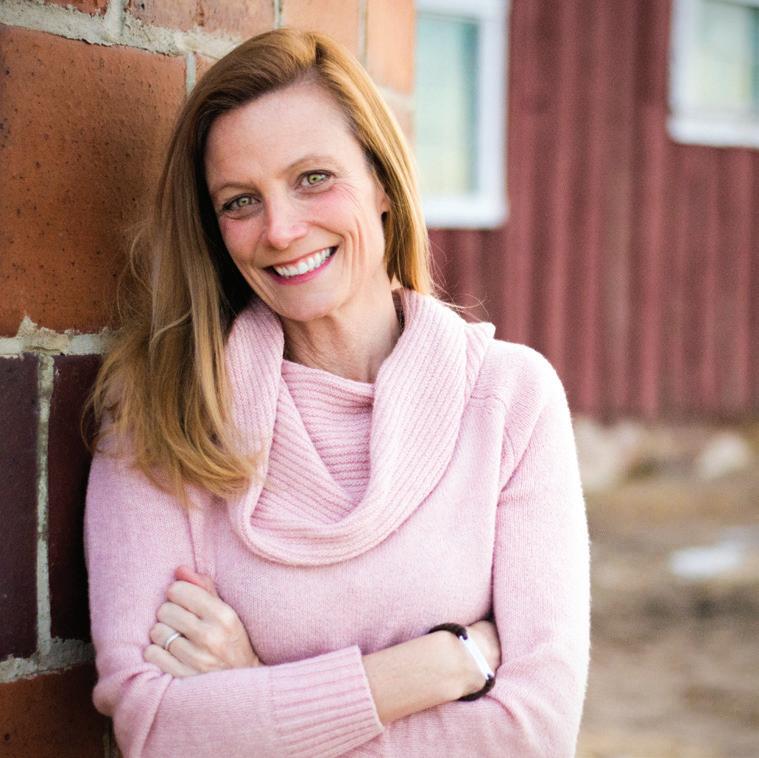
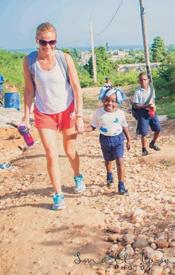
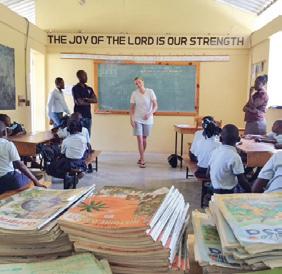
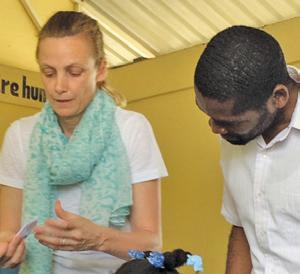
Wendy Duncan White ’95 Steward of Service
by Ashley Festa
Every six to eight weeks, Wendy Duncan White ’95 leaves her comfortable bed in Denver to go sleep for a week on an air mattress. Without air conditioning. Under a mosquito net.
It’s a pretty typical sleeping arrangement in Haiti, where the “poverty is alarming and devastating,” says White, who earned a bachelor’s in sociology at Trinity. During her trips, she travels to the rural city of Gressier, about 20 miles outside the nation’s capital, Port-auPrince. There, atop Bellevue Mountain, is Respire Haiti, a nonprofit that feeds and educates more than 500 orphans, child slaves, and other vulnerable Haitian children. The organization also provides them with medical care, dental care, and physical therapy.
But she’s not just a visitor at Respire Haiti. White works as an unpaid staff member, preparing volunteers to serve at the haven of hope. She says her service is a direct calling from God.
“I think of any work we do here as our ‘thank you’ to God,” says White, who was her church’s children’s minister when her pastor had asked for volunteers to help out at Respire Haiti. “I believe through Jesus we’ve already received the best gift we could ever receive. Because of that, we are all called to give back. Respire Haiti’s needs are aligned with the blessings that God has given me in my life.”
through Ukraine, India, Egypt, Morocco, and other poor countries as a twenty-something. She also visited countries like Cambodia, Vietnam, and Sri Lanka during her Semester at Sea study abroad program at Trinity.
Now, she considers Haiti the perfect place to serve because it’s so close to the U.S.—just a few hours on a plane rather than half a day or more—and she has a husband and children of her own to care for in Colorado. Most of the time she brings at least one of her four sons with her to Haiti. White says it’s a blessing for her kids to experience another culture and develop true friendships with Haitian children.
While it’s an expensive and frequent trip, she says it’s not a hardship for her.
“I’m not a shopper,” she says. “I don’t spend money on anything except the basics. My service is what my family saves up to do. Is it a financial burden? No, we truly feel blessed for me to be able to go down and serve.”
Part of her work is to help groups organize fundraising events for their trip, and White says she’s ready to assist any Trinity alumni who want to get involved at the organization. The micro-lending program at Respire Haiti can help local entrepreneurs establish small
Graduating from Teach for America and traveling through developing countries in her twenties prepared White to visit Haiti. What she saw there keeps bringing her back.
“Children become orphans, but not necessarily because they lost both of their parents,” White says. “They’re poverty orphans. The mom and dad have to give up their children because they can’t feed them.”
These children become “restaveks” (in French: rester is “to stay” and avec is “with”) and live with other families as domestic servants. They are rarely educated and often neglected or abused. At the Respire Haiti Christian School, restaveks get books, uniforms, breakfast, and lunch. The school lets out in the early afternoon so the kids can get back to work. They often go hungry over the weekend.
It’s a similar situation to what White saw while backpacking
businesses to support their families. Anyone who can teach a trade in a week is welcome to pass down their skills to help Haitians begin a business that will benefit the family for a lifetime.
White says the unofficial training she’s received through the events in her life—teaching, backpacking through developing countries, ministry—is what led her to Respire Haiti.
“God puts all these experiences in your life, and then it all culminates in this amazing skill set that you can apply and serve,” she says. “For me, it’s about giving back to God for everything he’s done for us. I’m filled with gratitude every day.”
If you’d like to visit with White or are interested in volunteering with Respire Haiti, email her at wendy.white.haiti@gmail.com.
TRINITY 59 magazine.trinity.edu
ALUMNI PROFILE
“I think of any work we do here as our ‘thank you’ to God... Respire Haiti’s needs are aligned with the blessings that God has given me in my life.”
Andre Storey ’12
Healing Hands
by Jeremy Gerlach
Andre Storey ’12 practically beams through the phone when asked about his time in Lake Charles, La.
Storey spent nearly four years as regional vice president of Ancillary Services for Christus St. Patrick Health System, which operates a series of medical centers and hospitals in the Lake Charles area. As he rattles off fact after fact about the “blue-collar town” of 300,000— in the midst of an economic boom with international interests, an ability to export natural gas, and nearly 50 percent job growth expected over the next decade—one might forget that this same area was battered by Hurricane Harvey in August 2017.
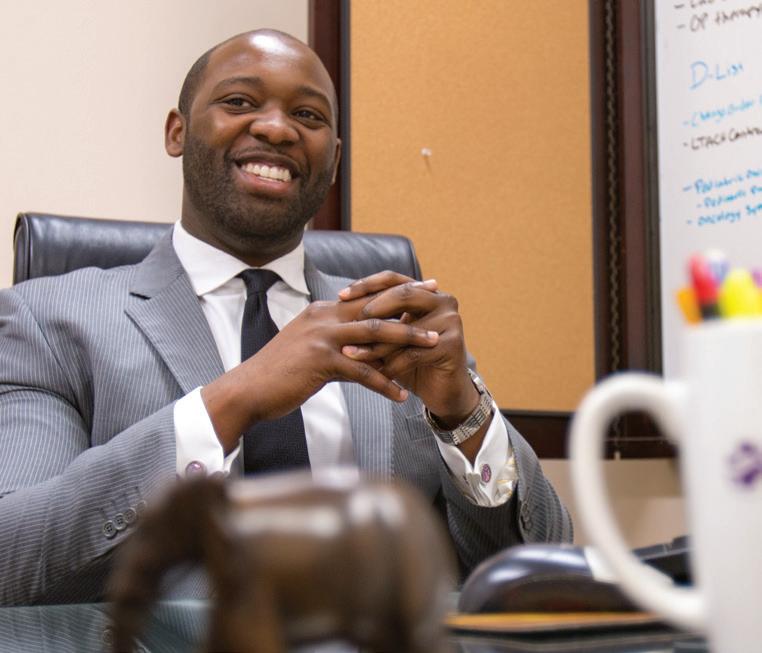
TRINITY 60 Spring 2018
Hurricane Harvey was more known for the havoc it wreaked on Texas’ coastline, but the storm hit Lake Charles and the Louisiana coast hard, too. Harvey dropped 18 inches of rain on Lake Charles, felled hundreds of trees, and left thousands without power as the storm came ashore in Louisiana and headed northeast toward Mississippi.
Storey’s hospital system served as a bulwark against this disaster not only for the Lake Charles population, which Storey says is “aging, like the rest of the country” and “requires a diverse and complex approach” to healthcare, but also for patients from other parts of Louisiana and Texas.
“The national guard was flying people in from other parts of Louisiana, from Texas, dropping them off at our hospital,” Storey says. “And our employees weren’t going home—we had doctors, nurses, workers, all these people staying here at the hospital, bringing clothes and sleeping bags, working extra shifts and staying to help.”
Instead of focusing on the fatigue, the long hours, and the crowded space inside the hospital, Storey says he saw a team of medical professionals at their best when the hospital’s patients were at their worst.
“We all just rallied together…because that’s what you have to do,” Storey says. “For patients coming in at a time like that, they’re at their lowest point. So for us in the healthcare profession, that’s when you have to be at your best.”
Storey notes that in times of crisis, visitors to hospitals might tend to place all their attention on physicians, but medical care relies on a deep, varied roster of professionals, many who work behind the scenes.
“That’s what ‘ancillary’ means,” says Storey, who heads ancillary services for his hospital system. “It’s specialized medical care that complements primary care.”
Ancillary services include therapy such as physical rehab, diagnostic imaging such as X-rays and MRIs, and custodial care.
“Everything we do at our hospital takes an entire team,” Storey says, “whether it’s the people serving food in the cafeteria or the physicians and nurses.”
Every employee at Christus St. Patrick had a hand in keeping patients safe and healthy during the storm. “They’re just like the first responders who brought our patients in,” Storey says. “We’re all part of the same process.”
Being part of that process has been a lifelong journey for Storey, who grew up in La Quinta, Calif., and then bounced around the
Southwest before graduating from Oklahoma State University in 2009. As a first-generation college student, Storey says he wanted a career where could make an immediate impact on his community, and settled on the medical field as he prepared for the post-graduate phase of his career.
Storey ultimately chose Trinity’s Health Care Administration program after he kept seeing that several VPs and directors at hospital systems he wanted to work for all had degrees from “this same small school in Texas called Trinity,” Storey says.
“I’d never heard of Trinity before I started this sort of networking,” Storey says. “After I visited, I was in love with it.”
Graduating with a Master of Science in Health Care Administration, Storey also developed the same relationships with Trinity faculty and fellow students that he would later form with the entire chain of employees at Christus St. Patrick.
“At Trinity, the focus is on teaching. The relationships I developed with my classmates… well, we still text every week,” Storey says. “Trinity is a gem.”
The HCAD program’s required residency gave Storey a chance to start making an impact in the real world right away.
“The HCAD program there, with what they’re looking for in applicants, it’s inherent that you want to help others,” Storey says. “With that required residency, you know what’s expected of you at all times.”
With Christus St. Patrick in the midst of disaster recovery and preparation for future emergencies, Storey kept his team focused on the big picture: meeting the complex needs of Lake Charles’ booming population. “Healthcare is changing constantly,” Storey says. “And with providing healthcare, so much focus is now on preventative care, not just when someone is sick.”
While Storey has moved to a new position at Baylor Scott & White Health in Dallas-Fort Worth, he leaves behind a number of medical initiatives for his team in Lake Charles, from research partnerships with schools such as Louisiana State University to a program that brings medical screenings straight to schools, which makes it easier for busy parents and children to access care.
“You get into a healthcare career because you can see the direct impact of your work,” Storey says. “If there’s a need, you can develop a program for it right away.”
TRINITY 61 magazine.trinity.edu
ALUMNI PROFILE
“Everything we do at our hospital takes an entire team, whether it’s the people serving food in the cafeteria or the physicians and nurses.”

Steven Leach ’07 In Peaceful Unity
by Ashley Festa
Long before he began humanitarian work in Africa in 2008, Steven Leach ’07 has been a living example of the philosophical concept of ubuntu
“It’s not necessarily religious,” says Leach, who earned a bachelor’s in ancient Mediterranean studies from Trinity. “Ubuntu is a word you hear often in South Africa meaning ‘I am because we are.’ It’s the idea of unity, that we’re all in this crazy world together. We all try to do our part in whatever corner we happen to be in at the time.”
Leach’s service work dates back to his days growing up in Houston. Besides volunteering with shelters after Hurricane Katrina while a Trinity student, he also traveled to Guatemala before he became a Tiger and to Nicaragua during spring break. Since then, his service outreach has extended all the way to South Africa.
The corner in which he’s currently working is Tanzania, focusing on peacebuilding in the midst of concerns about violent extremism. As part of his research for his Ph.D. from London Metropolitan University, he’s studying a population in Zanzibar perceived to be at high risk of radicalization.
“When you look at the youth in Somalia, most do so out of economic necessity,” he says of young men who join the militant group Al Shabab. “They aren’t ideological extremists, but they joined because they are promised a wage.”
conflict transformation practitioner and researcher and built a professional network all across the continent, which also led him to connections in Europe. Leach wrote several reports, including a mediation resource for a Swiss university about community-based approaches to preventing violence.
Alongside his Ph.D. research, Leach works as a consultant for Peace Direct, a London-based international advocacy organization focused on fighting human rights abuses and other problems at the local level as a starting place to avoid war.
“One of the reasons high-level negotiations fall short or have limited impact is because not enough attention is paid to what’s happening between human beings in their communities,” Leach says. “A national accord doesn’t necessarily address local grievances.”
Leach has been working remotely for Peace Direct and also traveling back to Tanzania from his current home in Denver over the past 18 months. But he rarely stays planted in one place for long. He considered going back to Tanzania in early 2018, but he will likely remain in Denver to continue other projects, including being a security fellow with the Truman National Security Project.
The organization is a membership of leaders who advocate for national security solutions by focusing on military defense, diplomacy, economic development, and democracy. He’s particularly excited
Through his research, Leach hopes to one day help support policies that build entrepreneurship and training opportunities to combat poverty, rather than treating these young people as enemy terrorists.
Before beginning work on his Ph.D., Leach’s internship for Princeton Theological Seminary sent him on his first long-term international service trip—to a South African congregation focused on social justice issues. After he graduated with a Master of Divinity, he headed back to South Africa for a two-year pastoral position at a Presbyterian church in Cape Town. While there, he was a part-time hospital chaplain and prison chaplain, working with juveniles and young adults awaiting trial to help them disengage from prison gangs.
After completing that position, Leach wanted to see more of Africa, so he set out from Cape Town headed for Cairo on a 10-month backpacking journey. Afterward, he returned to Cape Town as a
about being accepted to the 2018 class as a security fellow because of how it relates to his research.
“The Truman Project is a knowledgeable, progressive voice in the national security conversation,” Leach says. “My experience in Tanzania shows a military response would be ill-matched to the context. We need to support a development response to secure the future of these young men.”
Leach says Trinity challenged him to view the whole world in this way—to see the “integrated-ness” of life, no matter where he is.
“My values prioritize people and relationships over stuff and things and achievements, which ties back into ubuntu, our responsibility to the collective,” Leach says. “I came out of Trinity feeling like a whole human being, and I’m interested in growing as a whole human being.”
TRINITY 63 magazine.trinity.edu
ALUMNI PROFILE
“Ubuntu is the idea of unity, that we’re all in this crazy world together.”
Alumni Corner
Greetings, alumni! I am your newly elected president of our great Trinity University Alumni Association. I am thrilled and honored to represent Tiger alumni all over the world. Some of you may remember me from the years I worked in the San Antonio Alumni Chapter and on our board. For the past 12 years, I have volunteered my time and resources to give back to our beloved University, and I am excited to continue supporting Trinity in the future.
I graduated in 1998 with a degree in business administration and a second major in Spanish. Since graduation, I have continued to reside and work in San Antonio. My office is on Highway 281 directly across from Trinity, so I am privileged to make it back to campus regularly.
As you have probably already read in the magazine or online, Trinity has quite a number of exciting initiatives in the works. From the Campus Master Plan establishing our beautiful campus as a national historic district (read more on page 15) to the upcoming 150th anniversary celebration, we have much to look forward to.
We also have much to reflect on. For many of us, 2017 presented us with the unprecedented challenges of Harvey, Irma, and Maria and with the opportunity to serve those affected by the storms. Trinity Tigers overwhelmingly responded to these crises by reaching out to one another and offering assistance in many different forms. Our response reinforced the pride I feel as a Trinity Tiger: We were there for one another and always will be.
I wish you all the best in 2018, and I hope to have the opportunity to meet you either in Washington, D.C., in April for Trinity on Tour or back on campus for Alumni Weekend in October. Please feel free to reach out to me with your ideas and suggestions for our Alumni Association. I can be reached at tuaa.president.jamessanders@gmail.com.
Regards,
1941
Kathleen Estes was a music teacher for more than 40 years and would love to hear from anyone who attended Trinity from 1938-41.
1959
Carl Boyer continues to travel around the globe. Boyer traveled to India, the United Arab Emirates, Iran, and Saudi Arabia.
David Fischer was honored on his 50th anniversary of being Colorado State University’s first doctorate in economics and inducted into its Hall of Fame. He presented a Legacy Lecture to the College of Liberal Arts at Ft. Collins. When active, he published nine books and more than 90 scientific articles.
1960
Carole Buchanan earned her master’s and doctoral degrees in African history from Indiana University in Bloomington after teaching for three and a half years in Africa. Buchanan retired in 2004 from Richardson ISD and taught at the University of Texas at Austin from 2004-05. She serves on the Texas Retired Teachers Association on the State Legislative Committee as district president. Buchanan and H. Ray Buchanan ’60 celebrated their 57th anniversary in 2017.
Sharon Hannum Seager served as Trinity’s delegate at the inauguration of Alan C. Price, the 18th president of Earlham College, in Richmond, Ind., on Sept. 23, 2017.
1961
Patricia Graham retired from the University of Texas at San Antonio after serving its community for 43 years.
1963
Robert Lyon taught high school science for 27 years and then cruised around the Western Hemisphere for six years in a 42-foot sailboat. Lyons and his wife, Judy, have been married for 54 years and have three children and six grandchildren.
1964
Robert P. McFarlin, a retired Army brigadier general, spoke about his experience during the Cold War to history classes at Camas High School in Camas, Wash. McFarlan moved to Camas to be close to his grandchildren after serving in the Army for more than 30 years.
1965
Michael Neidorff received the Distinguished Alumni Award at Washington University, which recognizes outstanding professional achievement, public service, and exceptional service to the university.
1967
Bennye Longoria Champion is happily retired after teaching for more than 40 years. She married Fred Champion in 2010, and her daughter, Linda Greenup Jacobs, is a 1994 Trinity graduate. Champion has three grandchildren and takes piano lessons.
James S. Sanders ’98

Paul Moxley was named Man of the Year by the McAllen Chamber of Commerce in McAllen, Texas.
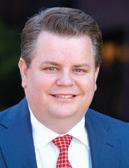
CLASS NOTES TRINITY 64 Spring 2018
1968
Bonnie Fontenot Nielson ’68, ’72 served as Trinity’s delegate at the inauguration of William C. Dudley, the 27th president of Washington and Lee University, on Sept. 16, 2017, in Lexington, Va.
Fillmore Spangler ’68, ’71 serves as the supervisor of the mathematics lab at the University of the Incarnate Word.
1969
Bill Torrey was re-elected as the Milam County district attorney in Cameron, Texas.
1970
Peter Leighton was one of 18 fine art photographers exhibiting in “Re/Thinking Photography: Conceptual Photography from Texas” in the fall of 2017. Thirty of Leighton’s prints from the series “Man Lives Through Plutonium Blast” were shown at the exhibit in Houston.
H.B. Paksoy published his eighteenth and nineteenth books, Mayor of PØmpington and Mayor of PØmpington: Fights Back
Barbara Witte-Howell is the chair of the City/County Joint Commission on Elderly Affairs in San Antonio.
Nancy Wiggins was re-appointed to the Charlotte Mecklenburg Planning Commission as commissioner for a three-year term that began on July 1, 2017.
1971
Alex Briseño was awarded the International City/County Management Association Distinguished Service Award in October 2017 at the organization’s national conference held in San Antonio. Briseño is a professor of public service in residence at St. Mary’s University.
1972
Bishop Michael Boulette is the founder and director of St. Peter Upon the Water, a center for spiritual direction and formation in Ingram, Texas, near Kerrville. After decades of pastoral experience in Kerrville at Notre Dame Church, Monsignor Boulette was appointed on March 20, 2017, by Pope Francis as auxiliary bishop of San Antonio.
Eleanor Dance Crow is an independent producer and organic ecological farmer west of San Antonio, growing hay for her mules and mustangs. Crow freelances out of her house as she works on the farm, writing screenplays she hopes to produce some day while also making documentaries and web newscasts.
Peter Hofmann completed his 40th year as a general dentist and continues to enjoy his work. Hofmann published his first book in August 2017, Cosmic Crossroad Countdown: The Fig Tree & The Prophetic Generation
Thomas Masinter received the Teacher of Distinction Award from the San Antonio Music Teachers Association. Masinter also received the Texas Patriot Award from the Daughters of the Republic of Texas, Alamo Mission Chapter. Three scenes from Masinter’s musical, Gone to Texas, were performed in May 2017 in honor of Texas History Month at the Steves Homestead Museum in San Antonio. Masinter is resident music director at the Roxie Theatre in San Antonio.
Sharon Middleton is an attorney in Alvin, Texas. Middleton also writes romances, with her most recent book published in
February 2018. The book, Beyond McCarron’s Corner, is about a Trinity girl who marries her history professor. Fourteen years later, when he dies unexpectedly, she falls through a hole in time and winds up in 1778, where she falls in love with one of Washington’s spies.
Joel Levy is a psychologist and neuropsychologist and is the head of psychology at Kinghaven Counseling Group in Houston. Levy is also an adjunct professor of psychology at Houston Community College West Loop Center.
John Stover retired in January 2017.
Constance Wright resides in Banff, just below the highlands in Scotland.
1973
Mary Tribble Melick is broker and owner of Mary Melick Real Estate on North Padre Island in Corpus Christi, Texas. Mary and her husband moved to the island in 2005 after having lived in New Braunfels, Texas; San Antonio; and Rancho Calvillo in Mexico.
Ashby Rice and his wife, Vivienne, are happily living the “life retired,” traveling, taking lifelong learning classes, enjoying their book clubs, learning the fiddle, and trying to stay in shape.
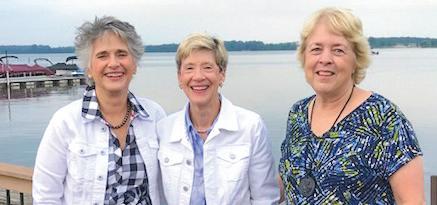
TRINITY 65 magazine.trinity.edu
Alumnae enjoyed a great get together this summer in Minnesota with 1968 classmates Carolyn Stazeski Morris, Chris Taylor Power, and Pat Griffith Hollis. They look forward to their 50th reunion in May.
Ethel Beall Mullener ’42
June 19, 2017
Mary Hofheinz Root ’42
Oct. 23, 2005
Douglas Carter ’45
Aug. 17, 2017
Robert Smith ’46
Sept. 29, 2014
June Bryan Bender ’47
Dec. 28, 2015
Esther Fairless ’47
June 18, 2017
Ted Brook ’48
April 9, 2017
Reagan Perkins ’48
July 24, 2011
Sherrill Hay Richarz ’48
Feb. 21, 2017
Geraldine Mencio Stevens ’48
Oct. 14, 2017
Frank Broughton ’49
May 12, 2017
Julius Frey ’49
Aug. 22, 2016
Shirley Hatch McGee ’49
Sept. 14, 2017
Thomas McGee ’49
Aug. 26, 2017
Travis McCown ’51
Oct. 17, 2017
Fred Miller ’51
June 13, 2017
Delia Reyna Sahadi ’51
July 5, 2017
Ernestine Arndt ’52
June 11, 2017
Warren Rutledge ’52
Aug. 3, 2017
Wilbert Crandall ’53
Aug. 16, 2017
Margaret Farr ’53
June 13, 2016
Martha Manning Jordan ’53
April 2, 2014
Lora Schuessler ’53
Feb. 23, 2008
Richard Allen ’54
Oct. 6, 2017
Charles Weinheimer Jr. ’54
Aug. 20, 2017
Walter Buzzini ’55
July 12, 2017
Arlene Cortez Leonhardt ’55
July 20, 2017
Patsy Lyster ’55
May 29, 2017
Ernest Murrah ’55
Sept. 11, 2017
Donald Bender ’56
Sept. 30, 2017
Yvette Levine Kalter ’56
Oct. 22, 2016
Thomas Neel ’56
Nov. 9, 2017
James Pearce ’56
Sept. 11, 2017
Judith Prose Servis ’56
Sept. 24, 2017
Charles Koenig ’57
Aug. 19, 2017
James McCloskey ’57
Aug. 30, 2017
Bobbie Braly Smetherman ’57
Aug. 11, 2017
Mary Peche Ferrara ’58
Aug. 6, 2017
Wayne Ulrich ’58
May 26, 2017
Melvin Davison ’59
July 18, 2017
Ann Willmann Davlin ’59
March 11, 2017
Roberta Wells Longnecker ’59
June 10, 2017
Clayton Robinson ’59
Jan. 21, 2017
Jack Johnson ’60
June 1, 2017
Roberta Ackerman ’61
Aug. 25, 2016
Gerald Evetts ’61
Aug. 19, 2017
Georganne Terry Hitzfeld ’61
Nov. 26, 2017
Willa England Knight ’61
Nov. 13, 2017
Marilyn McCarroll Lammons-Dahl ’61
Sept. 1, 2017
Edward Carlson ’62
June 11, 2017
Guy Ewing ’62
July 17, 2017
Lee Manning ’62
June 24, 2017
Andrea Leach Priest ’62
Jan. 11, 2012
Marion Trammell ’62
Nov. 12, 2017
Larry Van Horn ’62
Aug. 4, 2017
Lawrence Roegner ’63
April 11, 2016
Patricia Parker Thompson ’63
Oct. 3, 2017
Samuel Barrera ’64
Feb. 20, 2003
Joan Kennedy Clapp ’65
Sept. 22, 2017
Joseph Edwards ’65
Sept. 7, 2017
Richard Carnahan ’66
Oct. 8, 2017
Christena Dolph Crawford ’66
Nov. 20, 2017
Steven Mock ’66
Dec. 25, 2017
Florence Byam Anderson ’67
July 30, 2017
Peter Harty ’67
June 26, 2017
Donald Witwiski ’67
Feb. 14, 2017
Sally Walthall Cribbs ’68
Oct. 28, 2017
Nivia Gonzalez ’68
June 4, 2017
Elwood Evans ’69
July 31, 1997
Jane Schmidt Goldhammer ’70
Sept. 22, 2017
Nancy Burroughs Shurley ’70
May 15, 2017
John Ward ’70
Nov. 7, 2017
Thomas Williams ’70
June 28, 2017
Cathy Carter ’71
Sept. 12, 2017
Bradley Dansbury ’71
March 23, 2017
Paul Smith ’71
Aug. 1, 2017
David Burch ’72
March 13, 2012
John Hartig II ’73
Sept. 30, 2007
Frank Romero ’73
Aug. 16, 2017
Larry Coker ’74
June 7, 2017
Henry Goubeaud ’74
Feb. 5, 2017
Hector Luna ’75
Sept. 6, 2017
Elizabeth Parham ’75
June 16, 2017
Shirley Thomas ’75
July 1, 2017
Alice Chenault ’76
May 9, 2017
David Childress ’76
Oct. 1, 2017
Gordon Denekas ’76
Aug. 26, 2017
James Jones ’76
April 15, 2017
Stella Higginbotham ’77
July 17, 2017
Helen Gilbert Pomerantz ’77
Nov. 21, 2017
Nancy Pierce Brumback ’78
Aug. 19, 2017
TRINITY 66 Spring 2018
CLASS NOTES IN MEMORIAM
Cynthia Sodders ’79
Dec. 25, 2016
Kirk Kaalberg ’82
Sept. 5, 2017
Susan Lyons
St. Charles ’82
Sept. 16, 2017
Susan Kingston ’83
Sept. 14, 2017
Francisco Zarate ’84
Nov. 10, 2016
Thomas Nance ’86
Aug. 19, 2017
William Stark ’87
Aug. 12, 2017
Peggy Collins ’91
Sept. 2, 2017
Patrick Flannigan ’96
Sept. 10, 2017
Jean Kennedy Green ’97
Nov. 17, 2017
Audrey Jones ’02
Oct. 2, 2017
Lisa Hyatt ’09
July 9, 2017
Cayley Mandadi ’20
Oct. 31, 2017
Robert Foye ’20
Jan. 13, 2018
1974
Howard Butt III and his family donated $1 million to provide Hurricane Harvey relief aid to hard-hit areas along the Gulf Coast. The donation was in honor of Butt’s father, Howard Butt Jr.
Lou Ann Weber Harris served as Trinity’s delegate at the inauguration of Cristle Collins Judd, the 11th president of Sarah Lawrence College, in Bronxville, N.Y., on Oct. 6, 2017.
Lucas A. Snipes served as Trinity’s delegate at the inauguration of Meredith Jung-En Woo, the 13th president of Sweet Briar College, in Sweet Briar, Va., on Sept. 22, 2017.
1975
Patricia McLaughlin received a Creative Arts Emmy Award for costumes for the HBO series Big Little Lies
1976
Van Rommel retired from Pathway Connectivity and Acuity Brands.
1977
Richard Capotosto, after 40 years in the printing industry, made a late career change into nonprofit as development director at 70x7 Life Recovery. This organization exists to help those coming out of incarceration make the difficult transition back into our communities.
Sam Fisher started his 31st year as a professor at the University of South Alabama. Fisher recently finished his triple presidency: American Council for Quebec Studies, Southwestern Political Science Association, and Faculty Senate president.
Margaret Hayward serves as a pastor at Northwood Presbyterian Church in Silver Spring, Md., and is married to a Presbyterian minister. They have a wonderful and full life and love living in the D.C. area.
Michael Johnston started Johnston Legal Group in 1998 with his wife, Katherine. In 2015, Johnston Legal Group merged with the Brown Dean Law Firm, where Michael and Katherine continue to work. Michael and Katherine recently celebrated their 38th wedding anniversary.
Betsy Pasley retired in 2011 from corporate communications work. Pasley and her husband, Dave, volunteer when they can for local organizations and for National Park sites throughout the United States.
Miguel Vazquez completed an art piece that was 423 hours in the making: a human skeleton completely encrusted with Swarovski crystals. Vazquez believes “Starletta” is the first of its type in the world.

1978
Peter Koelling joined the Special Tribunal for Lebanon in The Hague, Netherlands, as chief of the Court Management Services Section.
Lisa Lopez was awarded Nonprofit Employee of the Year by the San Antonio Business Journal’s 2017 Corporate Philanthropy & Nonprofit Awards for her work in deaf education.

1981
Alan Albright was appointed U.S. district judge in Waco, Texas.
Eric Gilchrist works at the University of North Carolina–Chapel Hill School of Dentistry as the pathology laboratory supervisor. Gilchrist and his wife, Valerie, will be celebrating their 25th anniversary in August with a 15day river cruise from Budapest to Amsterdam.
TRINITY 67 magazine.trinity.edu
Connect with fellow Tiger alumni on Facebook! Join the official Trinity University Alumni Facebook group. gotu.us/AlumniFacebook
1982
Bruce Lawrence retired from his position as president and CEO of INTEGRIS Health.
Margaret McAndrew has been teaching for 23 years with the past 15 in Cypress-Fairbanks ISD in Cypress, Texas. McAndrew recently married Tom McNeal and has two children: Andrew, who works as an environmental scientist, and Lauren, who teaches middle school with McAndrew. Tom has three lovely, grown daughters, all of whom are following their career paths.
Theresa Pugh started a government relations consulting firm in 2016, Theresa Pugh Consulting in Alexandria, Va. Pugh’s firm represents more than 200 electric utilities, an LNG energy think tank, a major oil and gas organization, and various manufacturers.
1983
Lincoln Pratson was named the Glendell Family Professor of Energy and the Environment at Duke University’s Nicholas School of the Environment. Throughout his career, Pratson has published more than 65 peer-reviewed studies, has won many awards, and has served on numerous boards and advisory committees, such as the National Science Foundation.
1984
Sam Ayers has been named director of graduate education for the Lubbock Christian University School of Education. He has served as distinguished practitioner in residence at LCU since 2014.
David Collenback received his 400-victory milestone in baseball at O’Connor High School in his 19th year as head baseball coach.
Stephen Curry serves as the pastor at La Vernia United Methodist Church in La Vernia, Texas. Curry previously worked as a computer programmer for Trinity.
Rick Merrill was awarded the Susan Halsey Executive Leadership Award at the 135th annual meeting of the Fort Worth Chamber of Commerce. Merrill serves as president and CEO of Cook Children’s Health Care System.
1985
Karmon Bjella announced his plans to retire in July 2018 from his position as president of MidMichigan Medical Center.
Martin Gordon completed the Ironman 140.2 in Texas in April 2017, his second full-distance triathlon. His first was the Ironman 140.2 in Cozumel, Mexico, in 2015. Gordon works as an ERP systems programmer for Bexar County and is a regular chess player at the San Antonio Chess Club. Gordon also has two daughters who are 21 and 27 years old.
1986
Jeff Kerr is a business operation analyst at an independent refiner, PBF Energy, in Parsippany, N.J.
Christine Kestner is a Certified Nutrition Specialist professional in private nutrition practice. Kestner is also an administrator for The Sanctuary Wellness Center in Berryville, Va.
Elizabeth Schwartz Weigand served as Trinity’s delegate at the inauguration of G. Gabrielle Starr, the 10th president of Pomona College, in Claremont, Calif., on Oct. 14, 2017.
1987
Robinson Kurth, after teaching overseas for numerous years, is back living in Portland, Ore.
Grant McFarland joined the civil litigation law firm Tinsman & Sciano, Inc.
Rick McMullen is now in his 12th year as a radiological engineer at the Naval Reactors Facility at the Naval Nuclear Laboratory in Idaho.
Kathy Morgan Washburn celebrated 30 years with ExxonMobil on May 25, 2017.
1989
Steve Howard returned to his hometown of Wichita, Kan., and has accepted a new role with RSM Marketing and 360Wichita.com as director of brand engagement.
Mike McBride III was elected first vice president/president-elect by the International Masters of Gaming Law (IMGL) at its autumn meeting in Copenhagen, Denmark. IMGL is an invitation-only nonprofit focused on scholarship, ethics, and professionalism in the gaming industry. He also hosted a complimentary public lecture reviewing David Grann’s best-seller, Killers of the Flower Moon: The Osage Murders and the Birth of the FBI. McBride, a third-generation Oklahoman, grew up in and around Fairfax, Okla., where many of the murders within the Osage Nation occurred. He has served as general counsel to the Osage Nation and is attorney general for the Seminole Nation of Oklahoma.
McBride gave a Learning TUgether webinar on Killers of the Flower Moon. Watch the recorded session on the Tiger Network archive page at live.trinity.edu
Kathy Schnare was honored to be on a team of U.S. and international volunteers working through the Organization for Security and Cooperation in Europe to observe the Oct. 15 and Oct. 29 municipal elections in the former Yugoslav Republic of Macedonia. Schnare observed in Struga for the first round and in Skopje for the second round.
Read more about Schnare’s observations at gotu.us/schnare
TRINITY 68 Spring 2018
CLASS NOTES Submit your updates online at gotu.us/ alumniupdates
Show your #TigerPride
1990
Roberta Broussard self published her first novel, Strings of Fate, on Amazon. The book is the first of a fantasy sextet.
Margaret Oertling Cupples has been elected a member of the American Law Institute.
Tom Spencer accepted an appointment as dean of the Honors College and professor of history at Texas A&M University-Kingsville. His appointment began in July 2017. Previously, Spencer was director of Honors Student Affairs in the Pine Honors College at Eastern Illinois University. He also worked as professor of history and director of the honors program at Northwest Missouri State from 1997 to 2012.
1991
Judy Canales is campaigning for the U.S. Congress’ 23rd District in Southwest and West Texas.
Virginia DeCesare was named the 2017 Outstanding Teacher of American History by the Colorado State Society of the Daughters of the American Revolution. She continues to teach American history as well as an elective course that she created on World War I and World War II at Cherry Creek High School in Greenwood Village, Colo.
Lee Koch presented findings from his current research on how e-learning is affecting tertiary-level nurse education at the STTI 28th International Nursing Research Congress in Dublin, Ireland, in July 2017.
1992
John Garton had his first photography exhibition in Worcester, Mass. Garton is an associate professor at Clark University.
David M. Imhoof served as Trinity’s delegate at the inauguration of Jonathan D. Green, the 15th president of Susquehanna University, in Selinsgrove, Pa., on Oct. 20, 2017.
1993
Brad LaMorgese has been selected among the top 100 attorneys in the state by Texas Super Lawyers.
Katherine “Kate” Silvas ’93, ’96 is the author of the book You Are Not Alone: A Book of Hope for Parents Dealing with Reactive Attachment Disorder (RAD) Silvas and her husband are the adoptive parents of foster children from Bexar County, and two of them suffer with RAD. The book is helpful for practically anyone in a difficult relationship.
Julio Velasquez accepted the position of library director for the Duncanville Public Library in Duncanville, Texas, southwest of downtown Dallas.
1994
Jase Baese served as Trinity’s delegate at the inauguration of Gregory J. Vincent, the new president of Hobart and William Smith Colleges, in Geneva, N.Y., on Oct. 27, 2017.
1995
Arbra Bailey joined Compassion International in May 2016 and works as the national director of African American relations.
Michael “Mike” Lynd Jr. was appointed the new presiding officer of the Alamo Regional Mobility Authority by Texas Gov. Greg Abbott. Lynd is president of Lynd Residential Properties and Lynd Development Partners and serves on the advisory board for the Bank of San Antonio.
Mark Moody moved to Shanghai, China, in fall 2017 to take on a new position as director of college counseling at Shanghai American School. Moody and his wife, Alicia, were married in 2015 and are excited about the opportunities to explore the Eastern Hemisphere in the years to come.
Stephanie Segal is enjoying a prolonged break with her children after 11 years in private practice in family medicine. Segal recently relocated to Denver with her family.

Lisa Owens has started her own public relations and marketing consulting firm with a focus on communication strategy and execution for life science and medical device firms.
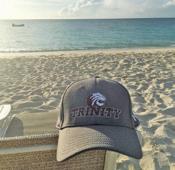
Shelly Story served as associate dean for Student Life at Gonzaga University’s Florence, Italy, campus from 2006–15. In 2015, Story published Prepare for Departure: A Guide to Making the Most of Your Study Abroad Experience, a book to help American students planning to study abroad. Story is now dean of students at Southwestern University in Georgetown, Texas.
Charles “Chuck” Spicer was inducted into Cooper High School’s Hall of Fame. Spicer is the CEO of the University of Oklahoma Medical System.
TRINITY 69 magazine.trinity.edu
Julie Lovelace and her daughter, Sarah Lovelace ’20, sported their Trinity maroon at the Exit Glacier in Seward, Alaska.
Mark Macias shared his #TrinityTravels from Providenciales, Turks and Caicos.
Guido Halder ’96, ’99 served as Trinity’s delegate at the inauguration of John C. Knapp, the 13th president of Washington & Jefferson College, in Washington, Pa., on Oct. 19, 2017. Halder is an assistant professor of German at Washington & Jefferson College.
John Lombardo will be inducted into the Episcopal School of Texas Hall of Fame. Lombardo was captain of the baseball team while at Trinity and is a professional scout for the Boston Red Sox.
1997
Joy Donathan moved to Abu Dhabi in the United Arab Emirates to teach mathematics at a private school for girls.
Hilary Engelhardt attended graduate school at the University of Washington in prosthetics and at the leadership executive MBA program at Seattle University. Engelhardt is a prosthetist and regional director for Hanger Clinic. Engelhardt resides in Seattle with her daughter, Elena, and their puppy, Red.
Beth Horine was promoted to colonel on May 1, 2017, in the U.S. Air Force Reserve. She lives and serves regularly in Germany with the U.S. Air Force in Europe and as NATO Allied Air Command public affairs director.
Robert Horrar was appointed president and CEO of Medical Facilities Corp.
1998
Kevin Beck is the executive director of corporate and foundation relations at the University of Illinois at Chicago.
Chris Glenney was appointed senior vice president of group operations for Christus Health and CEO of Christus Health Northeast in Tyler, Texas. This position was previously held by alumna Lindsey Bradley ’74.
Hilary Halper was appointed CFO of Essilor International in Charenton-le-Pont, France.
Monica Vargas-Mahar was named market chief operating officer at Hospital Providence’s Sierra campus in El Paso, Texas.
1999
Trajan Alistair Cuellar is associate surgeon in the division of plastic surgery at Brigham and Women’s Hospital and is a Stepping Strong Microsurgery Fellow for 2017-18.
Kathryn Norbeck is the executive director of the Child Advocacy Center of the 23rd Judicial District in Charlotte, N.C.
Mary Dale Peterson was named first vice president of the American Society of Anesthesiologists.
Lauren Yates in 2014 co-founded ThinkWell Consulting, a digital and content marketing firm based in Dallas.
2000
Jeff Mueller was promoted to co-portfolio manager of Polen Capital’s Global Growth strategy. Mueller previously served in the U.S. Marine Corps for 10 years and is an adjunct professor at Columbia Business School.
2002
Rich Coffey was recognized as the winner of the Austin 40 Under 40 Award in the financial services and insurance category. He was one of 16 winners from various industries for his work in the Austin business and nonprofit communities.
Maddy Zeringue has worked at Red Bull North America for the past 10 years. This year, she took a new role with its global headquarters in Salzburg, Austria, as head of international communications for the Red Bull Media Network.
Read how Red Bull gave her wings at gotu.us/zeringue
2003
Brooke Blevins was appointed associate chair of the department of curriculum and instruction at Baylor University. Blevins is also an assistant professor in this department, and she is the coordinator of the social studies education program.
Jessica Bodoh-Creed and her husband joined men’s soccer coach Paul McGinlay at the Gold Cup semifinal in the Los Angeles Rose Bowl in July 2017.

Megan Doyle was promoted to co-vice president of rehabilitation at War Memorial Hospital in Sault Ste. Marie, Mich. Doyle received her doctorate in physical therapy from the University of Texas at San Antonio.
2004
Katie Davison was named senior vice president for digital strategy and business development at Minor League Baseball. She is responsible for developing MiLB’s digital strategy, establishing business goals, and building the league’s digital media platforms. Davison joins Minor League Baseball from Learfield, where she served as vice president for digital media, overseeing Learfield’s digital product, operations, and marketing.
Read how Katie is in a league of her own at gotu.us/davison
Faith Fugi was named principal of Elmore Elementary School in Houston. Previously, Fugit worked as a teacher, human resources recruiter, and assistant principal.
Casey Tibbets was named president of Guaranty Bancshares’ new Fort Worth location.
TRINITY 70 Spring 2018
1996
CLASS NOTES Submit your updates online at gotu.us/ alumniupdates Calling all Tiger Alumni!
2005
Tony Smith is the founder of the paddleboard company Jarvis Boards.
2006
Tony Ciola and his business partner, Creed Ford, will open a new location for their restaurant, League Kitchen and Tavern, in 2018. The new location is in Dripping Springs, Texas, with other locations in Lakeway and Avery Park, Texas.
Alaena Hostetter was appointed associate editor of Eater Dallas, an online food publication.
Griffin LeNoir serves as staff aide for Ambassador Sung Kim at the U.S. Embassy in the Philippines.
Finny Mathew was named the 2017 Jefferson County Young Professional of the Year and vice president of the Jefferson County Development Council. Mathew was also named president of INTEGRIS Bass Baptist Health Center in Enid, Okla.
2007
Anna Burhop joined Bracewell’s Policy Resolution Group in Washington, D.C. Previously, Burhop worked at the American Chemistry Council and as a staffer on the Senate Committee on Environmental and Public Works.
Hayley Ellison has joined the business and entertainment law firm Shackelford, Bowen, McKinley & Norton, LLP.
Peyton Elliott was named CEO of HCA Healthcare Gulf Coast Division-affiliated Park Plaza Hospital.
Casey Hill has been named head coach of the Agua Caliente Clippers.
Vanessa Hernandez Kemmy is an associate attorney at the Rosenblatt Law Firm in San Antonio. After graduating from Trinity, Kemmy graduated from St. Mary’s University School of Law on a Dean’s Scholarship. Her practice focuses primarily on transactional matters for the firm.
John Phillips was honored as Education Ambassador of the Year by Mansfield ISD. Phillips serves as president of Methodist Mansfield Medical Center.
Randolph Shelton started a position as an ex vivo lung perfusion specialist at Lung Bioengineering, Inc. Shelton is part of a team conducting a clinical trial dedicated to ex vivo lung perfusion. A successful trial may pave the way toward expanding the supply of available donor lungs for transplant.
BIRTHS
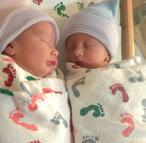
Juliette Louise to Marie Merle Caekebeke ’02 and Laurent Caekebeke
Dec. 6, 2016
Sadie to Jessica Tibbitts Unruh ’06 and Zach Unruh
March 2017
Jonah Sioux to Erika Rodriguez Sauseda ’04 and Ronnie Sauseda
June 16, 2017
Samuel Benjamin to Ben Matthews ’06 and Brittney Matthews
July 27, 2017
Eleanor and Elias to Janet Pursell Norris ’09 and Brandon Norris


June 17, 2017
Ella Clare to Heather Hine Caldwell ’05 and Chris Caldwell ’05 Aug. 17, 2017
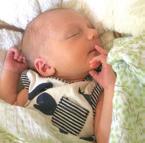
Charles Simeon to Byron French ’02 and Sarah French
Nov. 14, 2017
Jonas Linwood to Richard Johnson ’98 and Ashley Walters
July 7, 2017
Eduardo James to Jeanna Goodrich Balreira ’08 and E. Cabral Balreira
Dec. 4, 2017
TRINITY 71 magazine.trinity.edu
CLASS NOTES
CLASS NOTES SUBMISSIONS
Send your class notes to alumni@trinity.edu or fill out the form at gotu.us/alumniupdates
Photo Submissions: Bigger is better! Digital photos should be saved at high resolution— 300 dpi with dimensions at least 1800 x 1200 pixels.
Email photos to alumni@trinity.edu
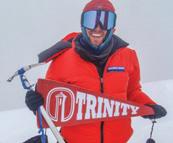
Prints can be mailed to Alumni Relations, One Trinity Place, San Antonio, Texas 78212-7200.

MARRIAGES
Amanda Ong Burke ’11 and Sean Burke ’14, ’15
July 8, 2017
Tisha Temple ’02 and Dawid Korkuś
June 24, 2017
Ruba Ayyat Hall ’06 and James Hall
July 8, 2017
Gillian Stearns-Parr ’04 and Nicholas Parr
Sept. 23, 2017
Save the Date! Alumni Weekend 2018 is Oct. 19-21
Make plans to return to Trinity University to spend a weekend with your classmates and friends.
Learn more at gotu.us/alumniweekend
2008
Pamela Adornato Disney joined the Outten & Golden LLP law firm as a lawyer, working at the Washington, D.C., office.
Joe Dygert works in financial services as the director of Health System Strategy at Harris Health System. Dygert is responsible for the 1115 Waiver program as well as other strategic projects that require financial analysis and decision support.
2010
Roy Finch was appointed CEO of Palestine Regional Medical Center in Palestine, Texas.
Sean Tellez was promoted to assistant principal at the High School for Visual and Performing Arts in Houston after teaching social studies for six years.
Chantal van Esch was hired as an assistant professor of management and human resources at California State Polytechnic University (Cal Poly) in Pomona, Calif.
Christina Wan received the 2017 Advisor of the Year Award at the Georgia State University Royal Flame Awards for her work advising the Comic Book Club. This is part of Wan’s role working in the Multicultural Center at Georgia State University in downtown Atlanta.
2011
Joseph Hilborn submitted Denali, North America’s tallest mountain, on June 27, 2017.
John D. Walker was named COO of Medical City Denton in Denton, Texas.
2012
Laura Husband played Elaine Harper in A.D. Players’ production of Arsenic and Old Lace in Houston.
James Muela joined Bell Nunnally & Martin LLP as an associate lawyer.
2013
Luke Tibbitts graduated dental school from UT Health San Antonio and started a six-year oral and maxillofacial surgery residency at the University of Kentucky in Lexington.
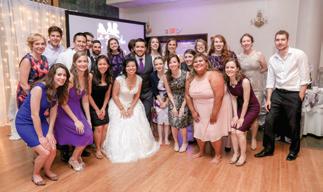
2014
Carlos Anchondo showed his #TigerPride at the Hole-in-theWall at Rialto Beach on the Olympic Peninsula in Washington.

TRINITY 72 Spring 2018
Set In Stone
Memorial planned for Trinitonians who died in Vietnam
 by Jeremy Gerlach
by Jeremy Gerlach
In May 1964, alumni Miles Cortez ’64, Jesse Wisdom ’64, and Al Murphy ’64 were commissioned as U.S. Army officers after completing their ROTC training on Trinity’s campus. Each member of the trio would eventually serve in the Vietnam War.
Wisdom and Murphy never returned home. Both U.S. Army captains and helicopter pilots, Murphy was killed in Binh Duong province in June 1967, while Wisdom died in Thua Thien province in February 1970.
Cortez, now a member of the Trinity University Board of Trustees, is spearheading a campaign to honor Wisdom, Murphy, and all other alumni who gave their lives during the Vietnam War with an on-campus memorial.
“As Trinitonians, we can take pride in these men who volunteered to serve our country,” Cortez says. “Hopefully, this memorial will give students an appreciation of Trinity’s long legacy of service.”
Trinity already has an on-campus plaque dedicated to Thomas Chenault ’69, an Army captain who died in April 1971 in Thua Thien province. Michael Bacon ’89, vice president for Alumni Relations and Development, says the new marker will include Chenault, Wisdom, Murphy, and any other alumni the division can confirm died in Vietnam. Trinity continues to diligently check all submitted names for eligibility.
“Trinity is like a big family,” Bacon says. “If you know a Trinity graduate who meets these criteria, we need you to tell us, so the whole community can remember what they did.”
Cortez remembers Murphy and Wisdom well. The three were classmates in ROTC—mandatory for all able-bodied male Trinity first-years and sophomores in the 1960s.
“Jesse Wisdom was this wonderful, gregarious, popular football player from New Braunfels,” Cortez recalls. “Murphy, from San Antonio, was a good student and much more gung-ho about ROTC.”
After the two-year ROTC mandate, many Trinity students, such as Murphy, Wisdom, and Cortez, preferred to stay in the program voluntarily to serve as commissioned officers instead of entering the military through the draft, Cortez explains.
But during the decades following his service, Cortez had no idea his classmates hadn’t made it out of Vietnam. Cortez found out about Murphy and Wisdom at a class reunion when the organizer of the event called for a moment of silence to commemorate all classmates who had passed away and included the pair’s names.
Now, Cortez wants the planned marker to serve as more than a list—he wants the memorial to serve as inspiration for current students to make time for service.
“Back in my day, the Peace Corps was just getting started, other patriotic nonprofits had yet to be founded, so the military was how many served,” Cortez says. “It’s important for today’s students to recognize the contributions that Trinity people like Wisdom and Murphy made.”
TRINITY 73 magazine.trinity.edu ALUMNI NEWS
Have information about Trinity alumni who died in Vietnam? Please contact Alta Compton, donor relations officer in Alumni Relations and Development, at 210-999-8075 or acompton@trinity.edu.
“As Trinitonians, we can take pride in these men who volunteered to serve our country.”
Many Hands Make Light Work
Anyone who has been on campus for Tiger Move-In Day and watched the many hands of Team Trinity swarm the cars of students arriving on campus knows the truth of the proverb, “Many hands make light work.” Staff, faculty, and alumni welcome students and families on hot summer days to empty cars and fill residence hall rooms in minutes.
In 2016, Trinity introduced a new program designed to ease the transition of first-generation college students by bringing some of them to campus a few weeks early. Sheryl Tynes, vice president of Student Life, told the Alumni Association Board the program had tremendous success; Trinity would repeat the act in 2017. The only difference was that these 60-plus students did not have Team Trinity to help move them into the dorms.
Members of the Alumni Association Board believe students are “one of us” the day they step foot on campus as a student. And with that comes help with moving in, even if it’s early. So on Aug. 6, three weeks before the main Tiger Move-In Day, a smaller Team Trinity welcomed this first group of new Tigers. About 50 members of the staff, faculty, the Tiger football team, and alumni met students and their families to help them get settled on campus.
I enjoyed chatting with parents from Colorado, helping them find a good frozen margarita in town. One student from Virginia arrived from the airport with just two suitcases, taking the prize for the easiest move. Helping another student from my native Louisiana, I remembered how excited I was when I moved in 33 years before. And I realized, while walking through my old hall, how each new class revitalizes the buildings they will come to inhabit, the places I lived, the University we will share as our alma mater. It was hot and exhausting work, but there was no place we would rather be than on hand to welcome this next generation of Tigers.
– Patrick Pringle ‘87
Pitch Perfect
Trinity University Board of Visitors assist four short-term campus projects
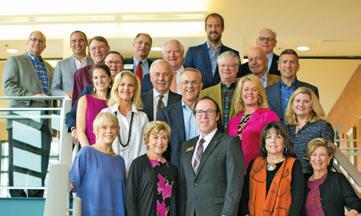
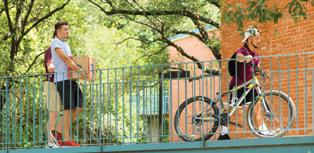 by Molly Mohr Bruni
by Molly Mohr Bruni
Four small-scale projects selected by Trinity University’s Board of Visitors are expected to make a big impact on campus this semester.
The four projects—an experiential learning partnership, a University archiving project, a mock trial club, and a student-run campus magazine—were the finalists of the Board’s second-annual “pitch party,” a concept that developed from the restructuring of the Board’s mission in 2016. In the fall 2017 semester, the Board called for proposals for small, scalable, short-term projects in the Trinity community that would benefit from the expertise and diverse background of the Board members. Ten groups applied, with six making it through to the pitch party.
At the pitch party in October, held during the Board’s meeting on campus, representatives from each project described their proposal, its intended benefits to the Trinity community, and the assistance they needed from the Board, which included strategic advice and funding.
A mix of faculty, staff, and students lead the various projects on campus. A partnership between Business Analytics and Technology and the Center for Experiential Learning and Career Services aims to find more medium-size companies with large data sets that students can analyze for classroom-based projects. Trinity University Special Collections and Archives is undertaking an effort to collect and display photos and memories from alumni in anticipation of the University’s 150th anniversary in 2019 (read more on page 14). The Mock Trial Club, a student-run organization, requested assistance establishing a stable budget to afford competition fees and other expenses, and the Trinity Review, a student-run campus magazine, asked for strategic marketing advice to expand its footprint and brand on campus.
Each partnership should bring reciprocal benefits to both the Board and the project, says Board chairman Philip Wetz ’73. “We hope that students involved will learn from successful alumni working in a wide range of professions,” Wetz said. “In return, the Board members’ passion for supporting Trinity should grow as a result of interacting with the talented young adults that comprise Trinity’s student body.”
Trinity University’s Board of Visitors is a group of committed volunteer leaders who provide ongoing advice to the President. Members include alumni and experienced civic leaders. Learn more at gotu.us/BoV
TRINITY 74 Spring 2018 ALUMNI NEWS
Trinity University’s 2017-18 Board of Visitors Alumni helped first-generation students move in to their residence halls on a special move-in day.
ALBUQUERQUE
Alumni and friends from the Albuquerque Chapter enjoyed a night at the ballpark in a personal suite, courtesy of Modrall Sperling Law Firm, watching the Isotopes take on the Fresno Grizzlies on June 16. On Aug. 13, alumni, current students, and families gathered at the Tennis Club of Albuquerque and bid a “Summer Sendoff” to first-year Tigers.
ATLANTA
Alumni and their families enjoyed an educational and fun behind-the-scenes tour at Zoo Atlanta on June 10. Atlanta alumni cheered Tiger Football on to victory at Birmingham Southern on Sept. 30 and Sewanee on Oct. 21.
AUSTIN
On Sept. 19, the Austin Chapter held a “Welcome to Austin” happy hour at Lustre Pearl East celebrating the class of 2017. Austin
Chapter alumni met at Hotel Ella on Sept. 26 for a discussion of the 2017 Reading TUgether book, Evicted: Poverty and Profit in the American City
BAY AREA
On July 8, Bay Area alumni enjoyed a guided tasting at Siduri Wine Lounge by winery owner Adam Lee ’87. Alumni in the Bay Area gathered on Nov. 4 at Bare Bottle Brewery for beers and networking.
CHICAGO
Alumni had a fun evening playing ping pong and networking at AceBounce on May 2. On Aug. 24, alumni ranging from the classes of 1984–2017 networked at Black Iron Tavern.
DALLAS
Alumni, parents, and prospective students enjoyed a magical evening on April 21 listening to Trinity’s premier choral ensem-
ble, under the direction of Gary Seighman, along with acclaimed organist David Heller, as they performed choral and organ works. Alumni and their families enjoyed a beautiful spring day on April 23 cheering for the Frisco RoughRiders. The Trinity University Alumni Association welcomed Class of 2017 graduates living in Dallas with a tour and tasting at Community Beer Co. on June 10. Alumni and their guests laughed away the heat with Josh Wolf ’93 at the Improv on July 29.
DENVER
On Aug. 31, Denver Chapter alumni gathered at the home of Wendy and Jack Trigg, parents of Chapter President Bob Trigg ’84, to meet Hugh Daschbach ’95, Trinity’s former senior director of Alumni Relations. On Sept. 28, the Chapter held an alumni party at 10 Barrel Brewing Company with food, brews, and great conversation.
HOUSTON
The Houston Chapter held a “Welcome to Houston” happy hour on June 8 at Heights Bier Garten to celebrate the class of 2017.
GREATER LOS ANGELES
On July 16, Chapter alumni gathered at Angel City Brewery to hang out over cold beers with fellow alumni in the area.
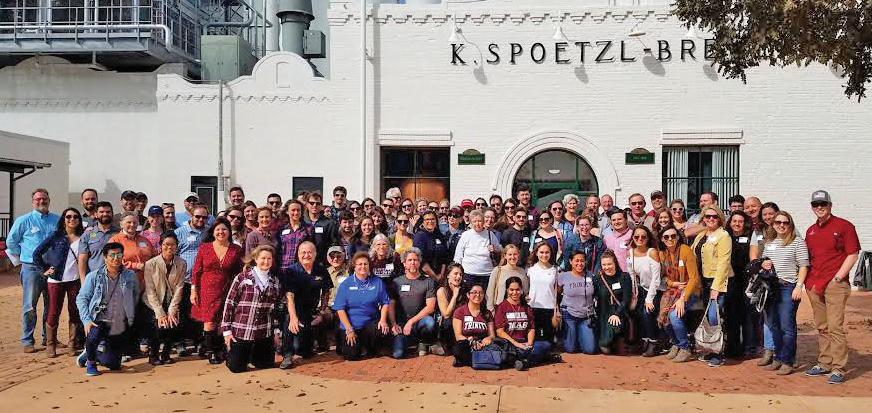
NATIONAL CAPITAL AREA
On May 9, alumni ranging from the classes of 1982–2016 enjoyed a lively conversation at the District ChopHouse with Richard Butler, Trinity professor emeritus of economics, and Andreas Lehnert ’91, director of the division of financial stability of the Federal Reserve Board. Alumni helped package food and deliver packages to clients’ cars at ALIVE (ALexandrians InVolved Ecumenically) on June 24.
TRINITY 75 magazine.trinity.edu CHAPTER ACTIVITIES
Chapter activities listed between April 1 - Nov. 1, 2017.
Alumni and friends from three cities—Austin, Houston, and San Antonio—rode on chartered buses for the “Meet in the Middle” Trinity alumni mixer at Spoetzl Brewery in Shiner, Texas. They had a blast experiencing two Texas legends: Shiner Beer and Smitty’s BBQ.
NEW ENGLAND
Luis Martinez ’91, director of entrepreneurship at Trinity, met with alumni at Firebrand Saints in Cambridge for happy hour on June 28.


NEW YORK
The New York Chapter kicked off summer with a happy hour at Habana Outpost on June 22 with refreshing beverages, Brooklyn’s best cubano, and a front-row seat to Fort Greene street life. On Aug. 5, alumni met Jeremy Wolf ’16, outfielder for the Brooklyn Cyclones, and Hugh Daschbach ’95, Trinity’s former senior director of Alumni Relations. New York-area alumni gathered on Sept. 28 at The Strand Smokehouse for a happy hour and barbecue. Kate Davies ’08 opened YO BK, her boutique fitness space offering Bikram yoga, power yoga, and inferno hot pilates, to the New York Alumni Chapter on Oct. 17. Alumni met for happy hour in Brooklyn
on Oct. 26 at St. Gambrinus Beer Shoppe; the evening included reminiscing about Trinity days.
OKLAHOMA CITY
Alumni from the classes of 1976–2005 enjoyed happy hour on May 11 on the porch of Mama Roja overlooking Lake Hefner. On Sept. 12, alumni met to discuss the 2017 Reading TUgether book, Evicted: Poverty and Profit in the American City. The conversation was both compelling and insightful. The Chapter held a happy hour at Martini Lounge on Oct. 26 to relax and enjoy the company of Trinity friends.
PORTLAND
Portland Chapter alumni and friends celebrated Cinco de Mayo over dinner at Aztec Willie’s on May 13. On July 22, Chapter alumni enjoyed a night at the ballpark watching the Hops take on the Spokane Indians.
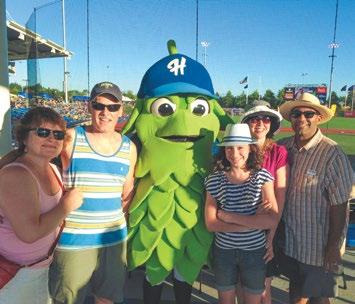

SAN ANTONIO
Alumni and friends celebrated Fiesta while watching the Texas Cavaliers River Parade and cheering for the Trinity float on April 26. More than sixty alumni and their guests enjoyed a pre-show gathering at the Market on Houston before attending the performance of Finding Neverland at the Majestic Theatre on May 2. The Chapter held a workshop on estate planning on May 20 led by Gina Gaedke ’89. Alumni and their families received a behindthe-scenes tour at Sea World on May 20 where attendees had the opportunity to see a baby beluga whale, feed stingrays, and watch the new orca show. Alumni and their guests networked at Brick at Blue Star on June 13. On July 30, alumni and their families enjoyed a tour of Trinity’s City Vista apartment complex and a splash in the pool on a hot summer afternoon. Alumni,
parents, and current students kicked off the school year with margaritas at Tycoon Flats on Aug. 24. On Sept. 9, alumni and their guests enjoyed a docent-led tour of the San Antonio Museum of Art exhibition “Heaven and Hell: Salvation and Retribution in Pure Land Buddhism.” Trinity alumni and their families experienced horse, camel, and ostrich racing at Retama Park on Sept. 23. Trinity’s own Susan Moulton ’84 enjoyed the Chapter’s congratulations in the Winner’s Circle with one of her horses, Vapor Viper. Alumni and guests gathered at Fralo’s for dinner in North San Antonio on Oct. 21. On Oct. 24, alumni met at Kunstler Brewing for their first business and entrepreneur networking event for the 2017-18 year, hosted by Ogba, where alumni engaged with David Girault ’91, current entrepreneur-in-residence at Trinity. Alumni and their families enjoyed cheering on
TRINITY 76 Spring 2018
ACTIVITIES
from left Albuquerque Chapter alumni and their families gathered to cheer on the Albuquerque Isotopes. Portland Chapter alumni and their families posed with Barley, the mascot for the Hillsboro Hops baseball team. San Antonio Chapter alumni and friends enjoyed mingling before the Fiesta Texas Cavaliers River Parade. Dallas Chapter alumni and recent graduates gathered for a tour and tasting at Community Beer Co.
CHAPTER
student-athletes taking part in the Trinity Texas Invitational Volleyball Tournament on Trinity’s campus on Oct. 27 where the Tigers were victorious that evening over the University of Texas at Dallas Comets.
ST. LOUIS
On July 16, alumni, students, and parents celebrated National Ice Cream Day with a get-together at the home of Allison Hawk ’88, P’19. On Aug. 3, alumni and parents heard from Carolyn Becker, professor of psychology at Trinity, about the Body Image project and the tremendous ways Trinity undergraduates have impacted it for nearly 20 years. The chapter sends a special thank you to Trustee Michael Neidorff ’65 and his wife, Noemi, for hosting. Alumni and guests from the St. Louis Chapter cheered on the Cardinals as they played the Atlanta Braves on Aug. 13 at Busch Stadium from
Neidorff’s reserved suite. On Sept. 23, Trinity alumni and their families gathered at the St. Louis Zoo to enjoy a sea lion show, the stingrays at Caribbean Cove, and an animal tour experience followed by lunch. The group received a special treat with a tour of the new Centene Grizzly Ridge, thanks again to Neidorff. Trinity friends came together on Oct. 5 at the home of Mike ’78 and Judy Henges to enjoy fall cocktails by the pool. The Chapter extends special thanks to Galve Deleste ’15 who provided a special wine tasting, courtesy of Southern Glazer’s Wine and Spirits.
clockwise from left New York Chapter alumni met Jeremy Wolf ’16 after the Brooklyn Cyclones game on Aug. 5. Atlanta Chapter alumni and their families received an educational and fun behindthe-scenes tour at Zoo Atlanta. Chicago Chapter alumni enjoyed a fun evening meeting and catching up while playing ping pong at AceBounce. St. Louis Chapter alumni and guests cheered on the Cardinals on Aug. 13 at Busch Stadium from the reserved suite of Trinity Trustee Michael Neidorff ’65. National Capital Area Chapter alumni enjoyed listening to Richard Butler, professor emeritus of economics, and Andreas Lehnert ’91 at the District ChopHouse.
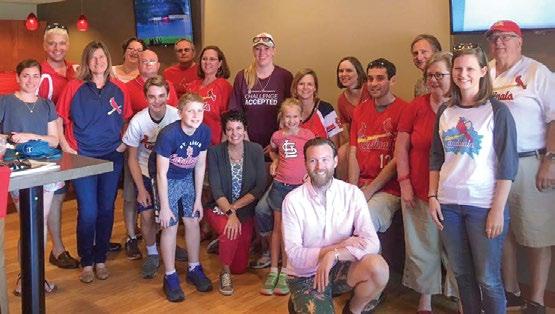
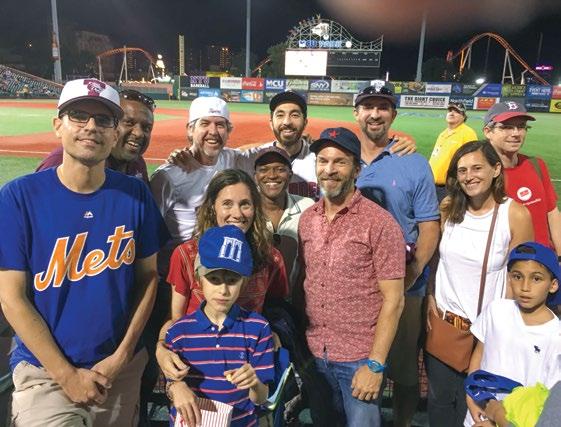

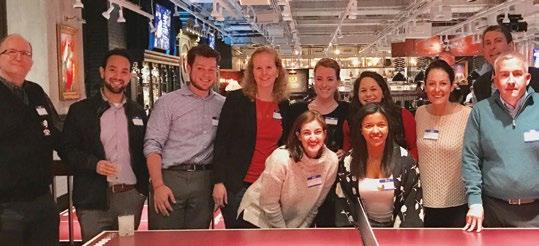

TRINITY 77 magazine.trinity.edu
Your Trinity Alumni Chapters
There’s a chapter near you! If you would like to be involved in chapter activities or to serve on the Board, contact your nearest chapter president or check out chapter pages at gotu.us/alumnichapters
Albuquerque
Sal Perdomo ’13 salvatorperdomo@gmail.com albuquerque@alum.trinity.edu
Atlanta
Jeff Winland ’97 jeff.winland@hawcpa.com atlanta@alum.trinity.edu
Austin Lydia Valdes ’95 lvaldes@austin.rr.com austin@alum.trinity.edu
The Bay Area Brittney Elko ’08 brittney.elko@gmail.com thebayarea@alum.trinity.edu
Central Florida Network Matt Giles ’07 mggiles@gmail.com
Charlottesville, Va. Network Allison Wright ’01 allisonwright27@gmail.com
Chicago
Julianne Hatfield ’07 jkhatfield@gmail.com
Melissa Zeman ’07 mharmany@gmail.com chicago@alum.trinity.edu
Cleveland, Ohio Network Tim Gibbons ’85 tfgibbons@gmail.com
Colorado Springs Network
Kim Newberry ’93 kdnwbrry@yahoo.com
Brianna Tammaro ’13 brianna.tammaro@gmail.com
Columbus, Ohio Network
Duane Weaver ’79 dweav1265@gmail.com
Dallas
Hannah Thai Tupper ’10, ’13 hthaitupper@gmail.com dallas@alum.trinity.edu
Denver
Bob Trigg ’86 bob@gtinjurylaw.com colorado@alum.trinity.edu
Fort Worth
Lindsay Landgraf Hess ’11 lindsaylhess@gmail.com ftworth@alum.trinity.edu
Houston
Karyn Hall ’11 karynhall814@gmail.com houston@alum.trinity.edu
Kansas City Network
Bill Keith ’08 bill.r.keith@gmail.com
Charles Joseph ’84 charlesejoseph@icloud.com
Los Angeles
Karen Fisher ’10 karenfisher17@gmail.com losangeles@alum.trinity.edu
Metro Phoenix
Tara Zoellner ’01 tzoellner@gmail.com arizona@alum.trinity.edu
Nashville, Tenn. Network Vacant – if interested, please email alumni@trinity.edu
National Capital Area
Sarah Causer ’11 sarah.causer1@gmail.com nationalcapitalarea@alum. trinity.edu
New England (includes New Hampshire, Vermont, Maine, Massachusetts, Rhode Island, and Connecticut)
Kelley McGill ’14 kelleysmcgill@gmail.com
Chris Crawford ’10 chriscrawford.jr@gmail.com newengland@alum.trinity.edu
New York
Helen Harris ‘92 hharris10@nyc.rr.com newyork@alum.trinity.edu
North Carolina Network
John Papazian ’04 john.papazian@gmail.com
Anthony Rodriguez ’05 ajrodrig@gmail.com
Oklahoma City
Emily Bowlby ’05 emily.bowlby@gmail.com
Jenny Richard ’97 jennyarichard@yahoo.com oklahomacity@alum.trinity.edu
Portland
Leslie Wilkins ‘06 namroxx@gmail.com portland@alum.trinity.edu
Rio Grande Valley Network
Josh Yost ‘96 jyost1@rgv.rr.com
San Antonio Derick Rodgers ‘92 drodgers@lawdcm.com sanantonio@alum.trinity.edu
San Diego
Megan McClurg ’98 meganalysa@gmail.com sandiego@alum.trinity.edu
Seattle
Erin Perry ’06 erincrosbyperry@gmail.com seattle@alum.trinity.edu
St. Louis
Allison Hawk ’88, P ’19 allison@ahcconsulting.com stlouis@alum.trinity.edu
Tulsa Network Jaclyn Metcalf ’08 jaclyn.metcalf@gmail.com
Alexa Harrison Maloney ’12 alexanharrison@gmail.com Jason Maloney ’11 jason-maloney@utulsa.edu
West Texas – Abilene Network Jed Crowe ’85 jed@crowegroup.biz
West Texas – Lubbock Network Caroline Kopp ’79 caroline.kopp@att.net
Lindsay Bean ’09, ’11 lindsay.b.bean@gmail.com
West Texas – Midland-Odessa Network Sara Burleson ’81 saraburleson4@gmail.com
Shelby Landgraf ’07 shelbyllandgraf@gmail.com
For more information on Alumni Chapters and Network Cities, call Alumni Relations at 210-999-8404.
TRINITY 78 Spring 2018
The Commentary section of Trinity magazine was introduced in 1997 as a place for alumni to share creative writing, and Denise Barkis Richter was its first author. Welcome back, Denise! If you have commentary you’d like to share, email jgoodri1@trinity.edu.
Sammye Johnson: Teacher and mentor extraordinaire
When I walked into Sammye Johnson’s “Reporting I” classroom in Northrup Hall in the fall of 1980 and saw a sea of IBM Selectric typewriters stretched out before me, I knew I was in trouble.
I did not take typing in high school because only girls who wanted to be secretaries took typing, and I knew that I did not want to be a secretary. I wanted to be the next Barbara Walters or Jane Pauley.
I sat down at one of the work stations and tried not to let panic overtake me. Sammye, who was new to Trinity after working for a decade in the magazine industry, passed out her extraordinarily detailed course syllabus and explained what the semester would entail: lots of writing along with weekly quizzes over the assigned textbook chapters and current events.
In the final 15 minutes of class, Sammye told us to write our obituary. Sitting next to me, Wendy Rigby rolled a sheet of paper into the Selectric and started typing at what seemed like a million words per minute. I sat there stunned, wanting to vomit, but I worked up the courage to walk up and talk to Sammye at the front of the classroom.
“I’m sorry,” I whispered above the din of the typewriters. “I don’t know how to type. I can write my obituary by hand for you.”
“Okay,” replied Sammye, a Northwestern University journalism graduate, “but you better learn how to type.”
And learn to type I did. Lord knows I got plenty of practice in the four courses I took from Sammye: “Reporting I,” “Reporting II,” “Layout & Design,” and “Magazine Writing.”
I took every single course that Sammye offered because she was the first professor I ever had who worked as hard as we did. She was a taskmaster, setting the bar extremely high but helping us leap over it. Our stories came back covered up with red ink.
Sammye pushed us to interview the most well-informed sources we could find, refine our leads, strengthen our verbs, rid our writing of passive voice, focus on interesting details, and meet deadlines. In short, Sammye Johnson turned us into reporters and writers.

TRINITY 79 magazine.trinity.edu
words by Denise Barkis Richter ’83 illustrations by Katy Freeman ’16
COMMENTARY
She gave us the confidence to believe we had what it took to succeed in this demanding profession. She pushed us to be our best.
Woe to the student who had any error of fact in his or her writing. Sammye wanted us to understand at our core that journalists had to be 100 percent accurate at all times. We could not play loose with the facts. Our credibility was at stake. Democracy was at stake. Even if the story was good, Sammye awarded the offending student an F. Tough love. We learned from our mistakes.
Sammye also turned us into responsible citizens. By having us read a daily newspaper in its entirety, she made us pay attention to the issues that had local, regional, and global impact. She stoked our curiosity to learn why the world works the way it does and to question the status quo.
Not only did Sammye teach us in the classroom, but she also advised and mentored us outside the classroom. When I decided to spend my junior year of college in Madrid, Spain, Sammye stayed in touch via aerogrammes, letting me know which classes I should take my senior year and why I should write for the Trinitonian
When I graduated from Trinity, Sammye recommended me for my first job. She also wrote letters of recommendation for both my master’s degree and doctoral degree programs. She helped me brainstorm my dissertation topic, and she’s given me advice on my own college teaching career and book contract.
When my daughter went off to college, I said to her, “Find your Sammye.”

The importance of finding someone to mentor you cannot be overstated. Also, your mentorship of those coming up is critically important. At its essence, mentoring is community service, providing an opportunity to pass on the knowledge and experience that you’ve received.
At her retirement party in May 2016, a celebration of Sammye’s more than 35 years of teaching at Trinity, student after student shared stories of how Sammye’s mentorship had shaped their lives for the better.
That’s certainly the case for me, and it’s why whenever I introduce someone new to Sammye I always say, “This is the woman who taught me everything I know.”
I will be forever grateful that Trinity put Sammye Johnson on my path.
Denise Barkis Richter ’83, author of 100 Things To Do in San Antonio Before You Die, has been blogging about San Antonio since June 2010. Her love affair with the Alamo City began at HemisFair in 1968 and was cemented during her undergraduate years at Trinity. This is Denise’s twentieth year of teaching mass communication and journalism at Palo Alto College, one of the Alamo Colleges.
Connect with Denise online at facebook.com/SanAntonioTourist
TRINITY 80 Spring 2018
“Sammye Johnson gave us the confidence to believe we had what it took to succeed in this demanding profession. She pushed us to be our best.”

Office of Alumni Relations | 210-999-8404 | alumni@trinity.edu Trinity on Tour Trinity on Tour is coming to Washington, D.C. The national event includes... Exclusive behind-the-scenes tour of the John F. Kennedy Center for the Performing Arts Keynote by Dirk Elmendorf ’97 and Pat Condon ’93-’94, two of the Rackspace co-founders State-of-the-University Address by President Danny J. Anderson “Classes without quizzes” with award-winning Trinity faculty Happy hour reception hosted by President Anderson Saturday, April 21, 2018 To view a full schedule and register, visit gotu.us/TrinityOnTour
One Trinity Place
San Antonio, TX 78212-7200
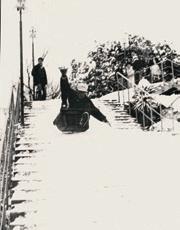
CHANGE SERVICE REQUESTED
The Big Snow
January 1985 saw San Antonio’s last big snowfall—until December 2017. The 1985 Mirage read, “In January, we had a special treat, although the rest of San Antonio might have called it a trick. Thirteen inches of snow fell and made for all sorts of amusements. Brave souls slid down the SUB’s stairs, transforming humble Refectory trays into sleds, while giant Yeti sprang up everywhere.”
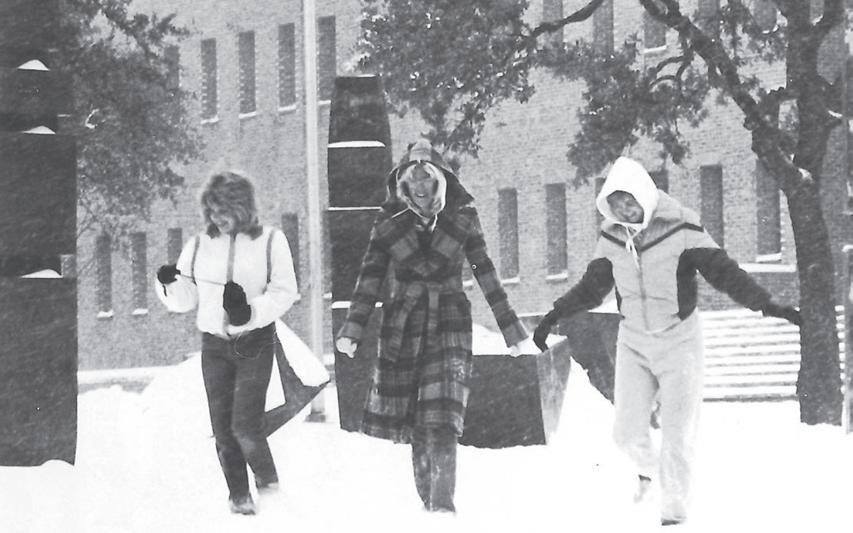
See more 2017 snow day photos on page 11.
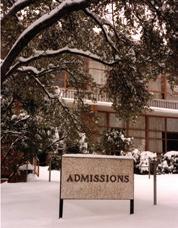

















 Photo by Mark Mulligan for the Houston Chronicle. Used with permission.
Photo by Mark Mulligan for the Houston Chronicle. Used with permission.








 – Alex (and Elena) Serna-Wallender ’08
– Alex (and Elena) Serna-Wallender ’08





 by Susie P. Gonzalez
by Susie P. Gonzalez









































 introduction by Char Miller
introduction by Char Miller



 Madeleine Budnick
Madeleine Budnick









 words by Molly Mohr Bruni
words by Molly Mohr Bruni




























 words by Jeremy Gerlach
photos by Anh-Viet Dinh ’15 and Jeanna Goodrich Balreira ’08
words by Jeremy Gerlach
photos by Anh-Viet Dinh ’15 and Jeanna Goodrich Balreira ’08







 words by Jeremy Gerlach photos by Anh-Viet Dinh ’15
words by Jeremy Gerlach photos by Anh-Viet Dinh ’15






























 by Jeremy Gerlach
by Jeremy Gerlach

 by Molly Mohr Bruni
by Molly Mohr Bruni















